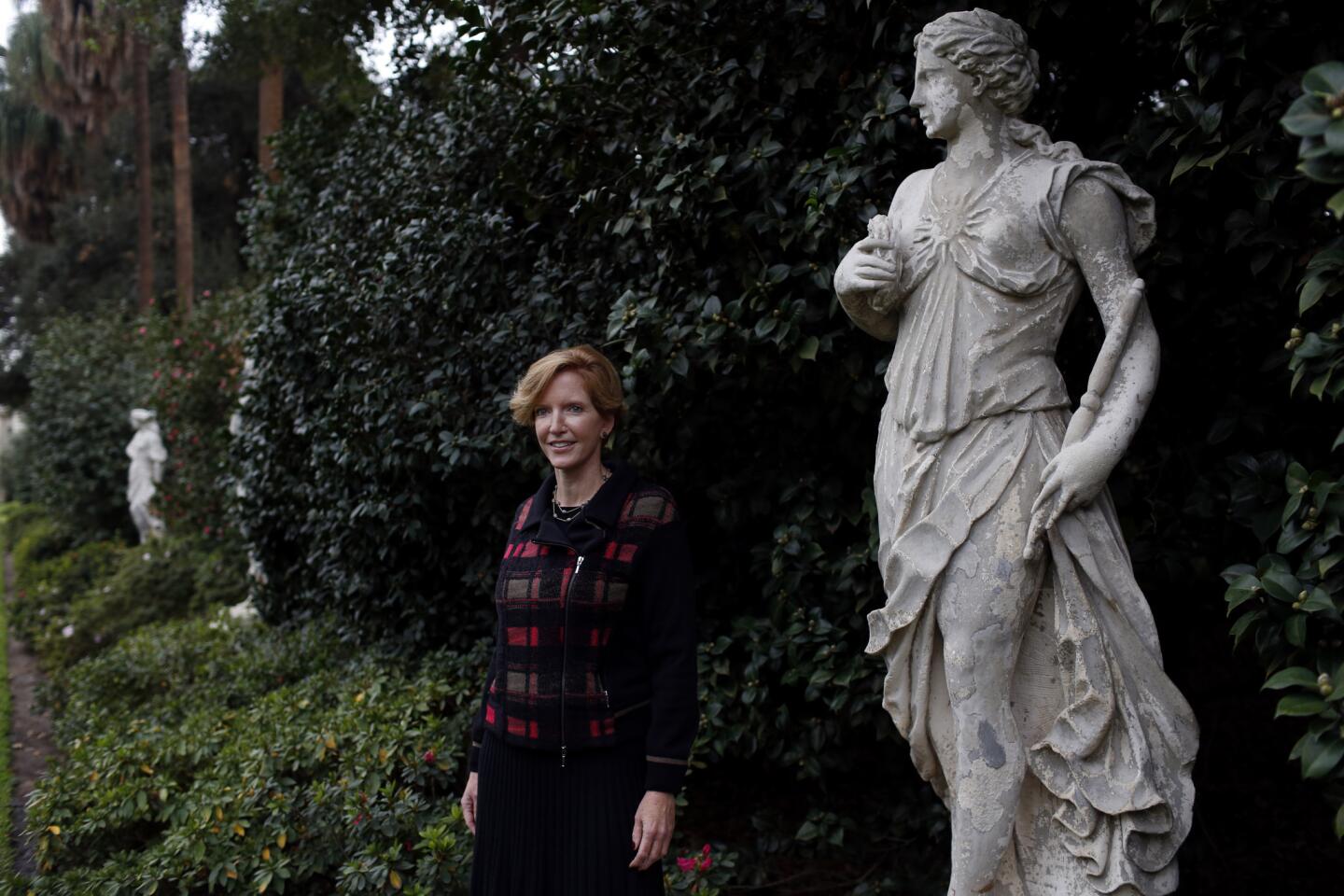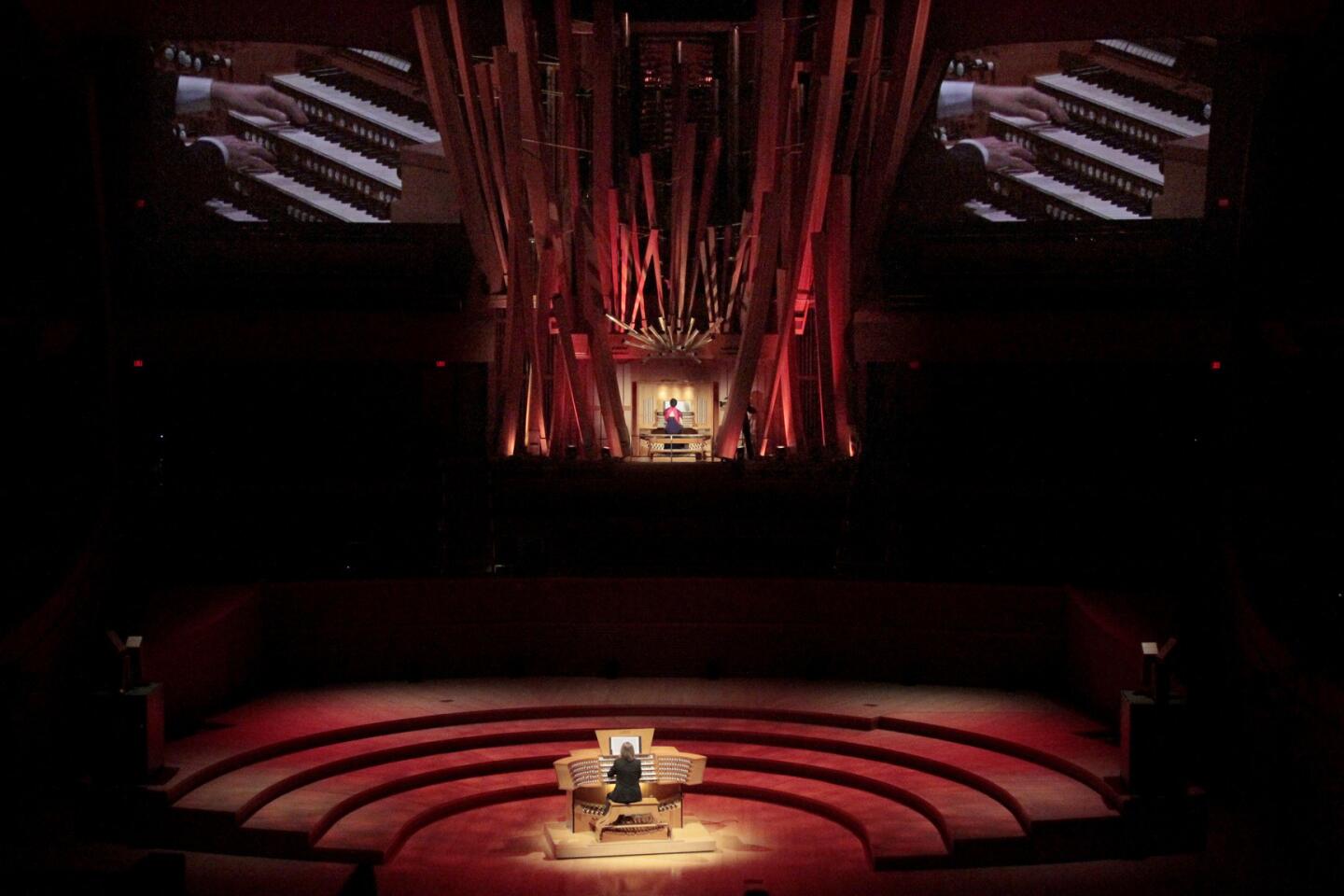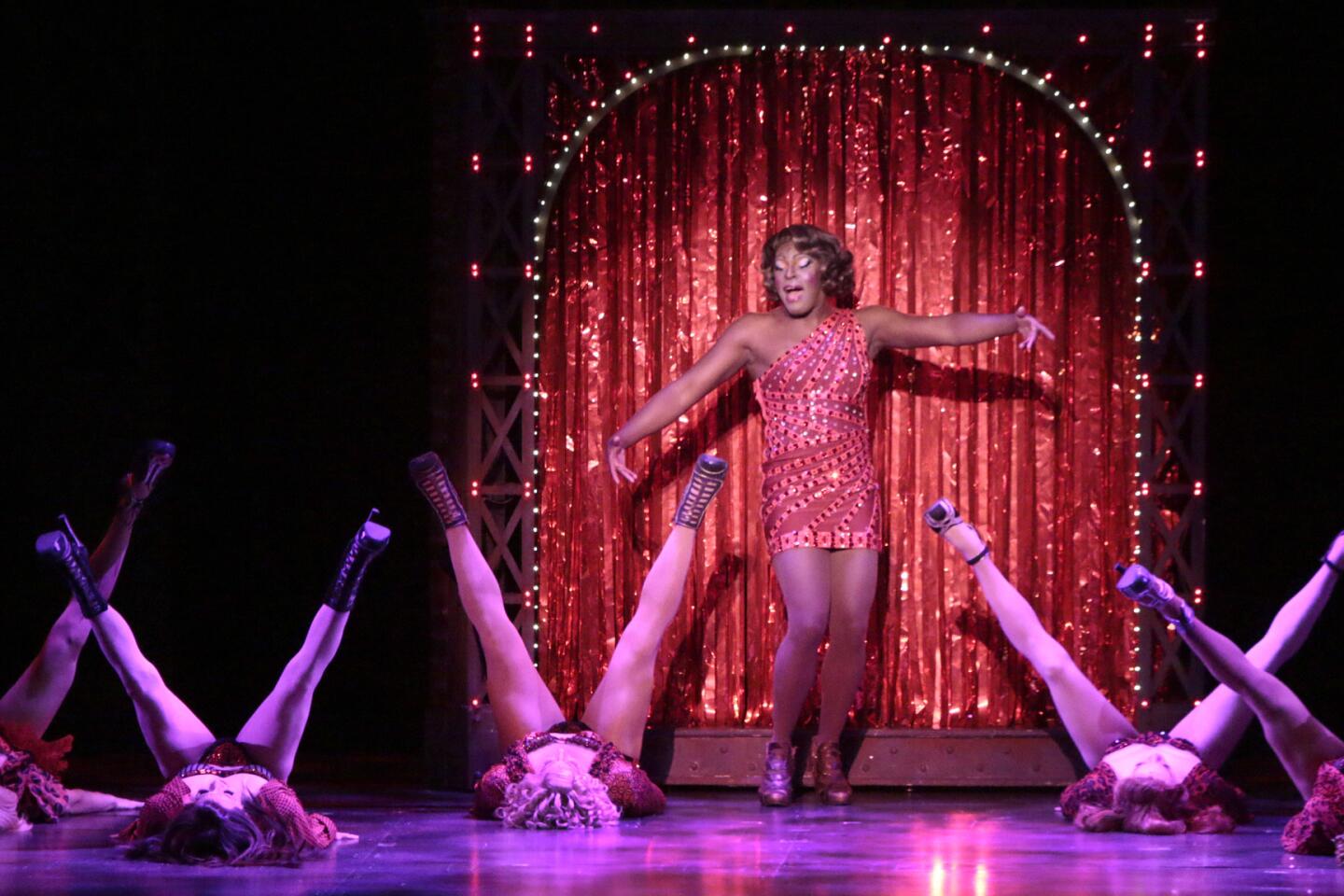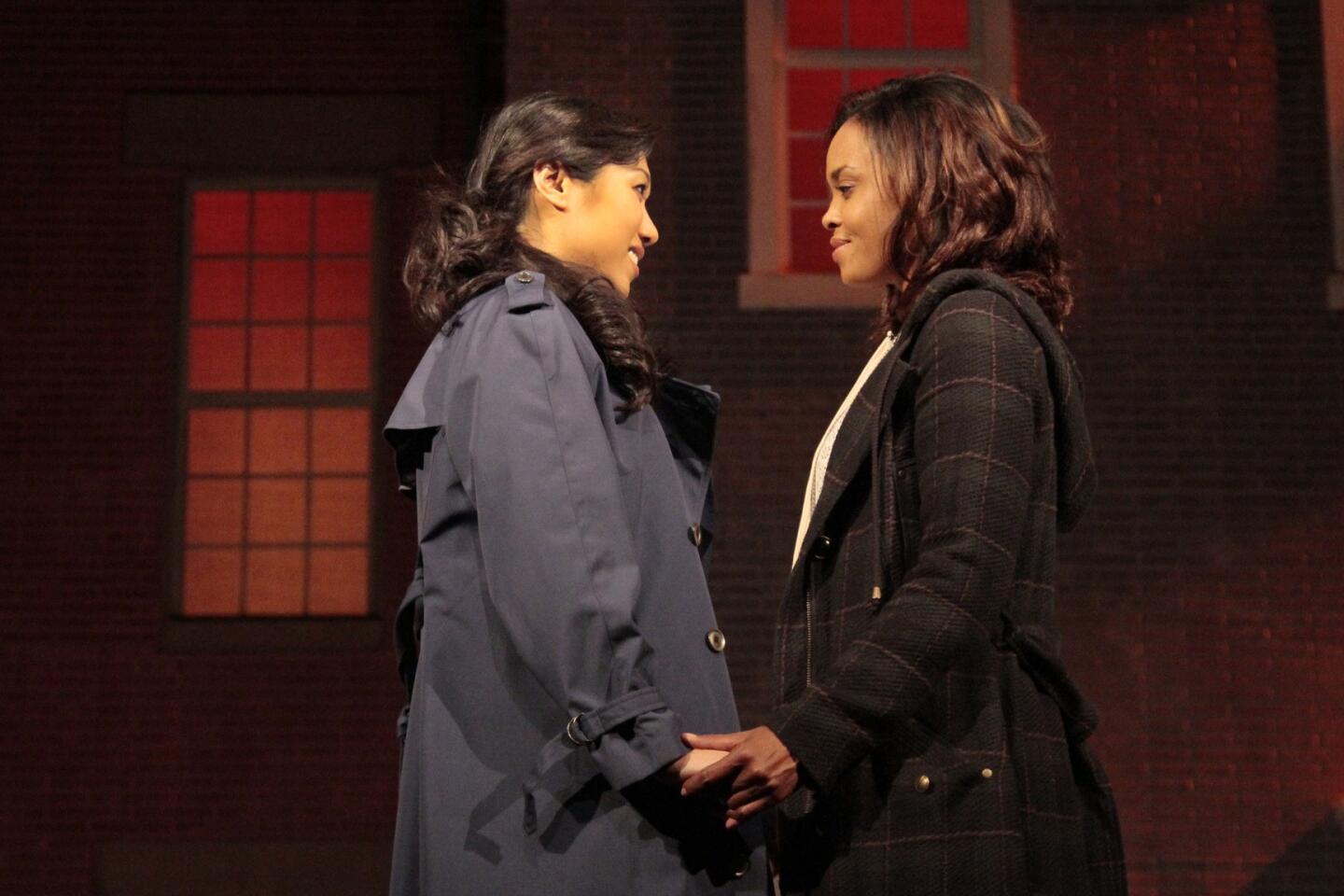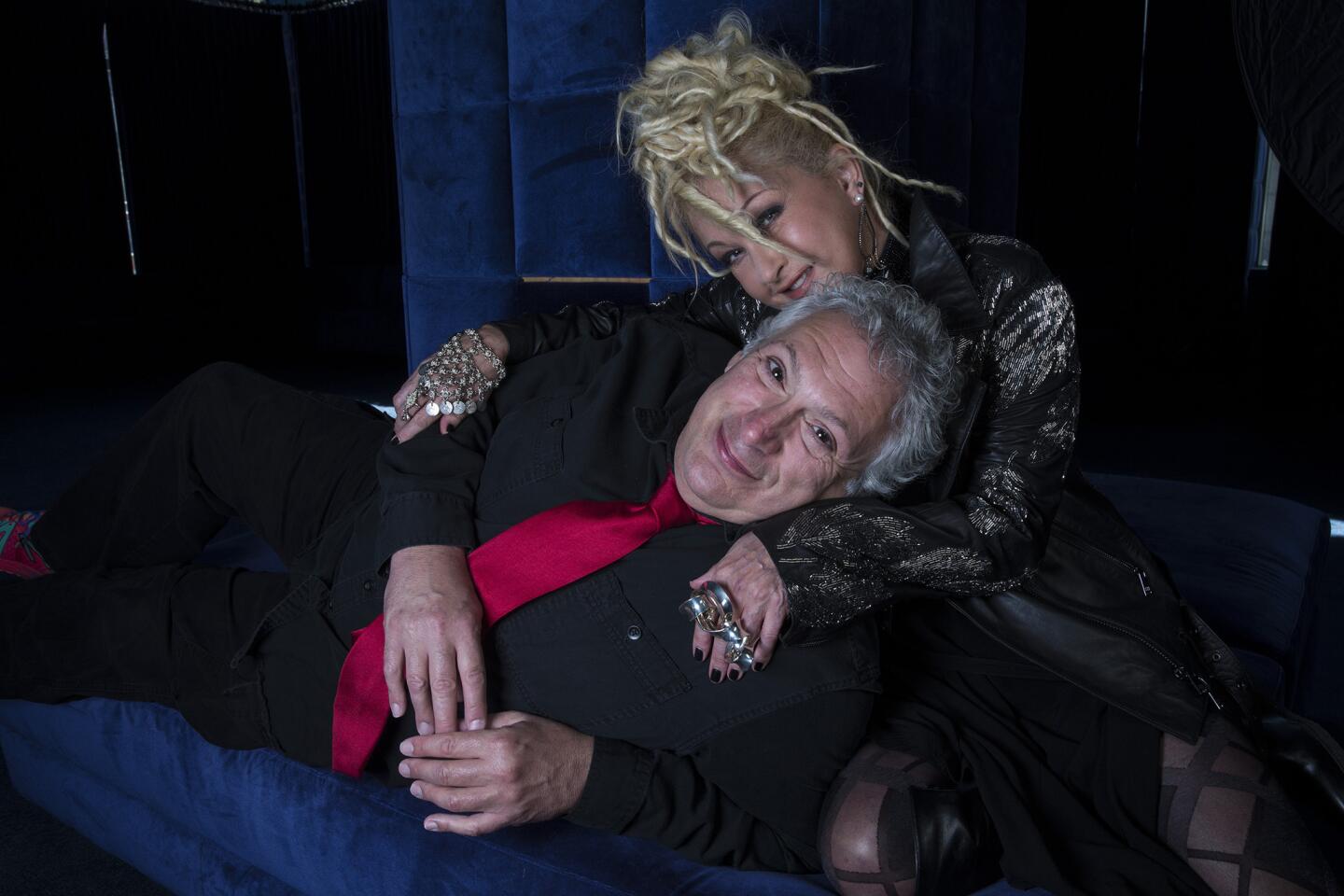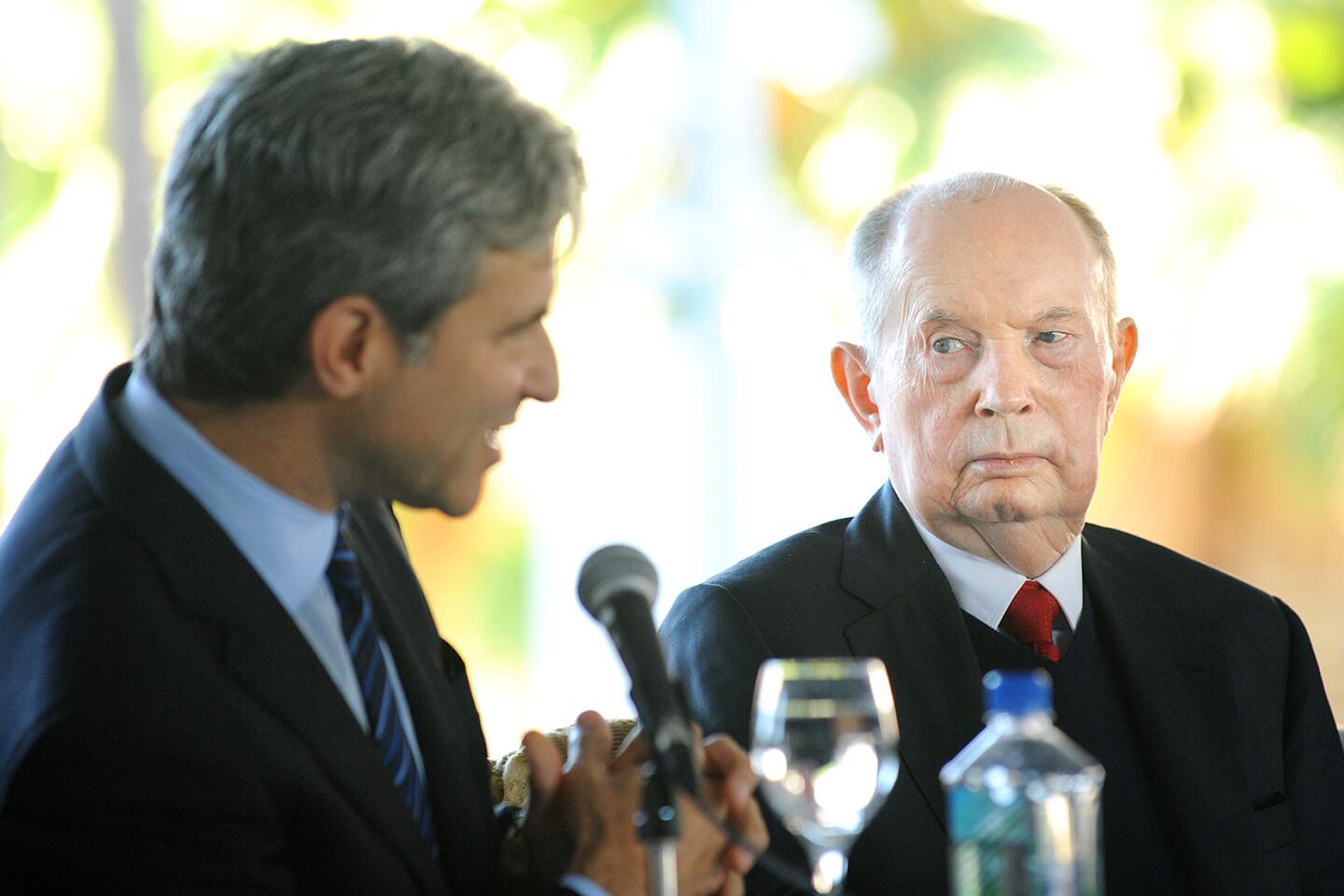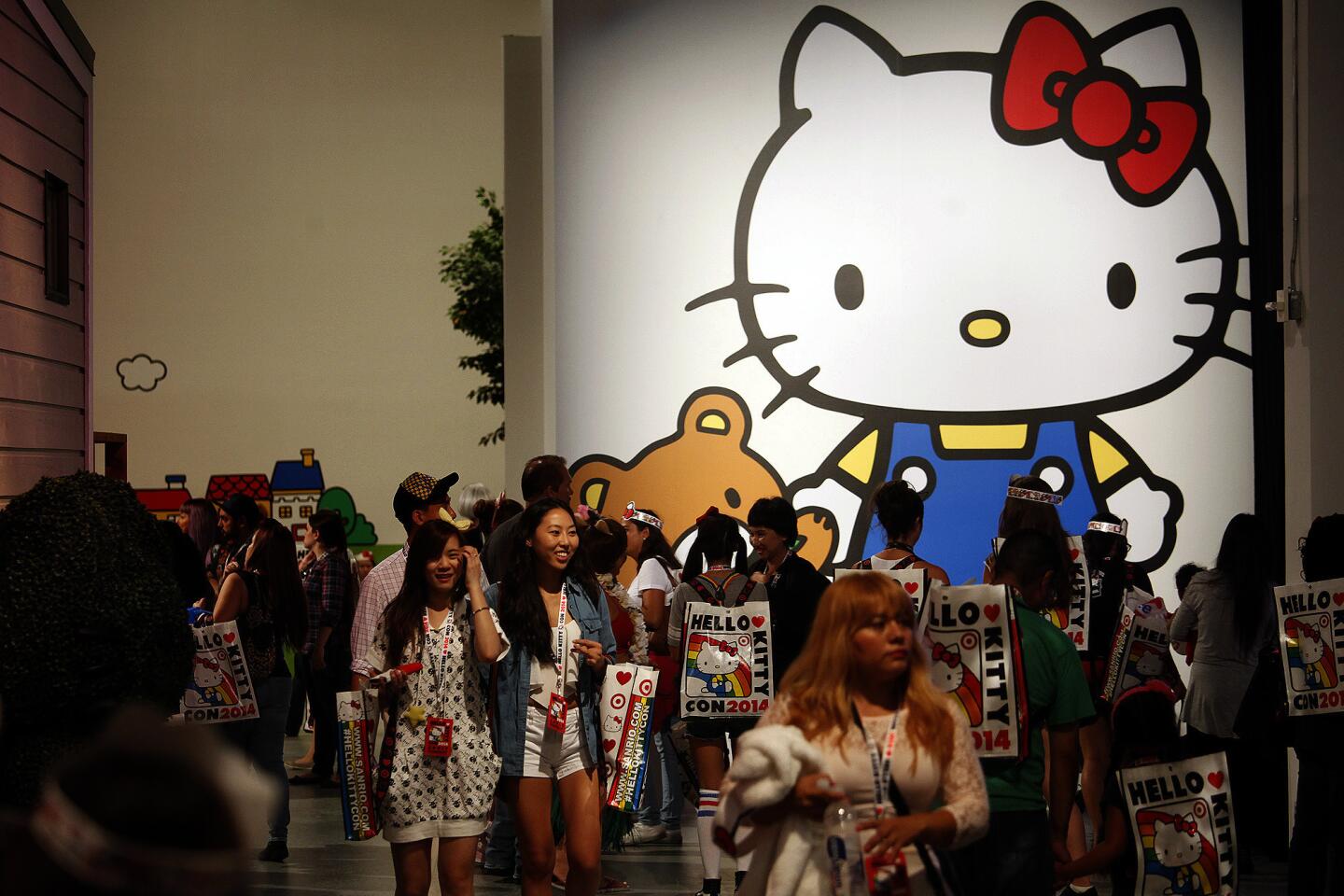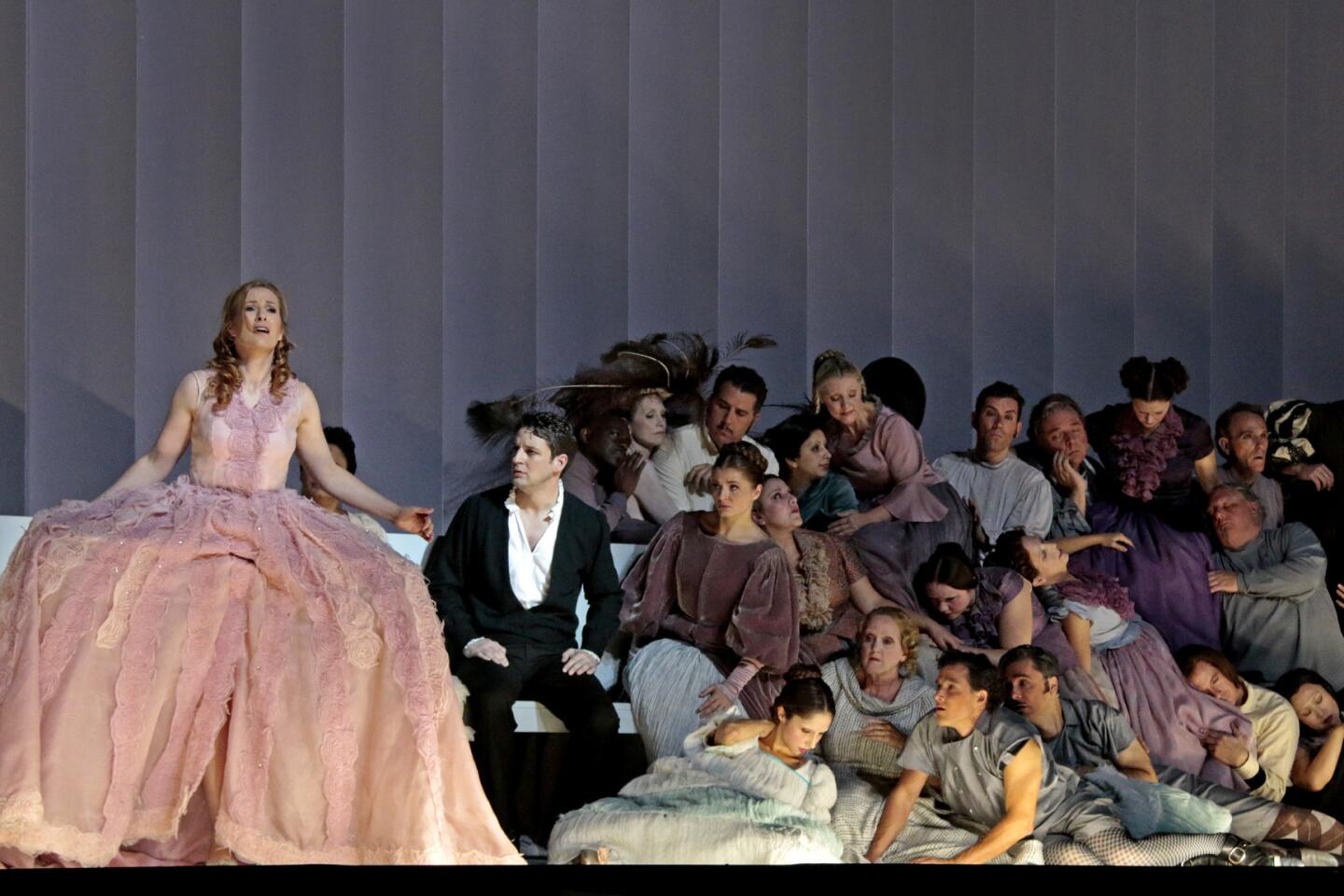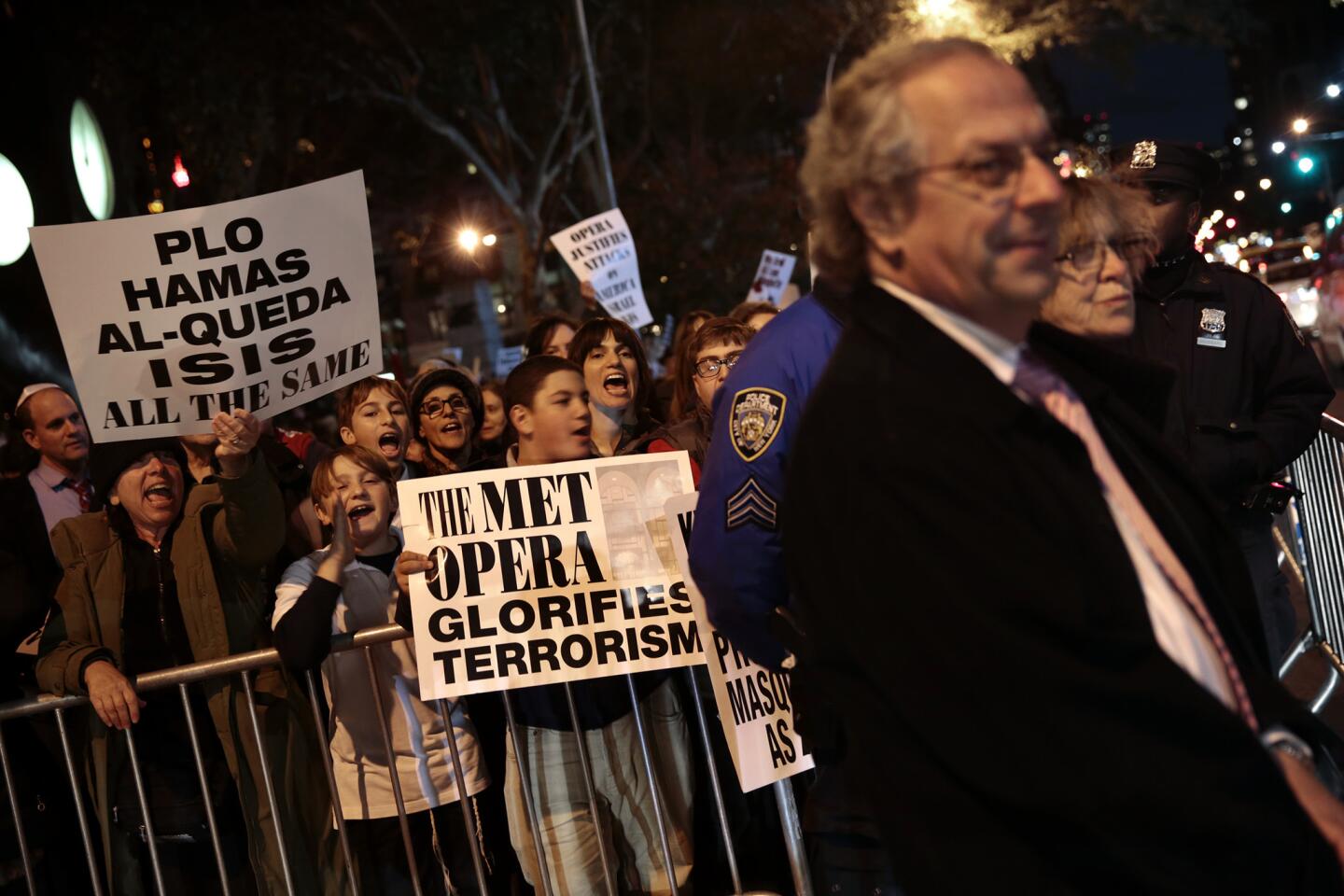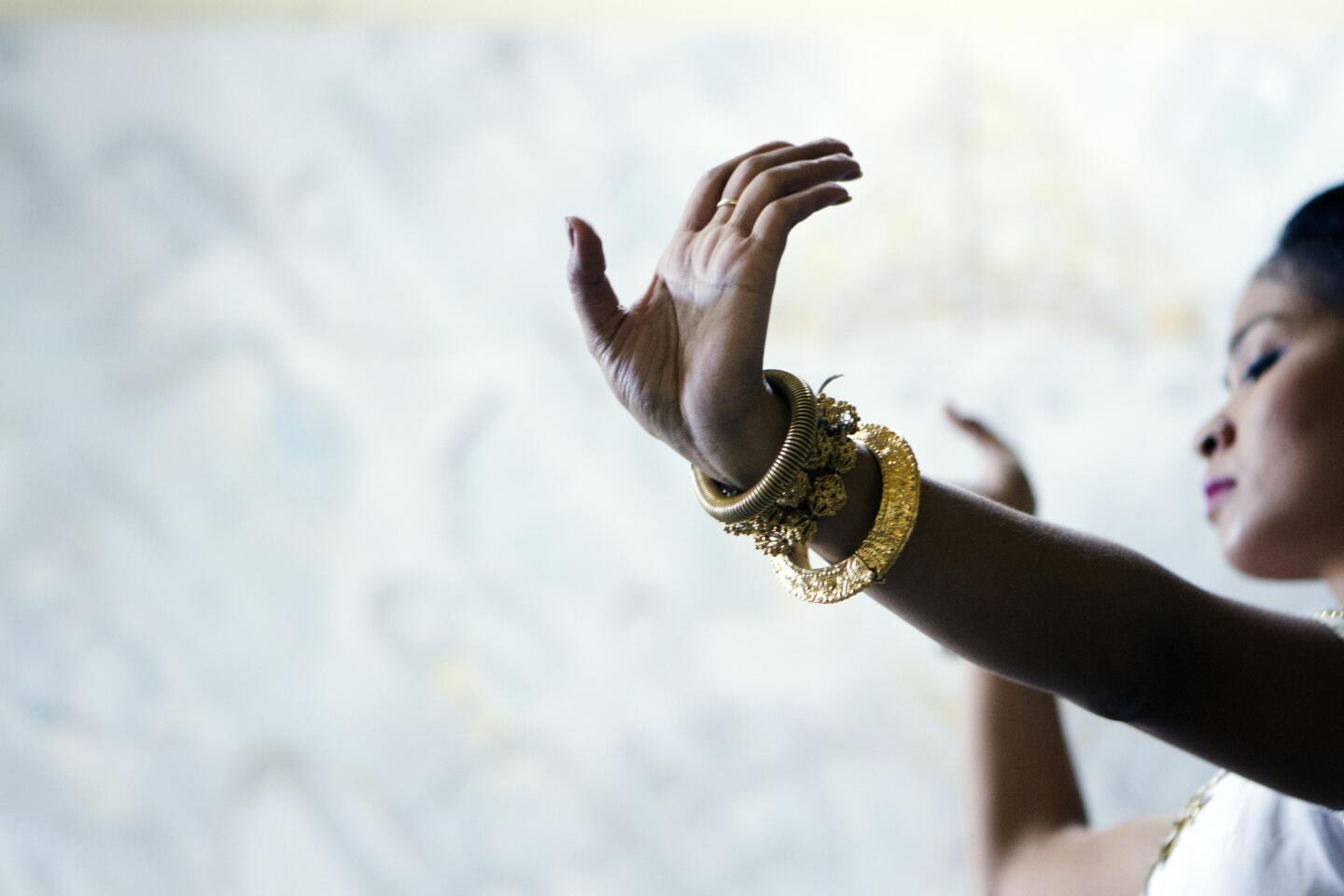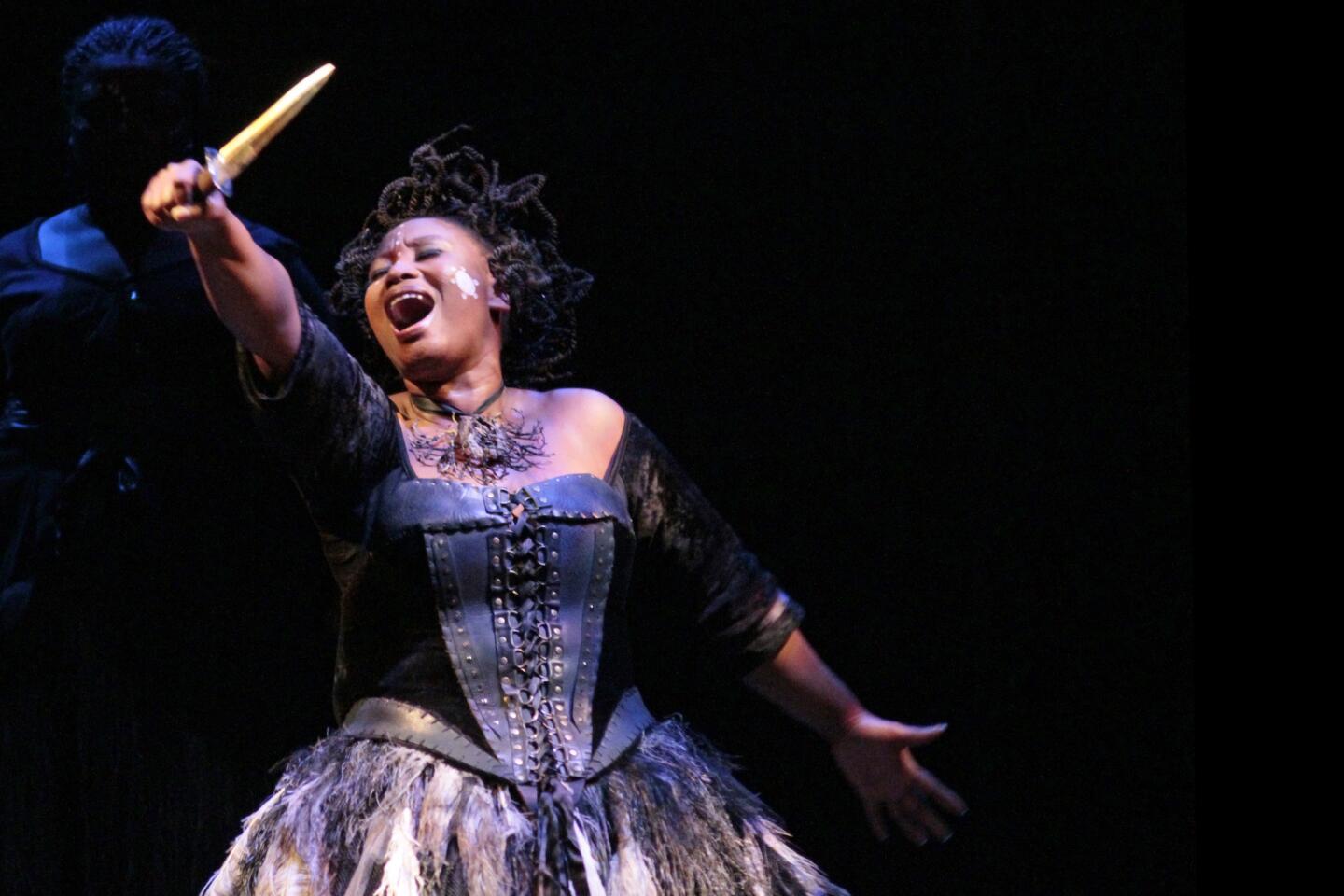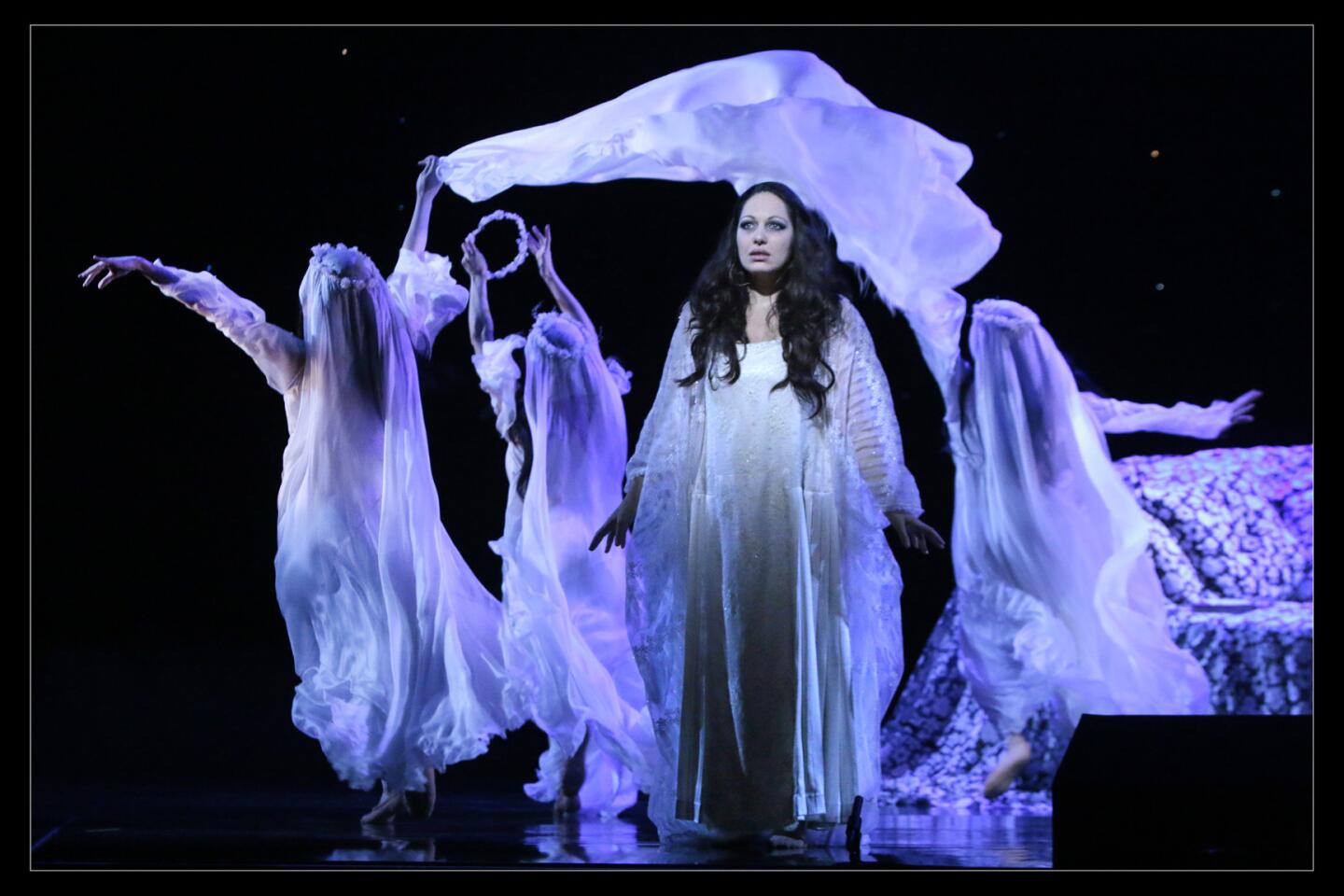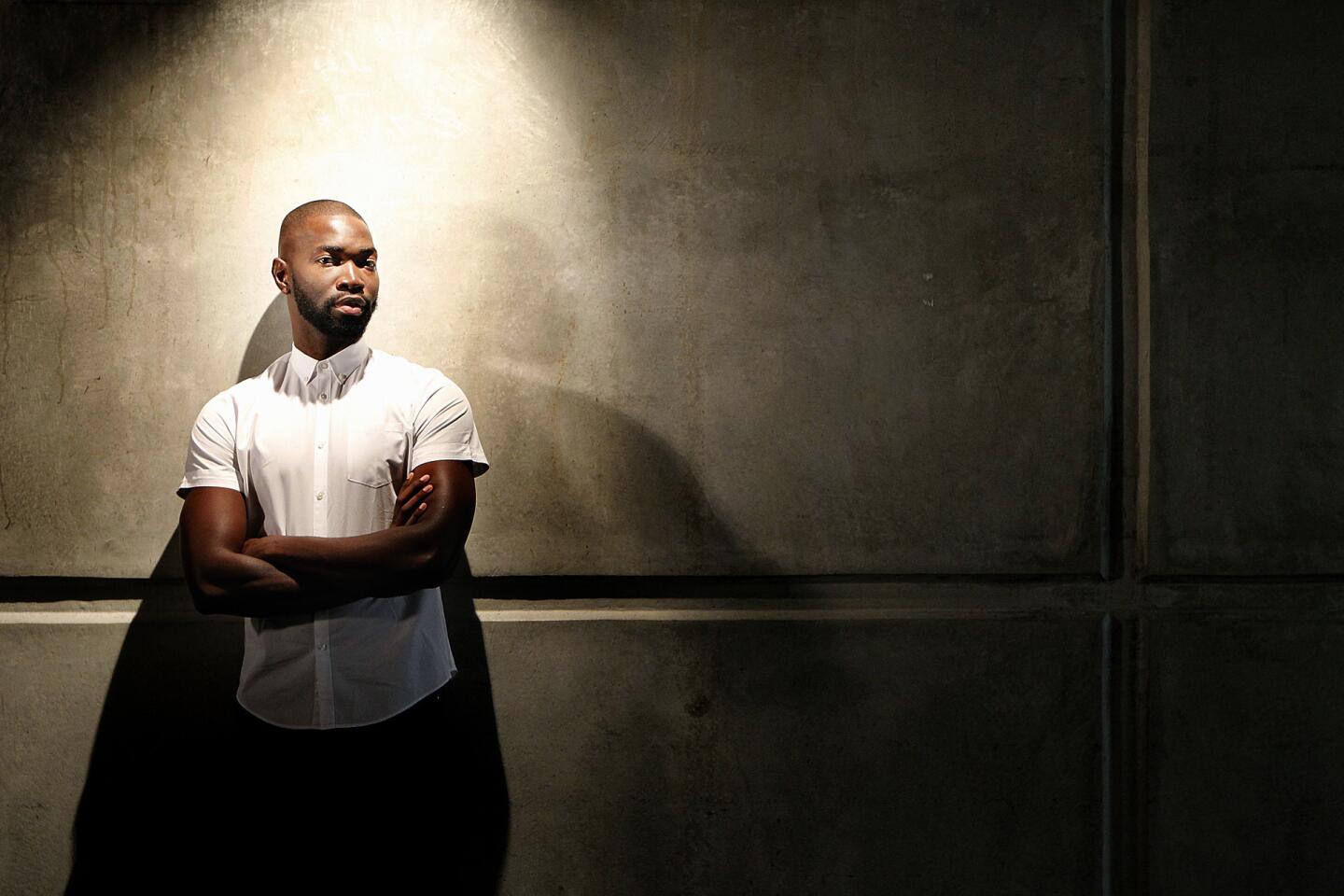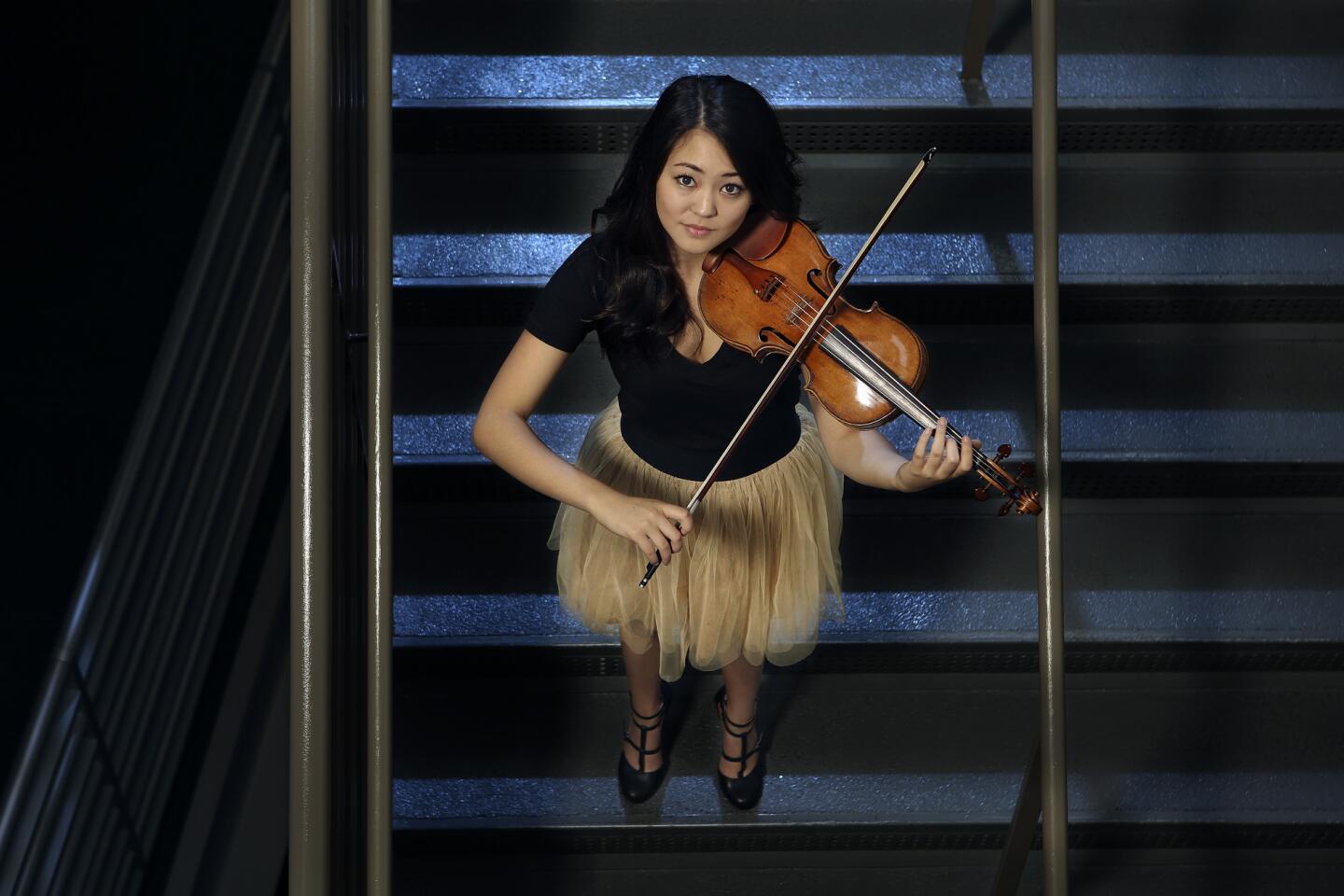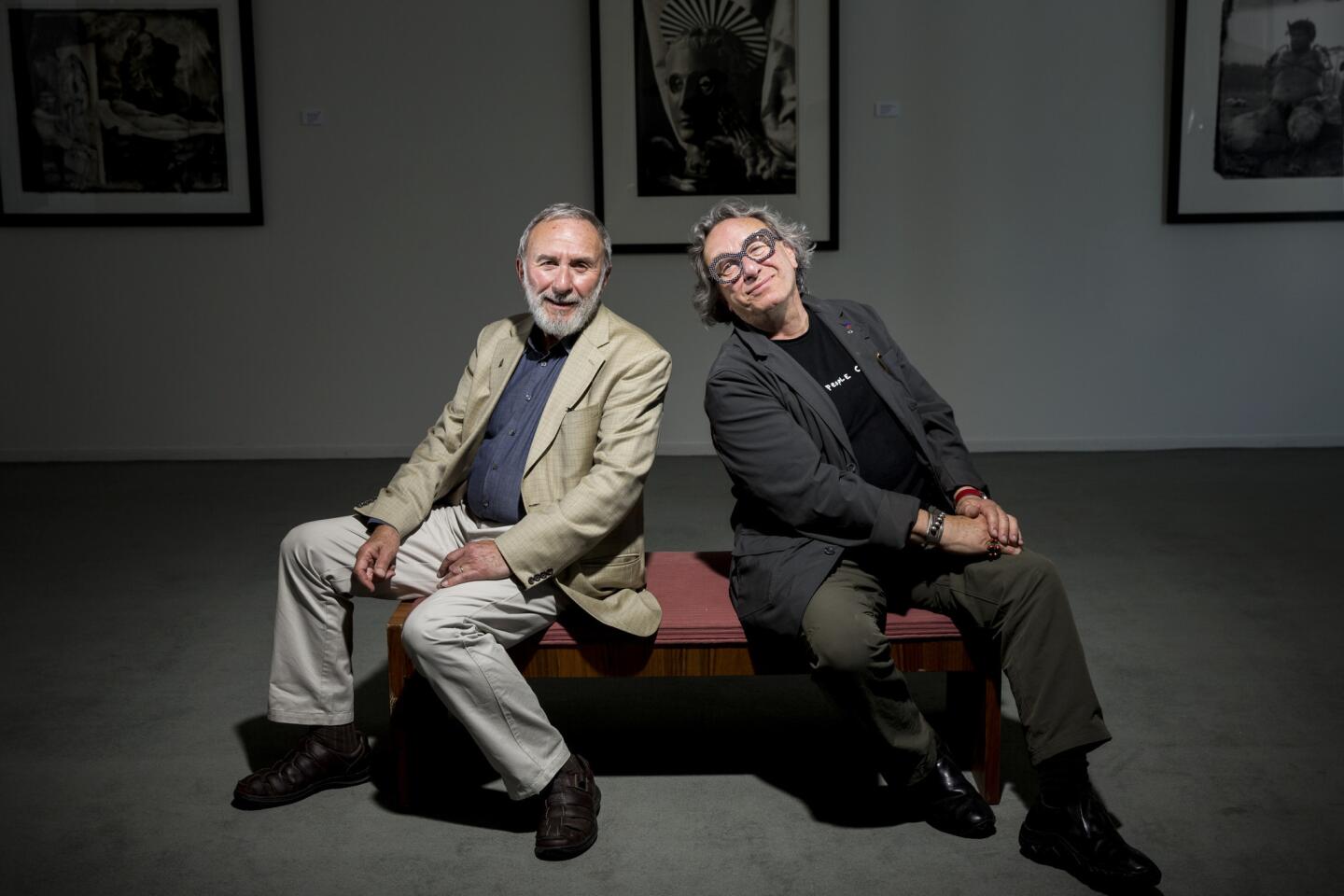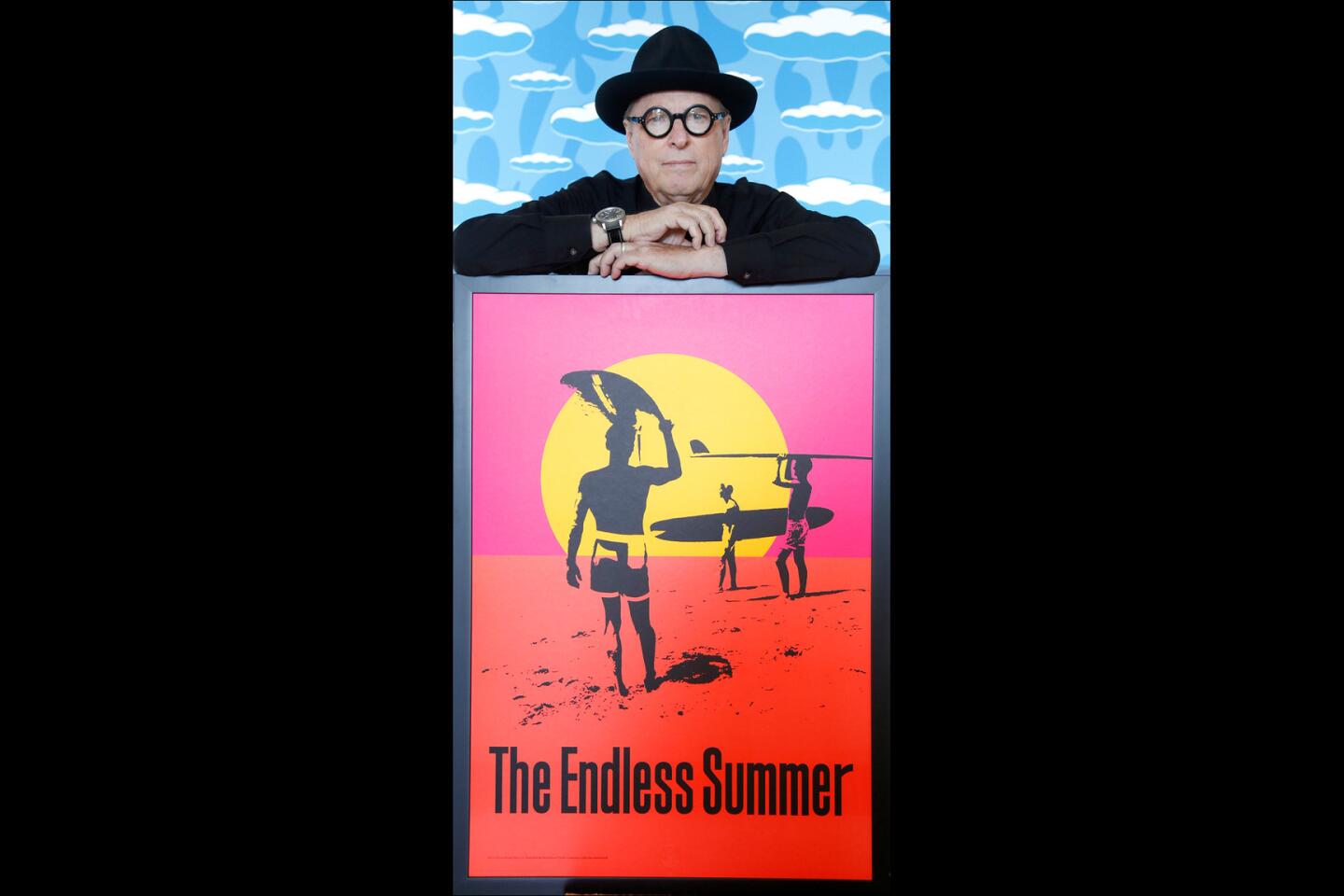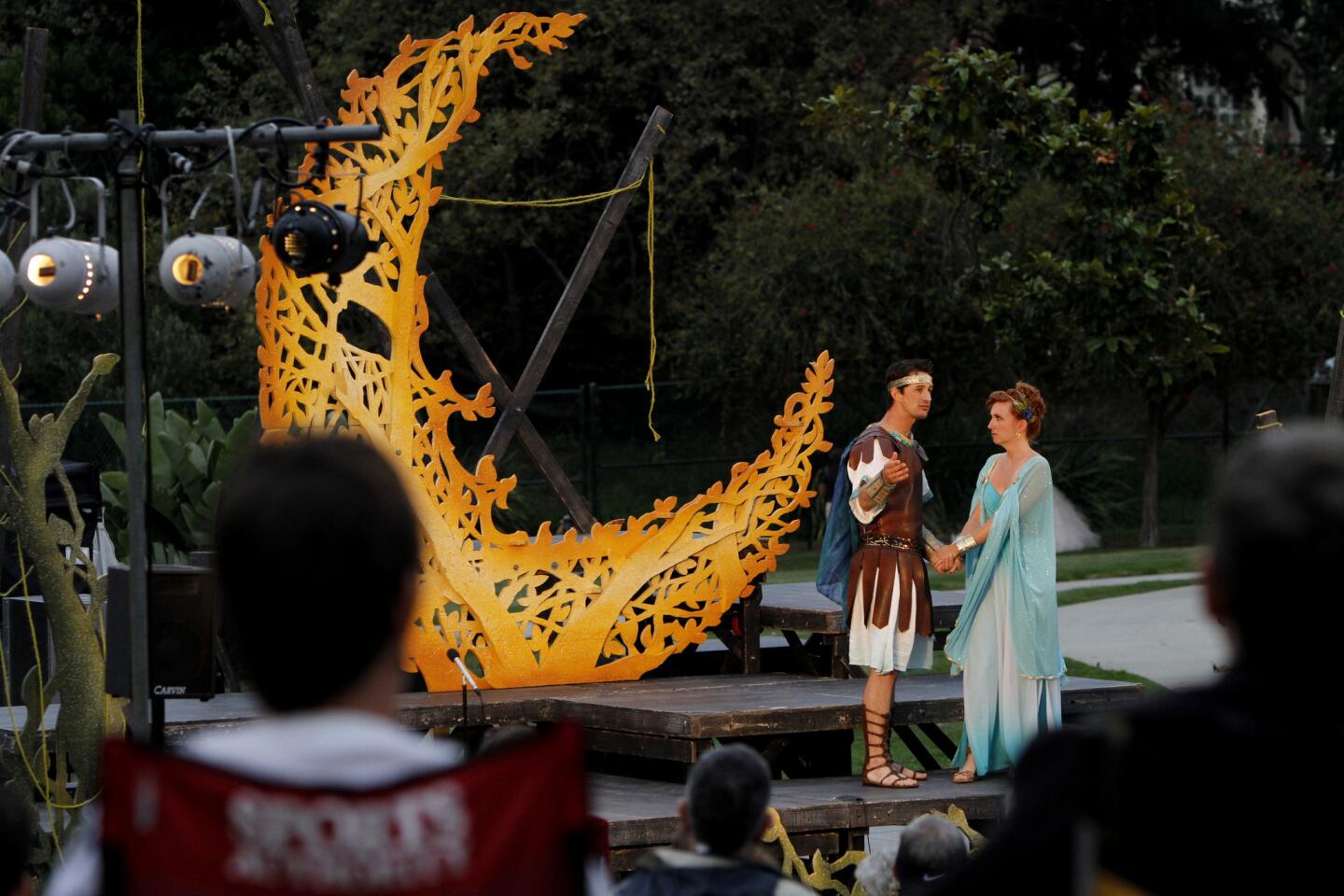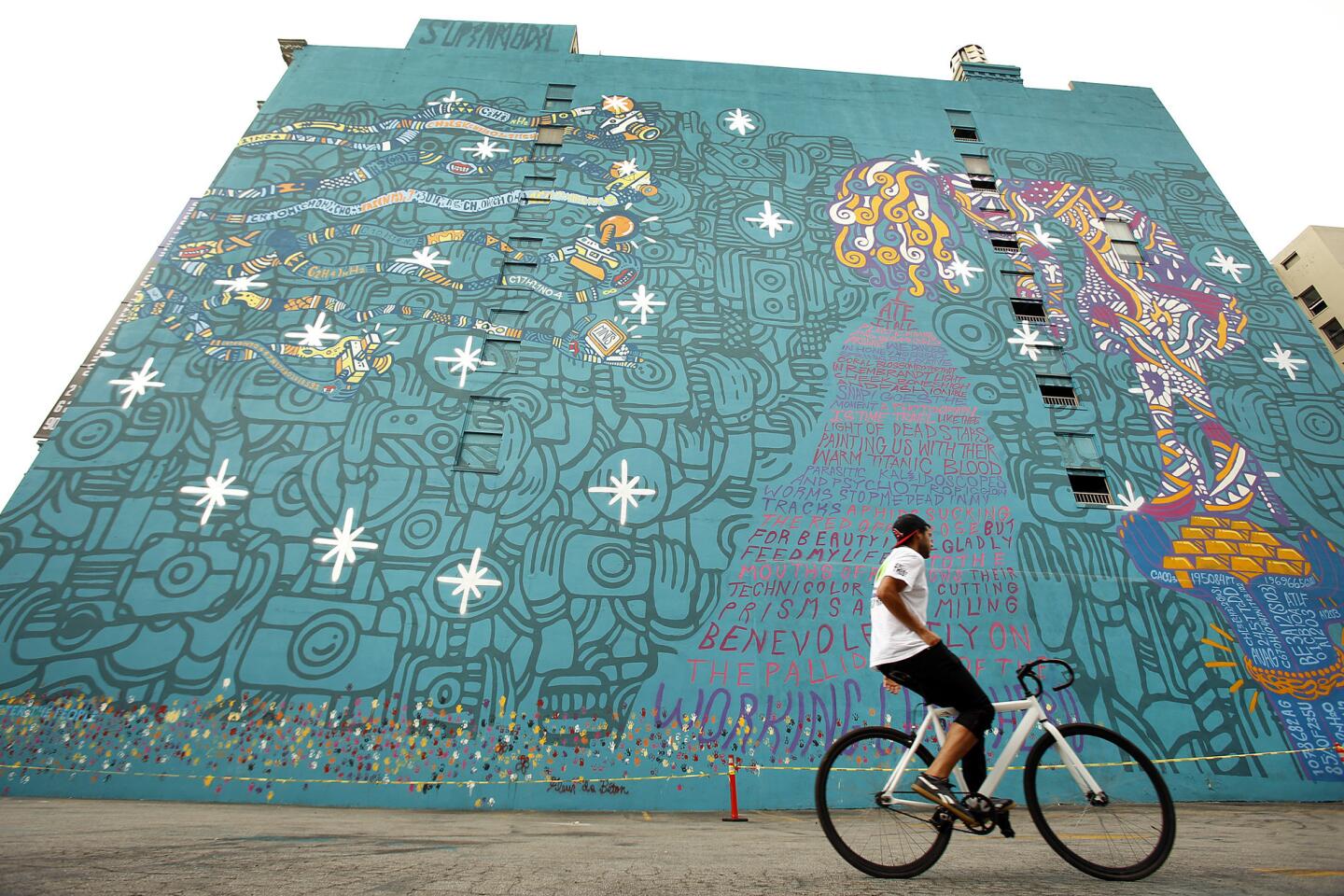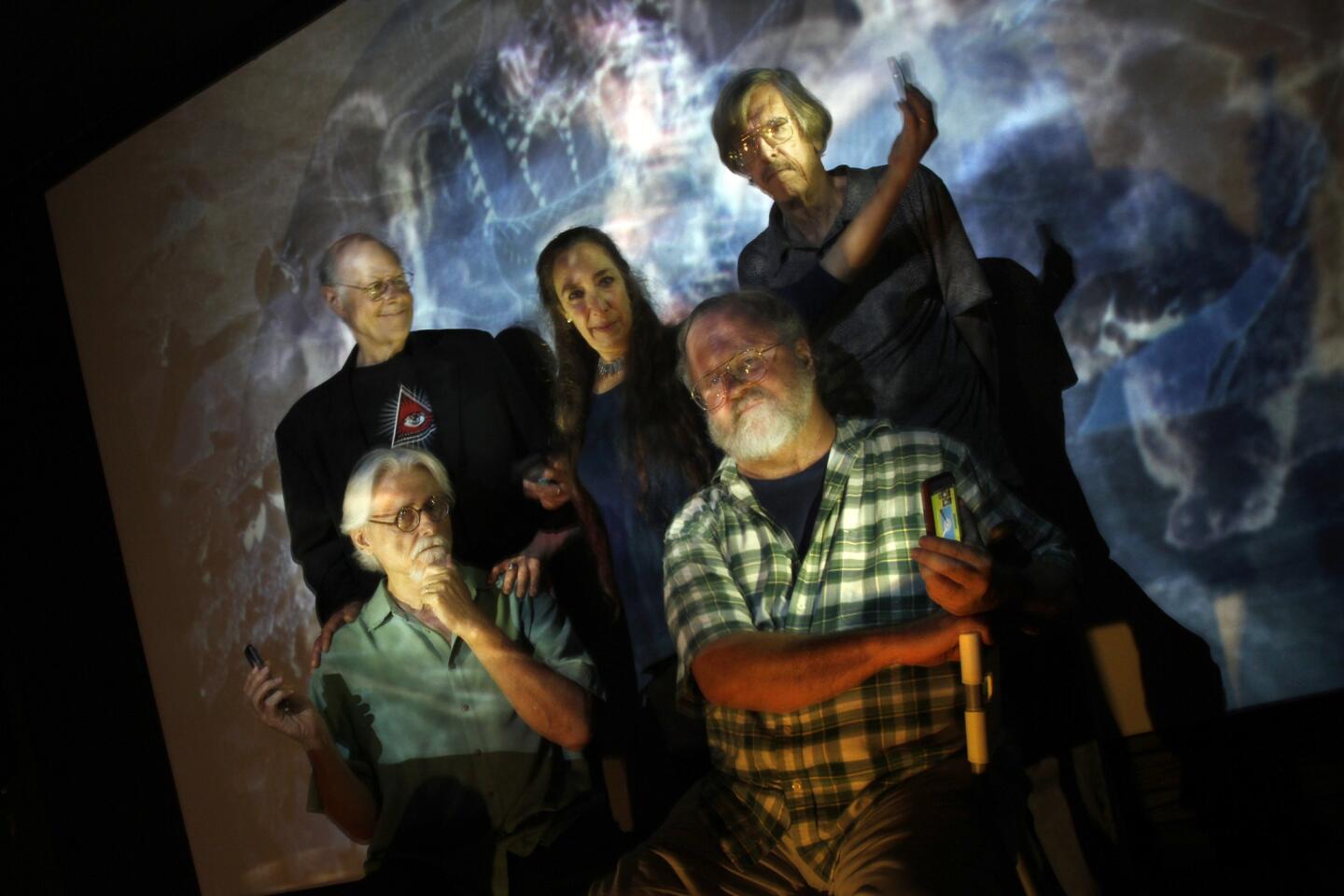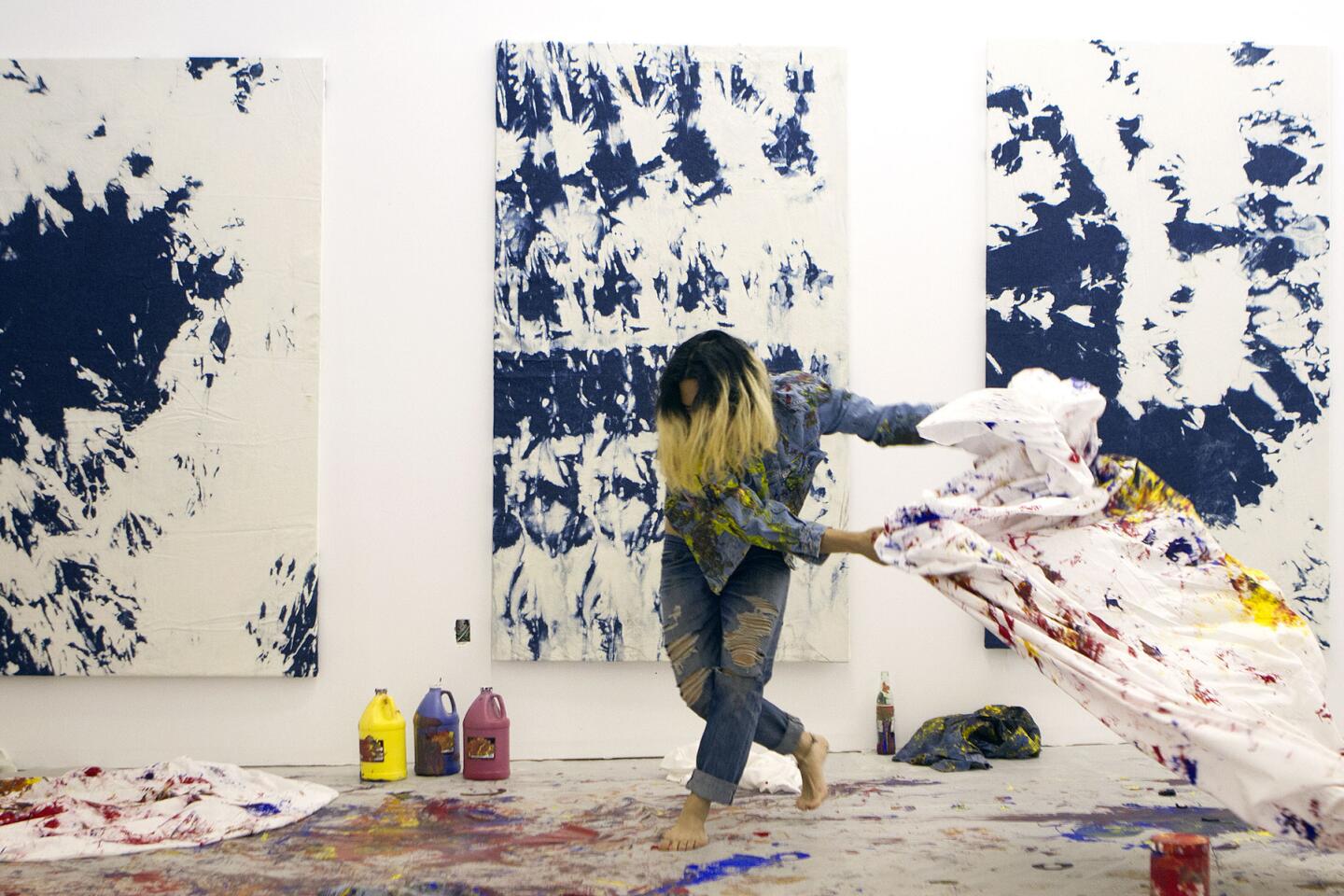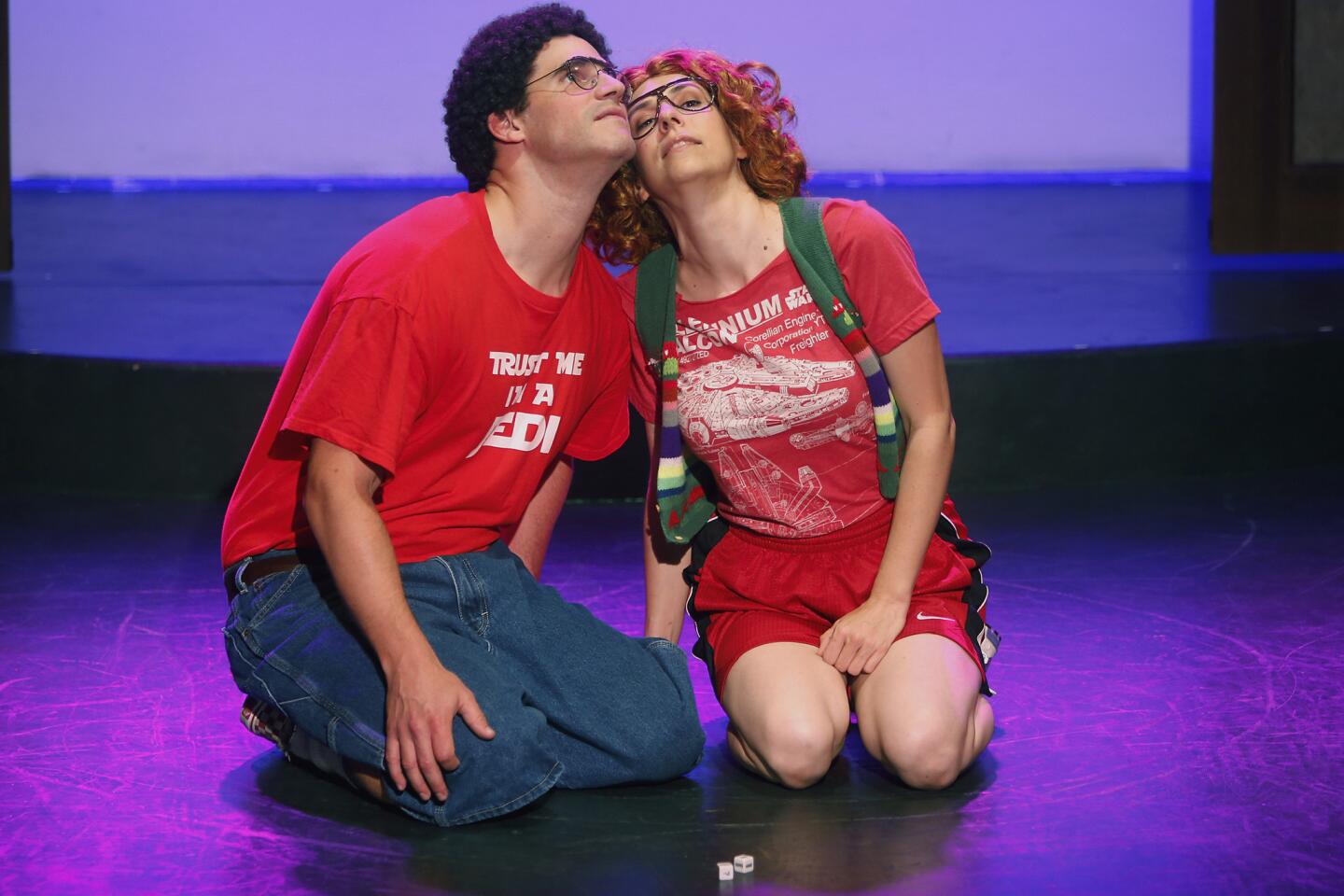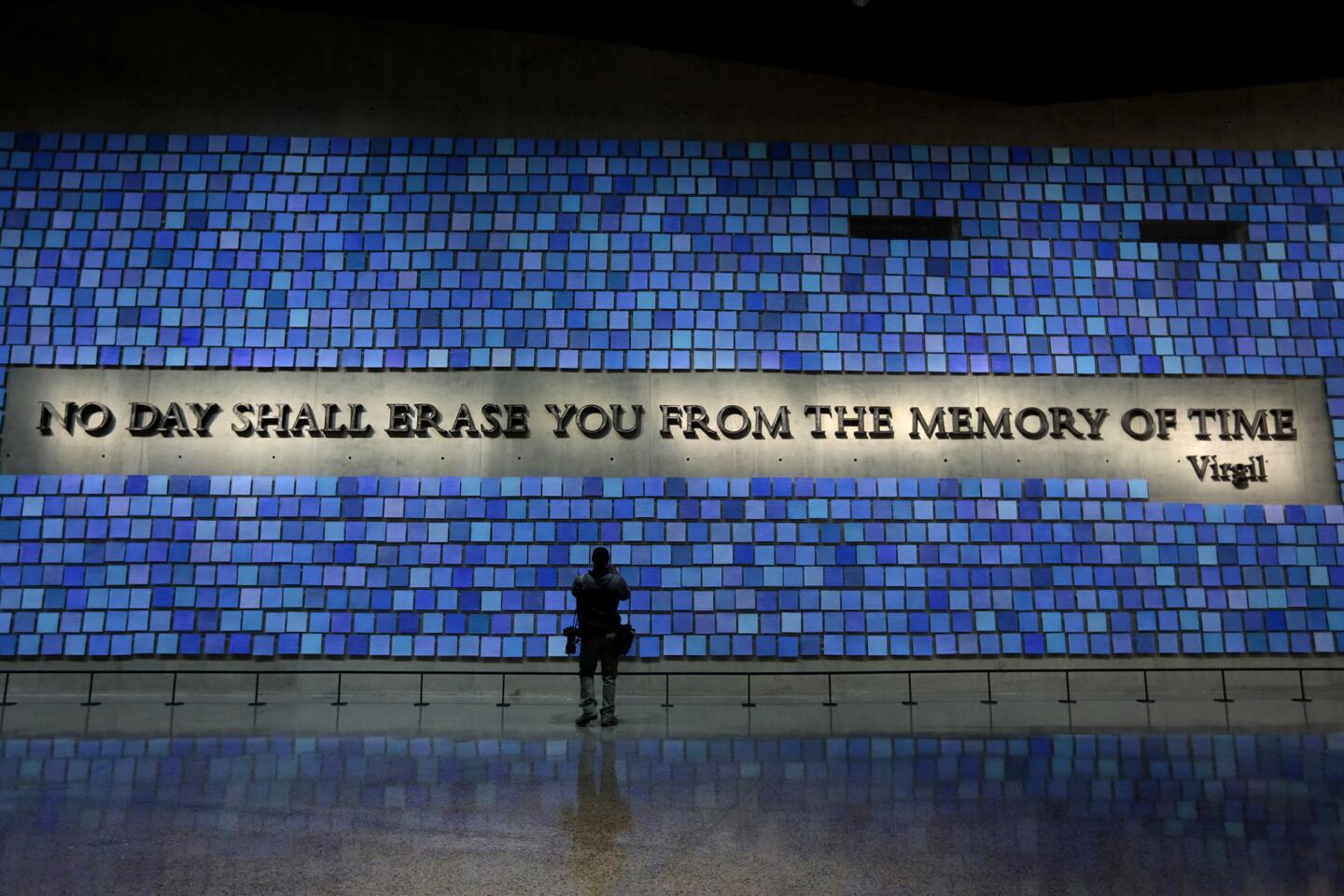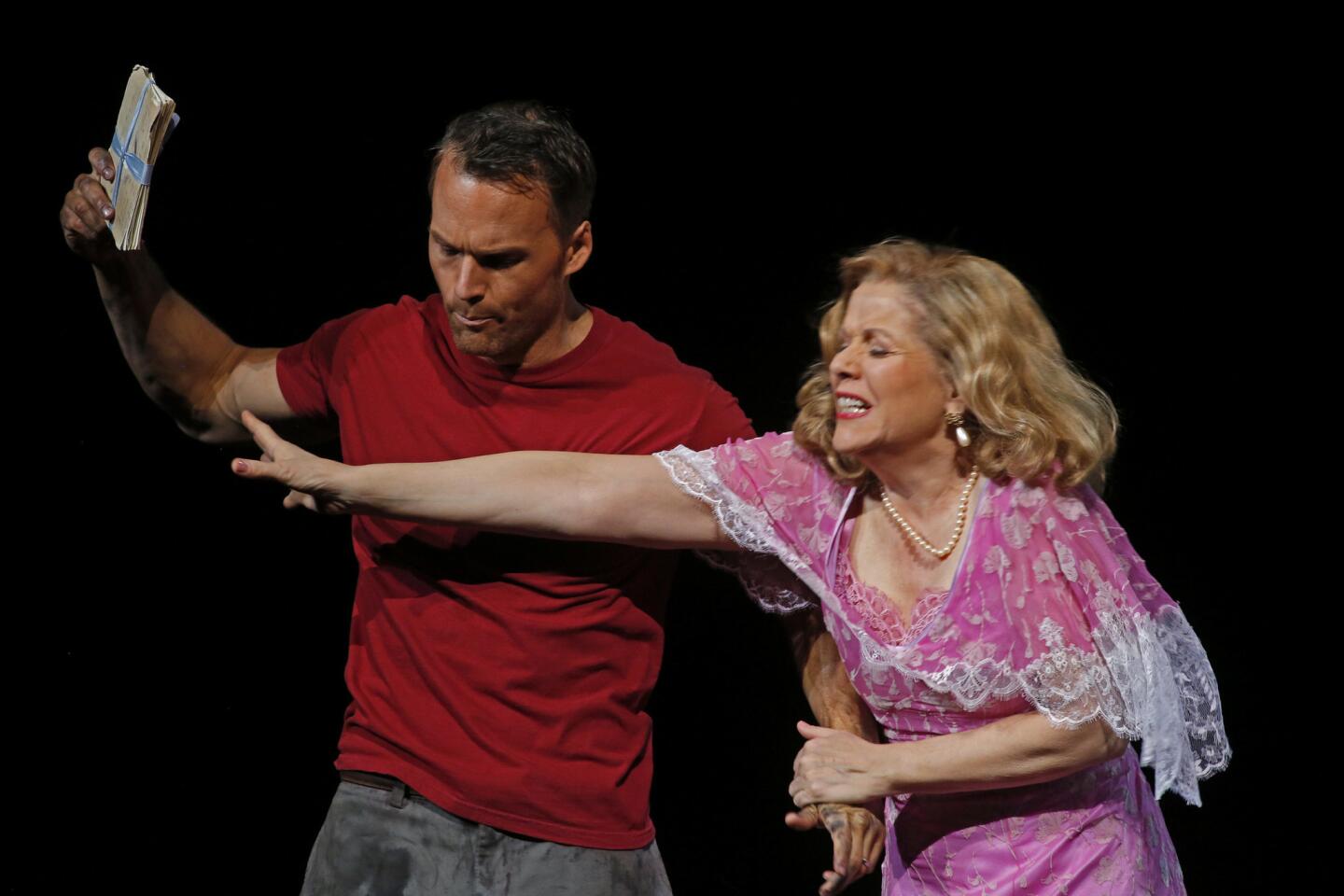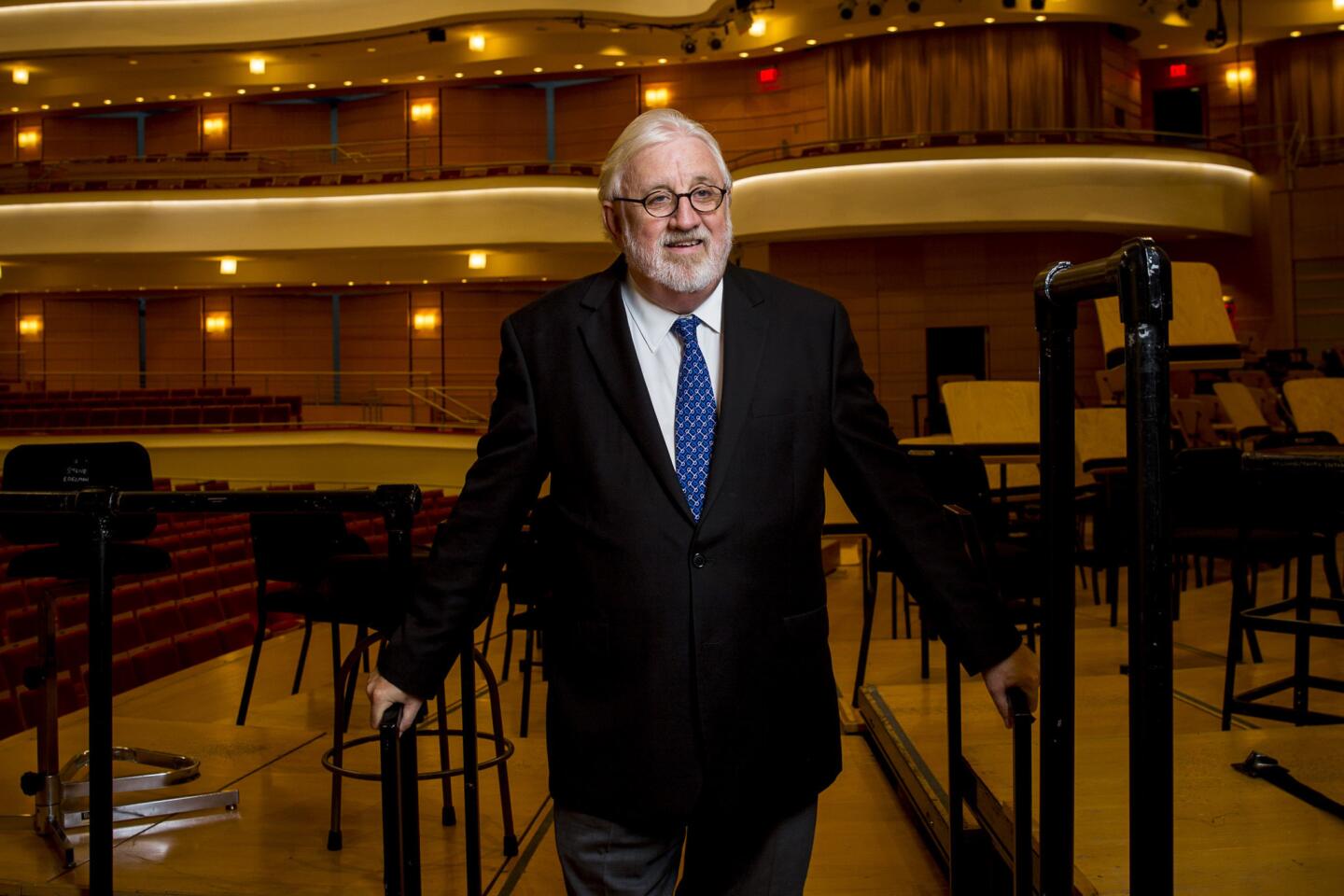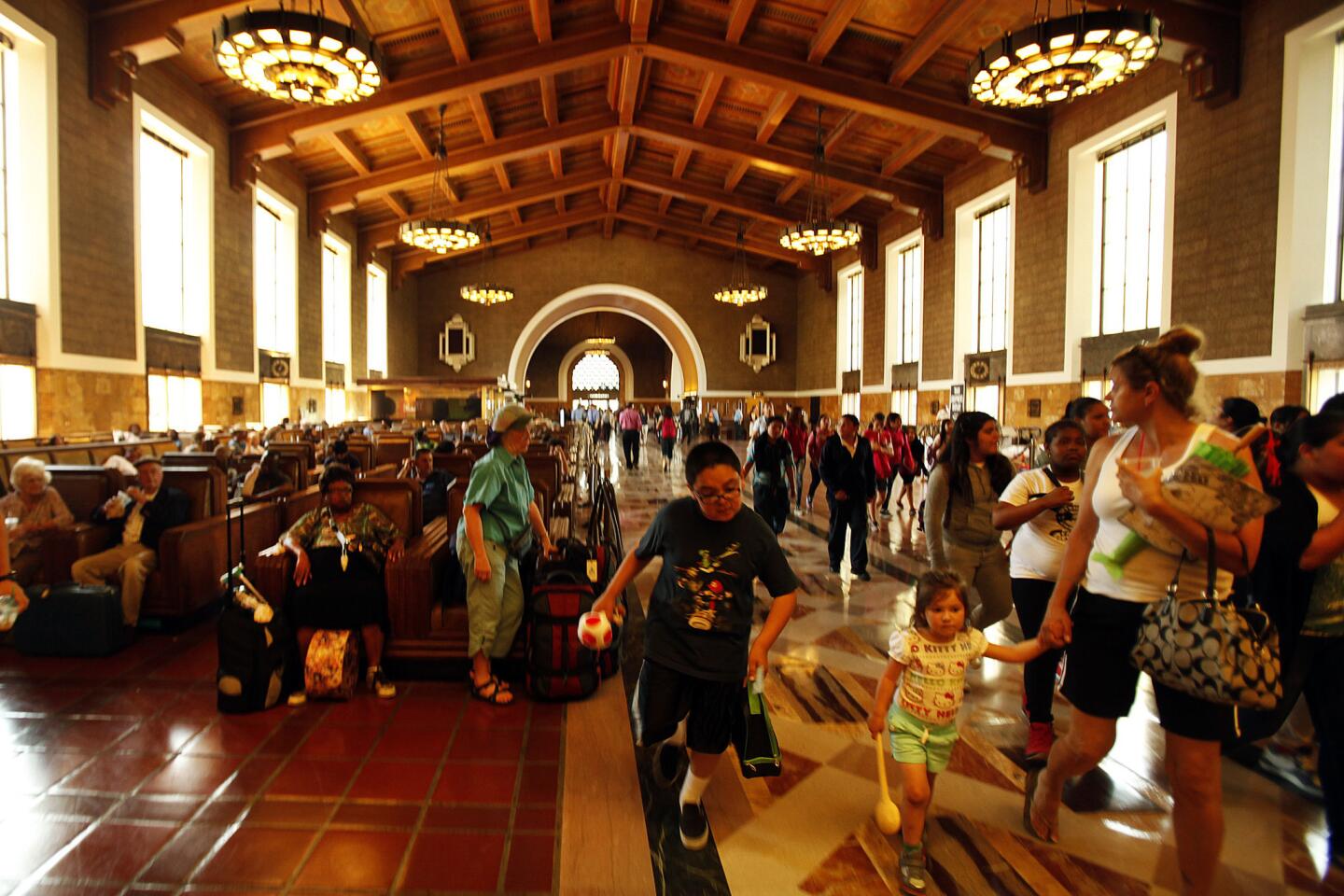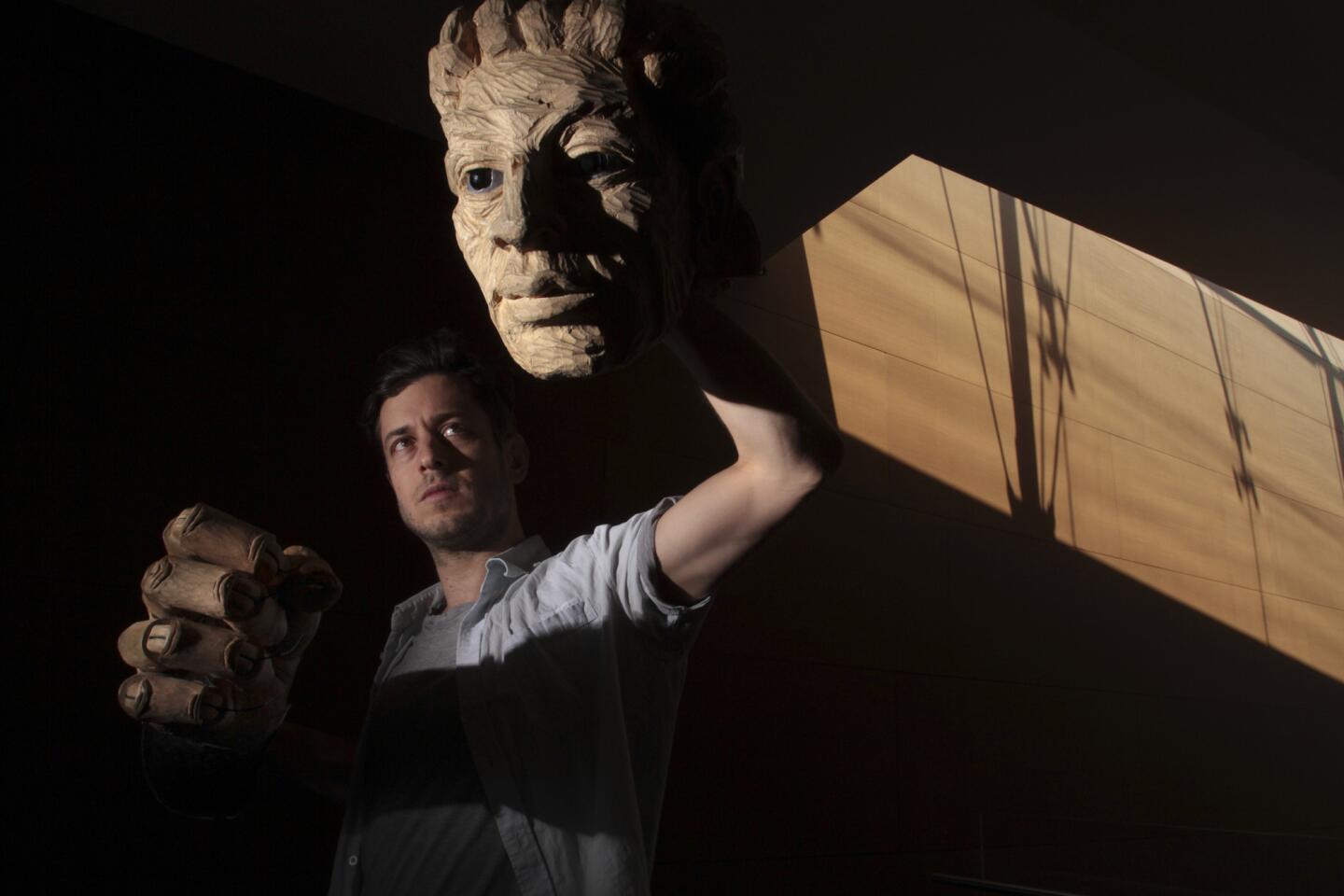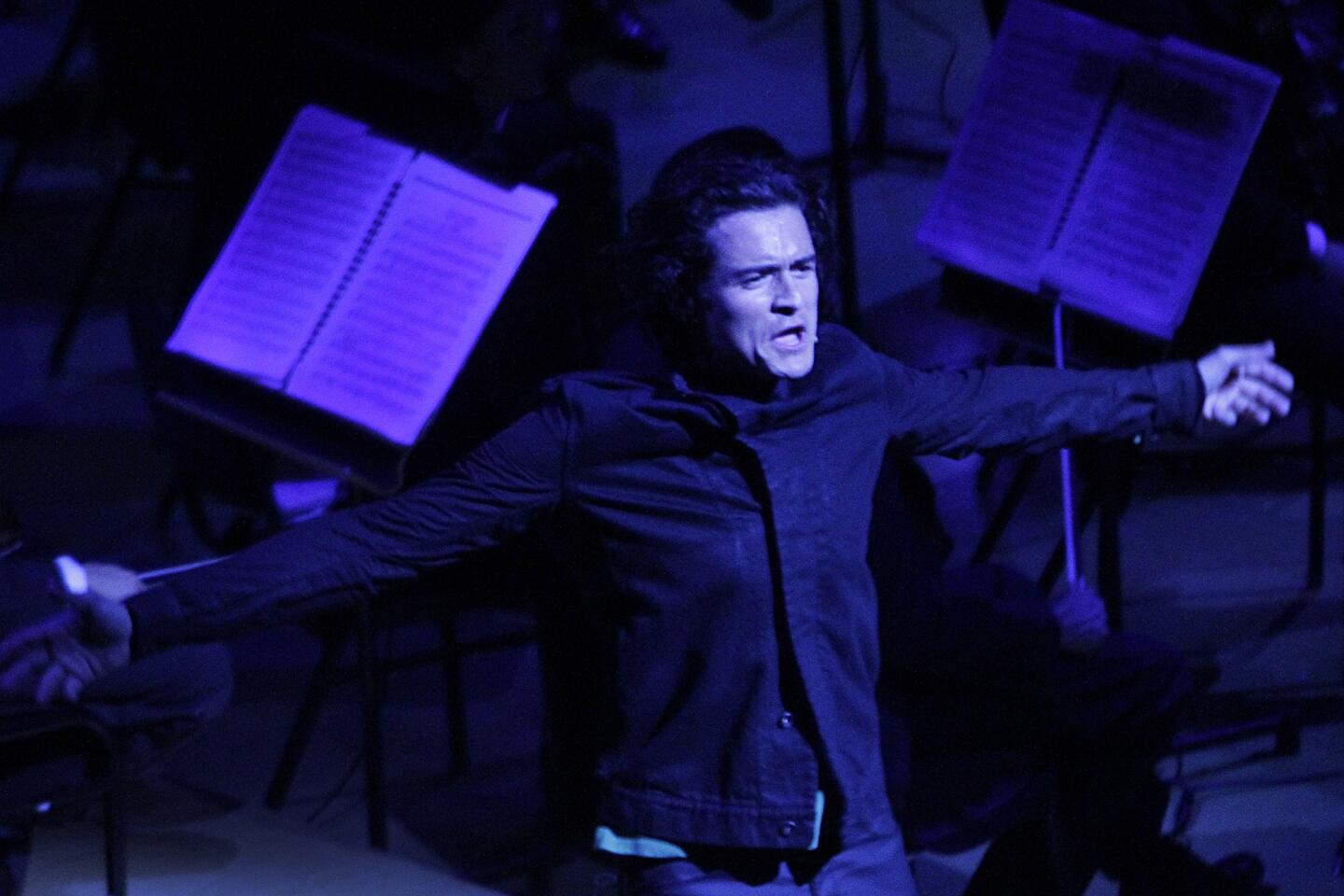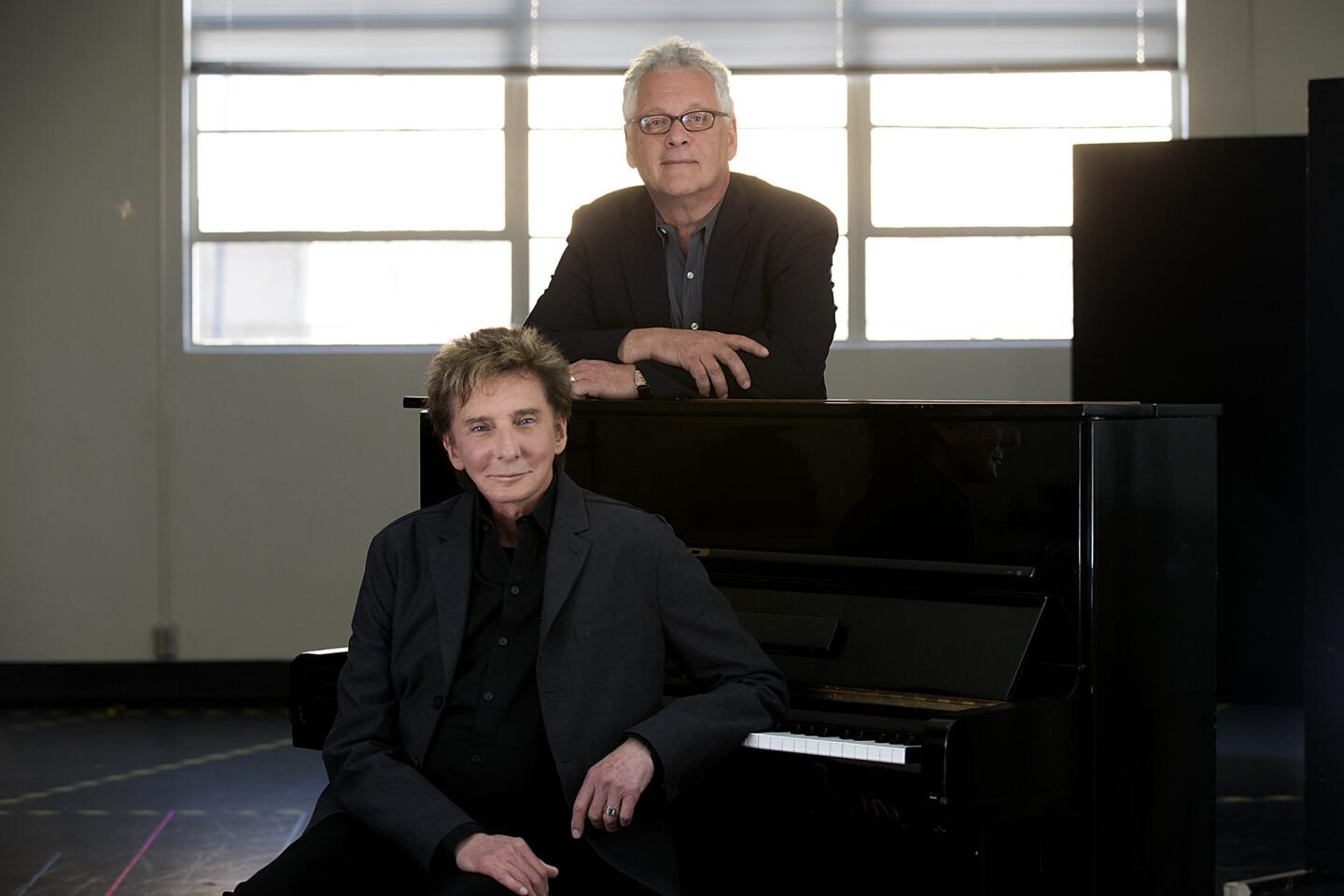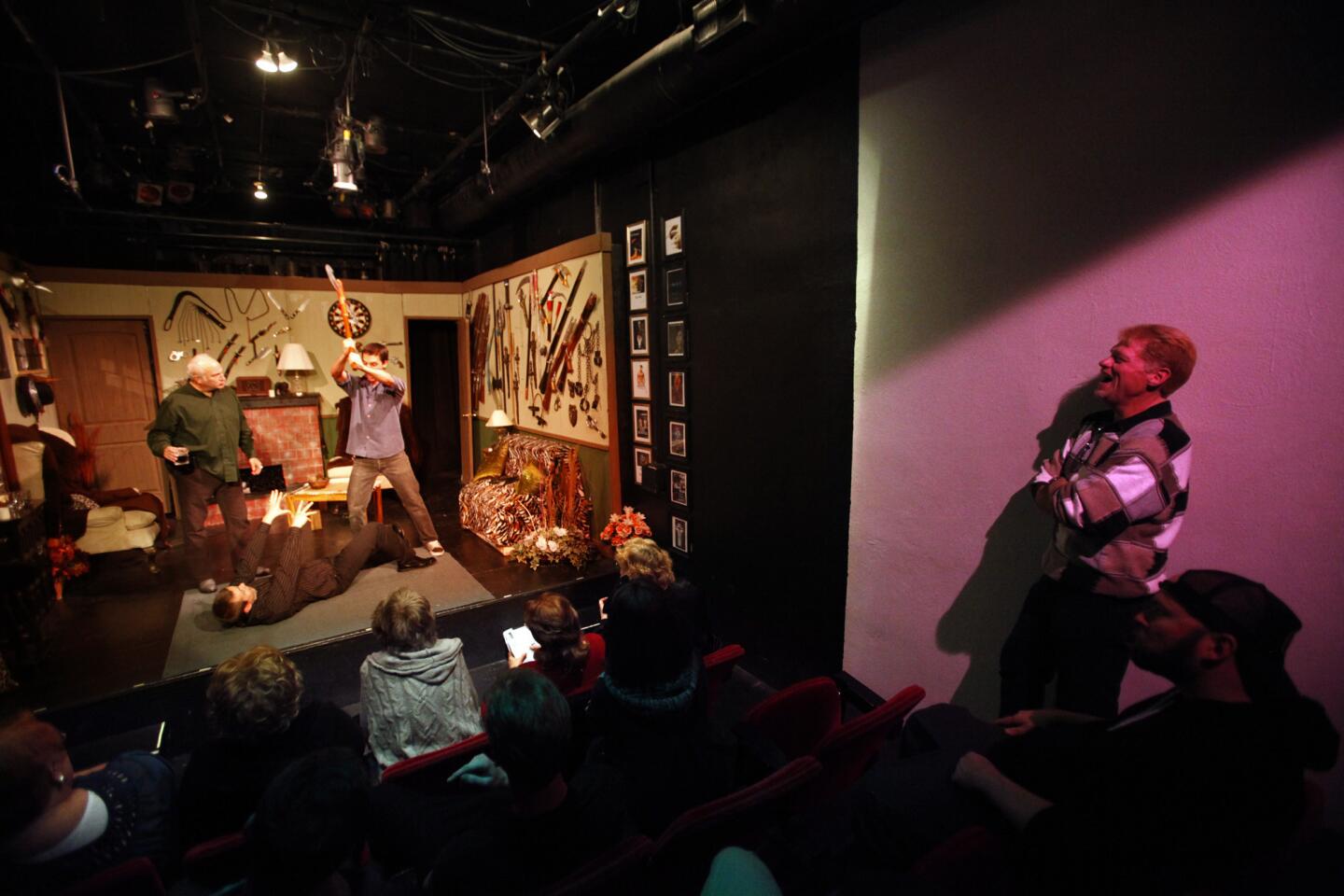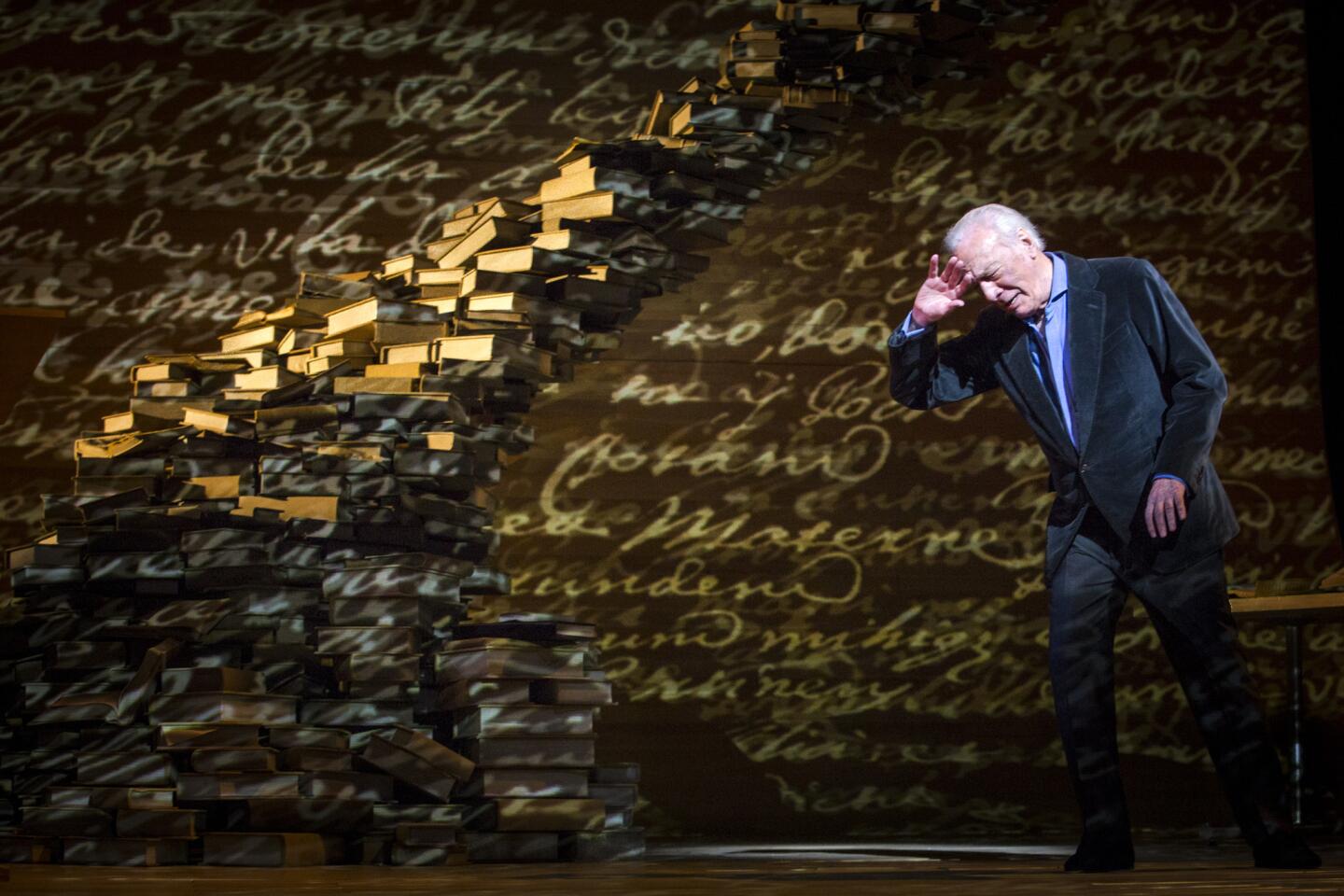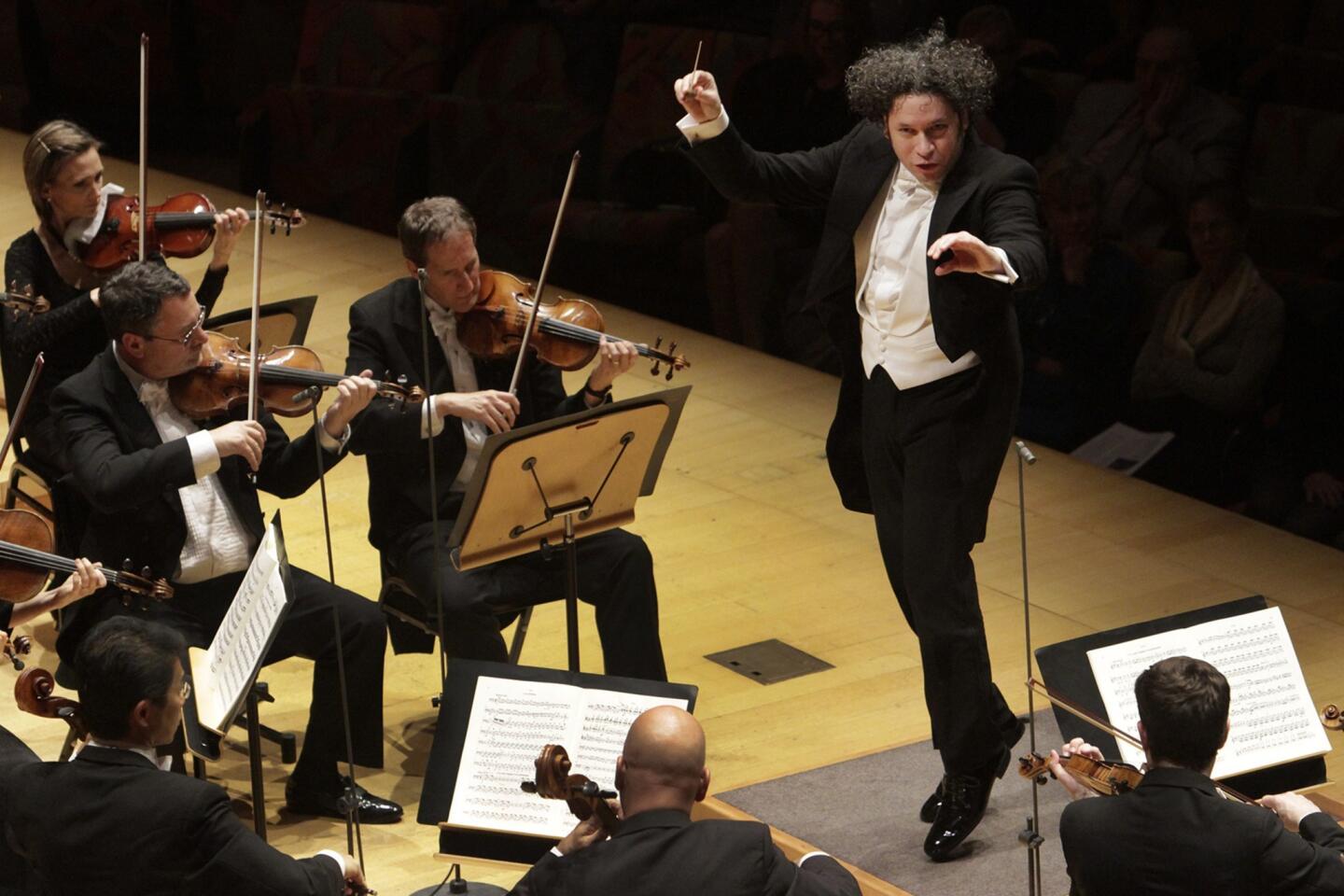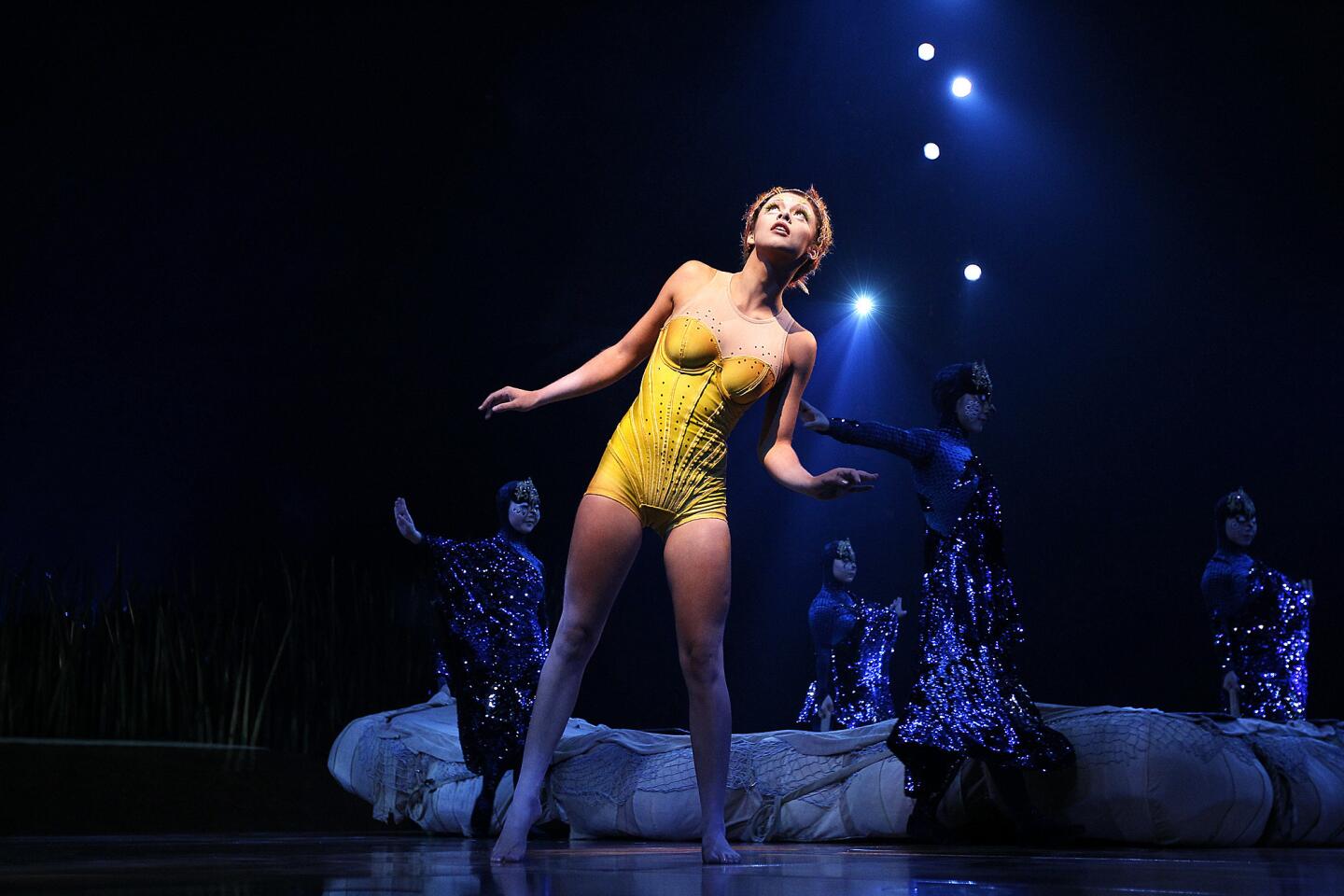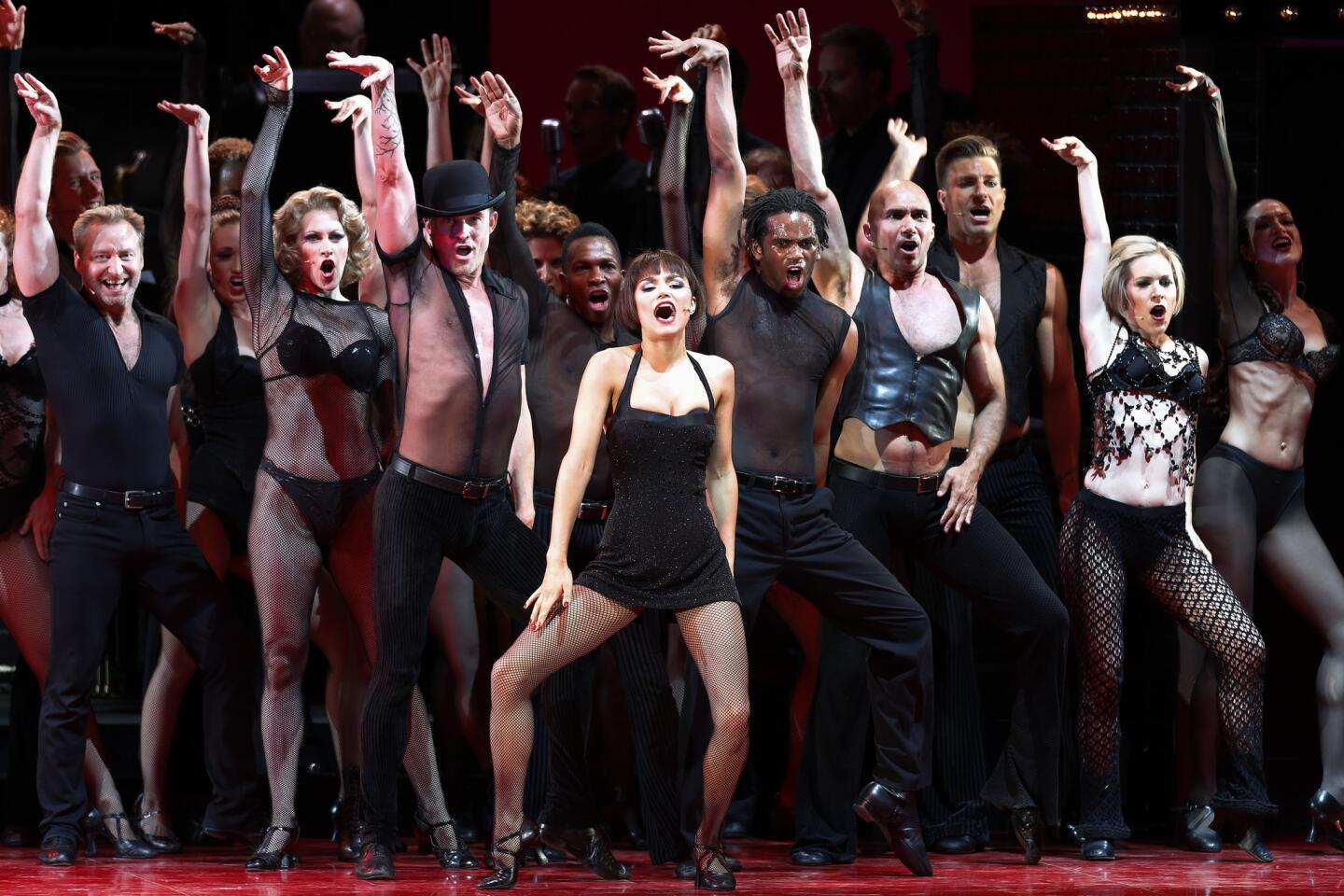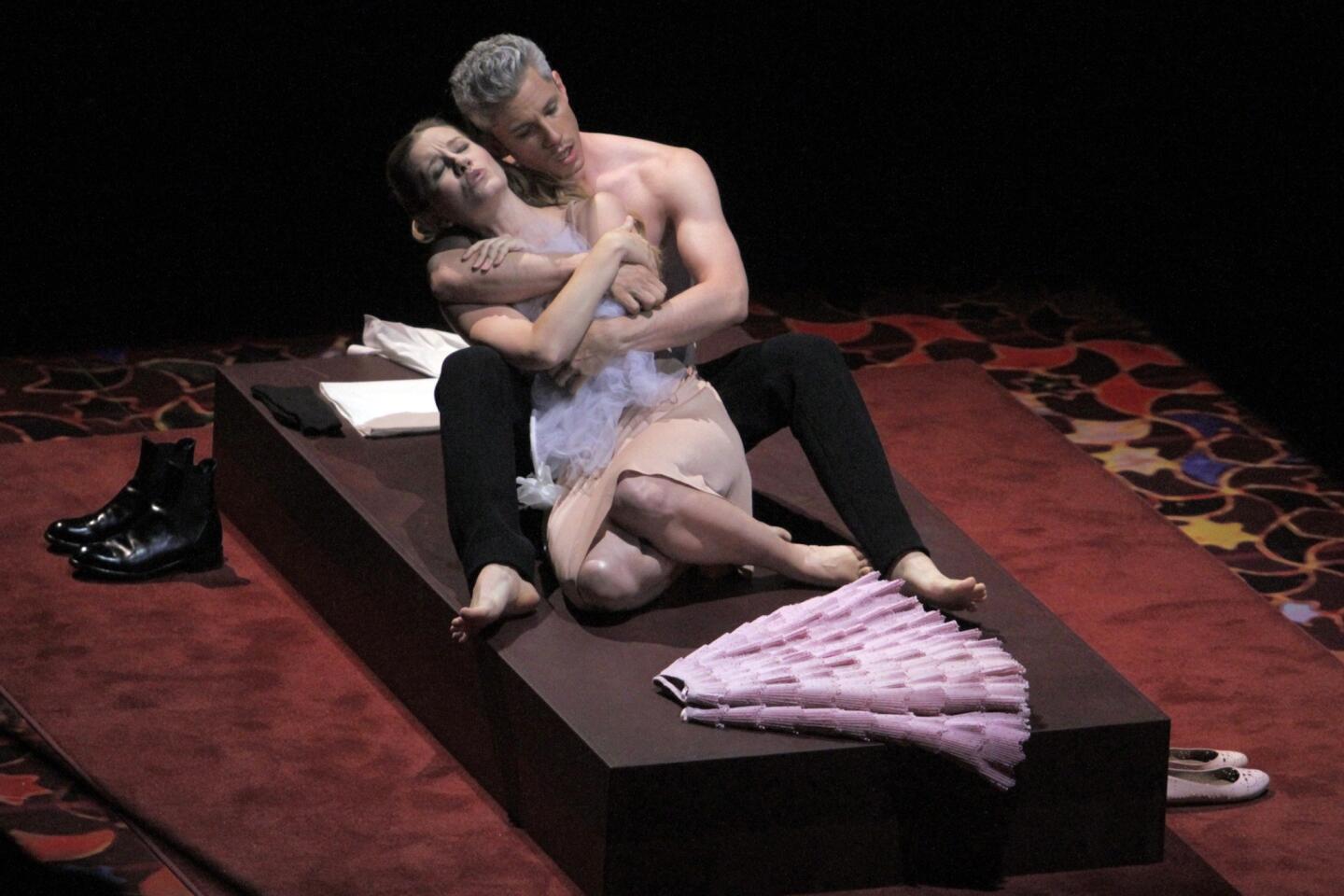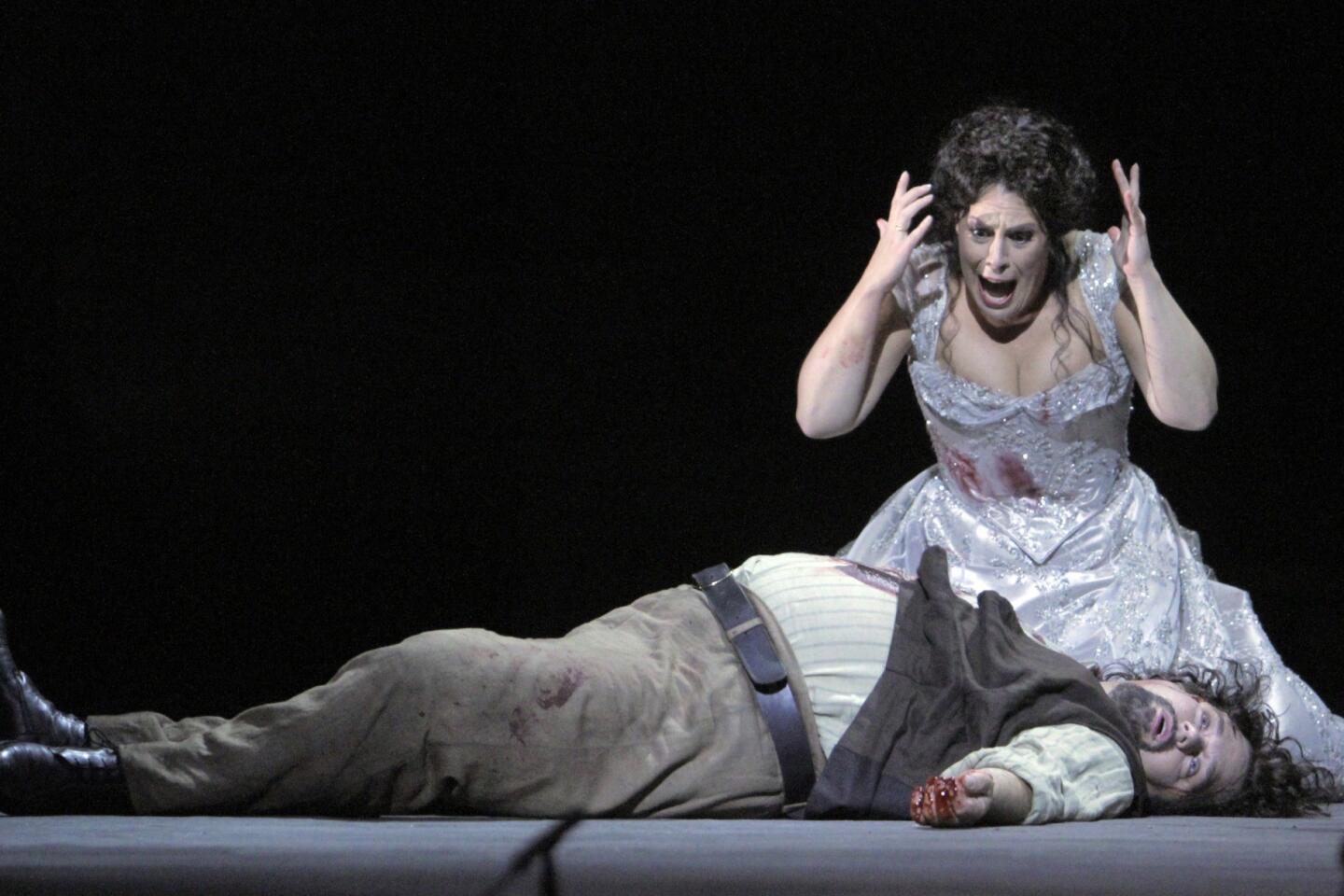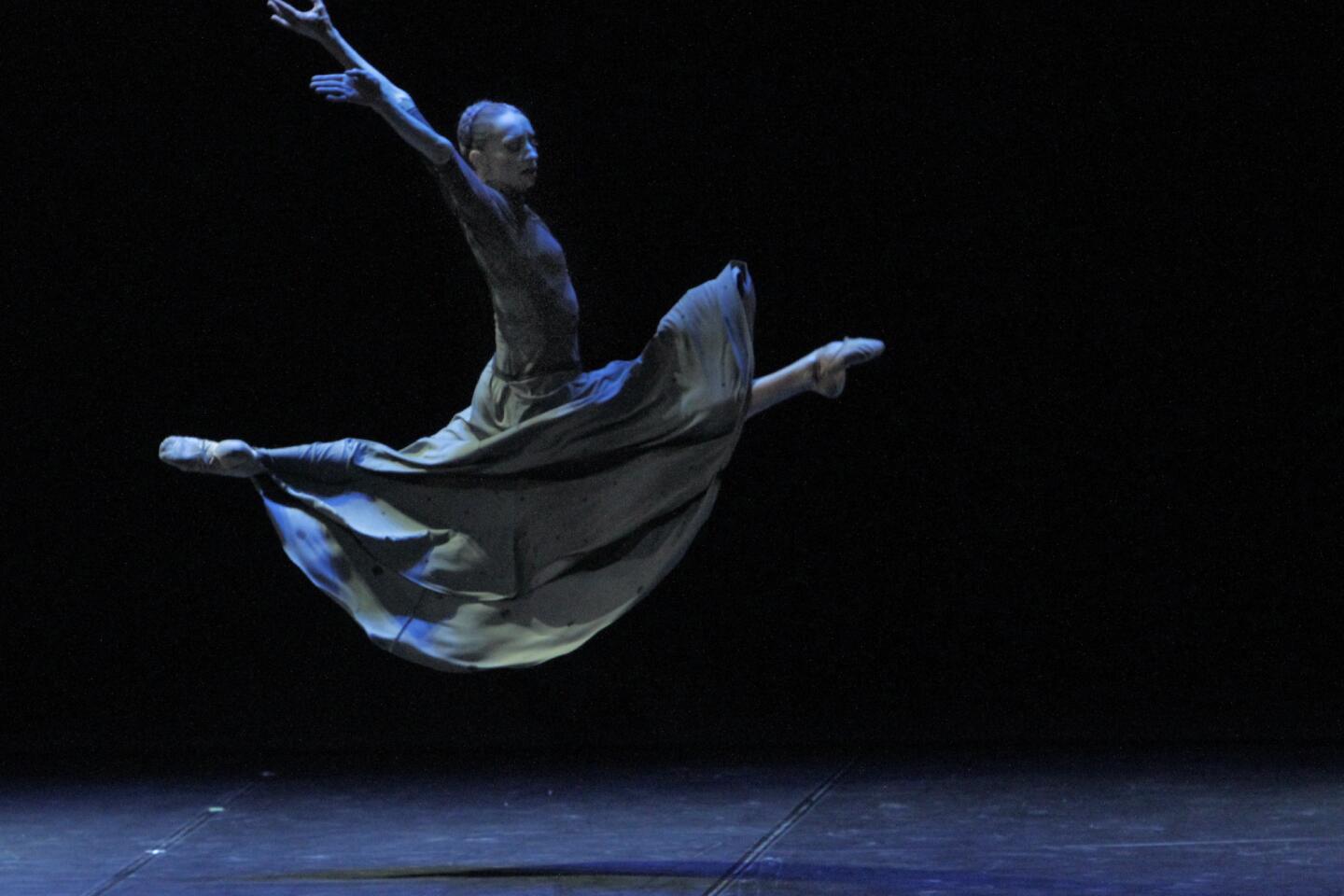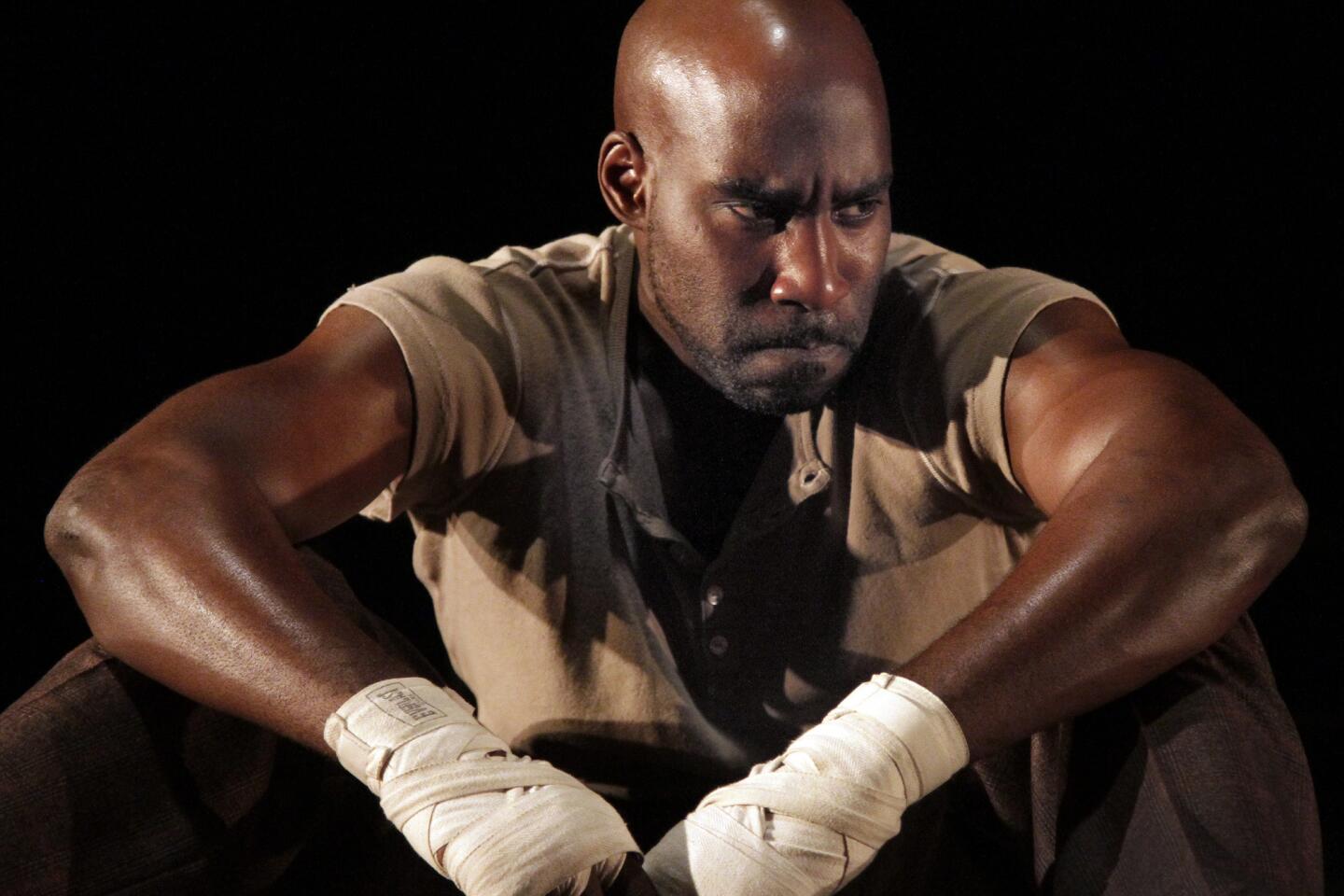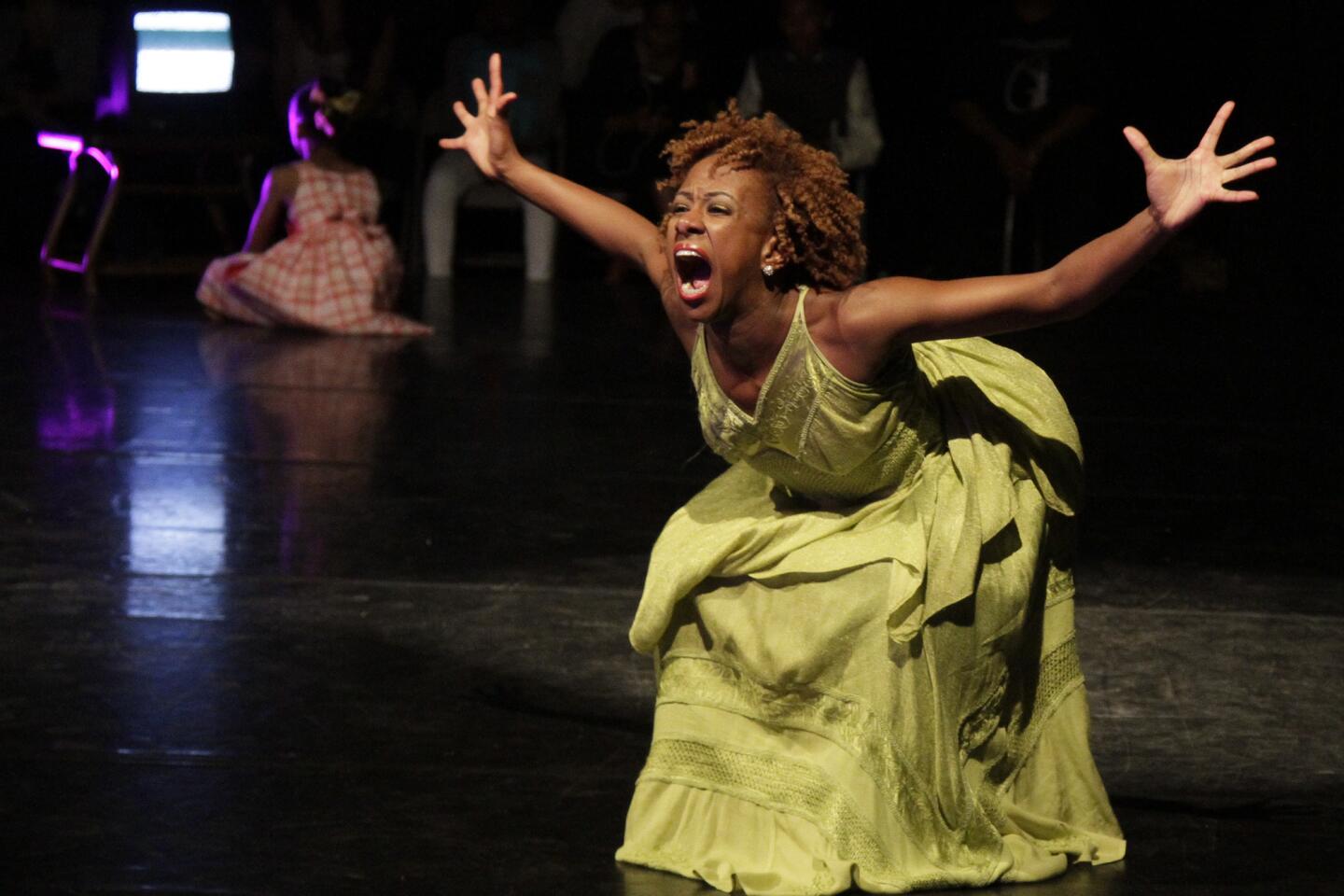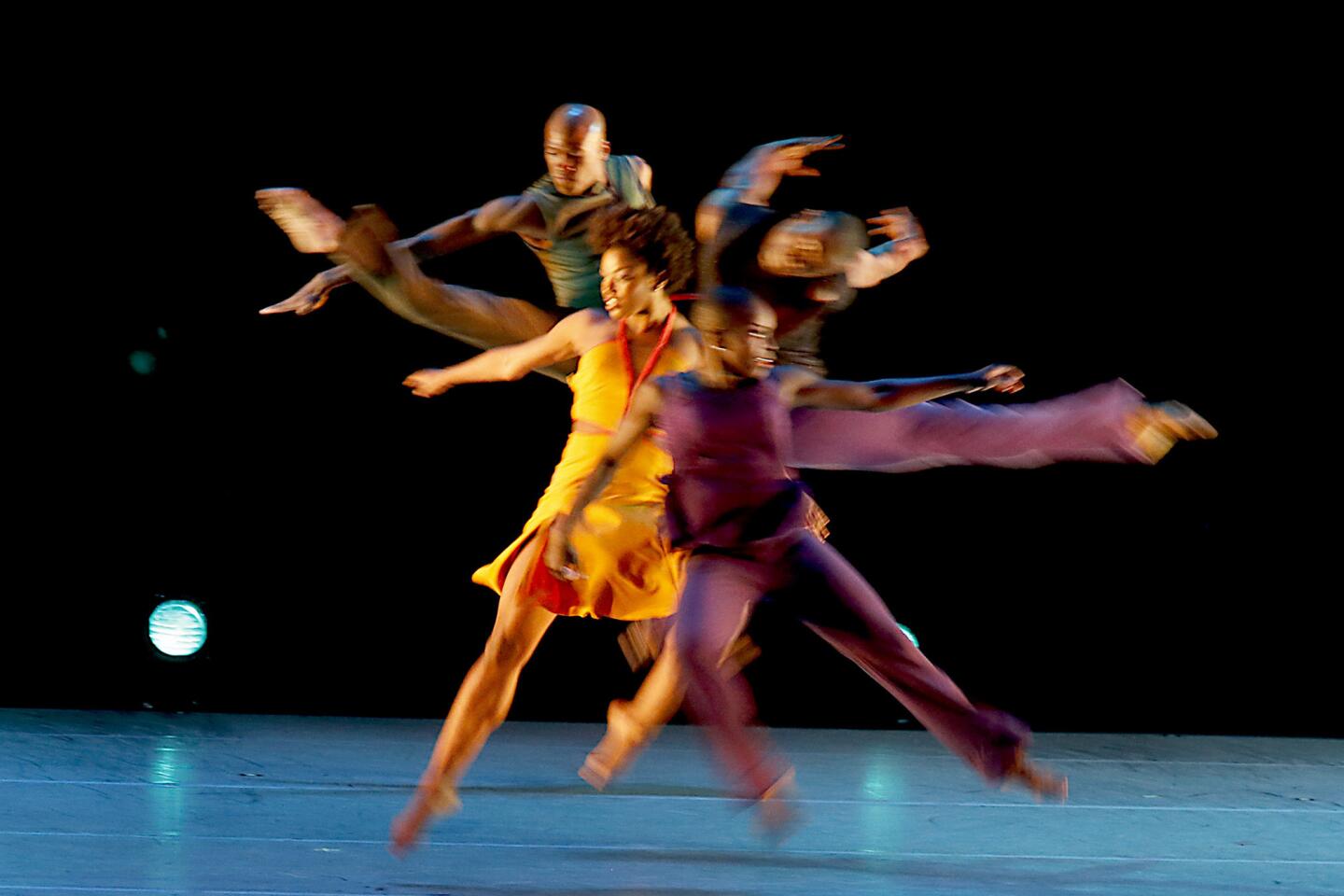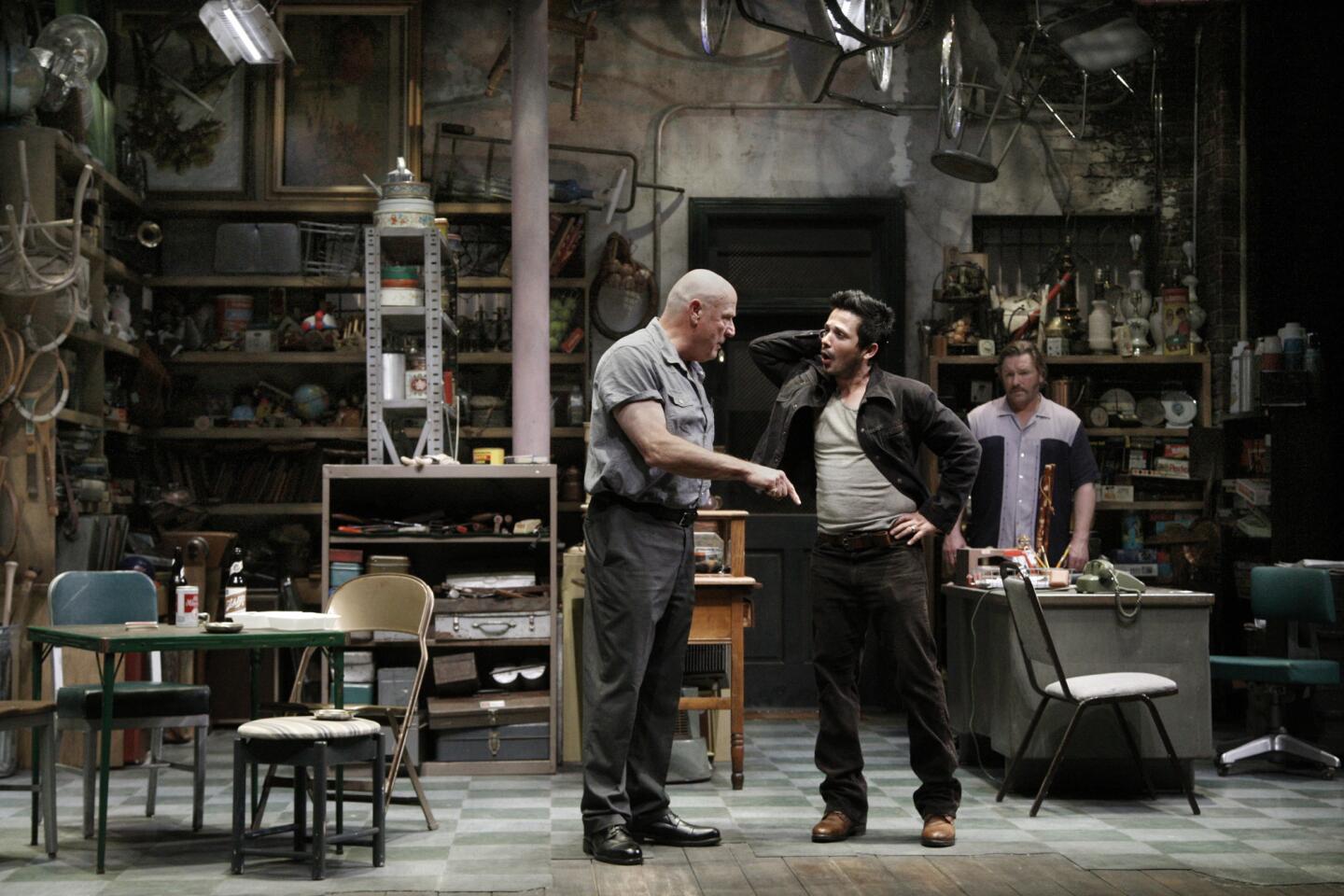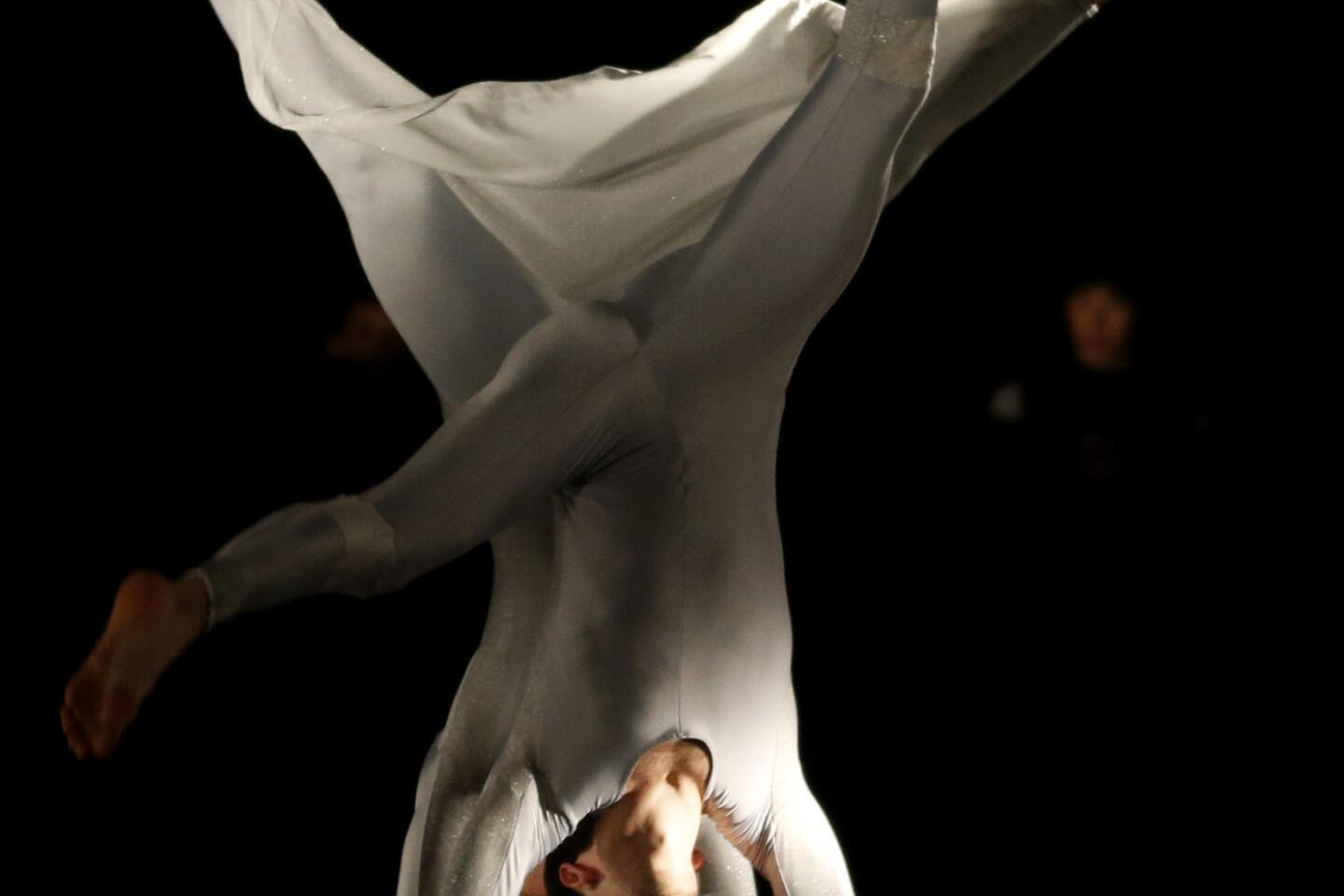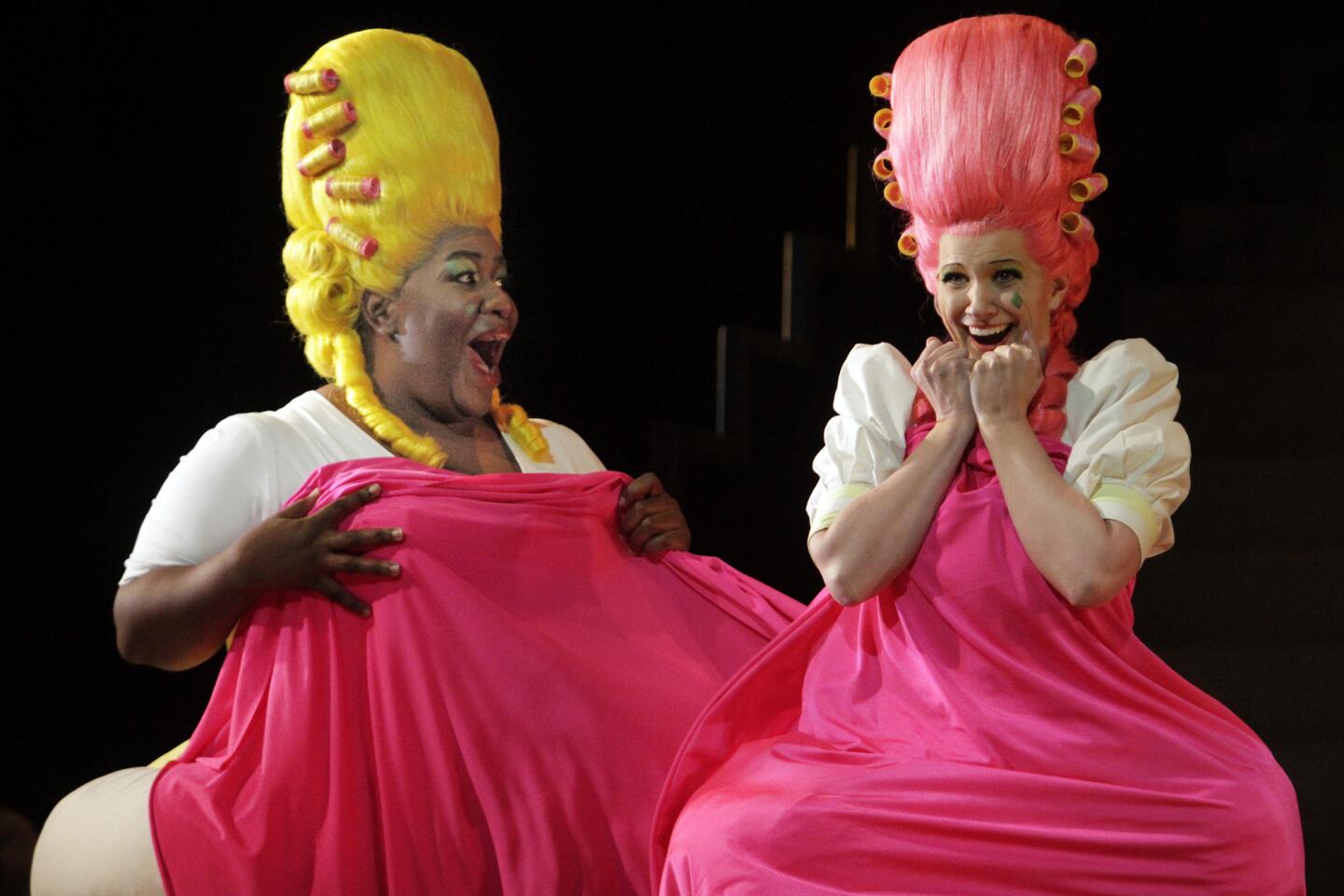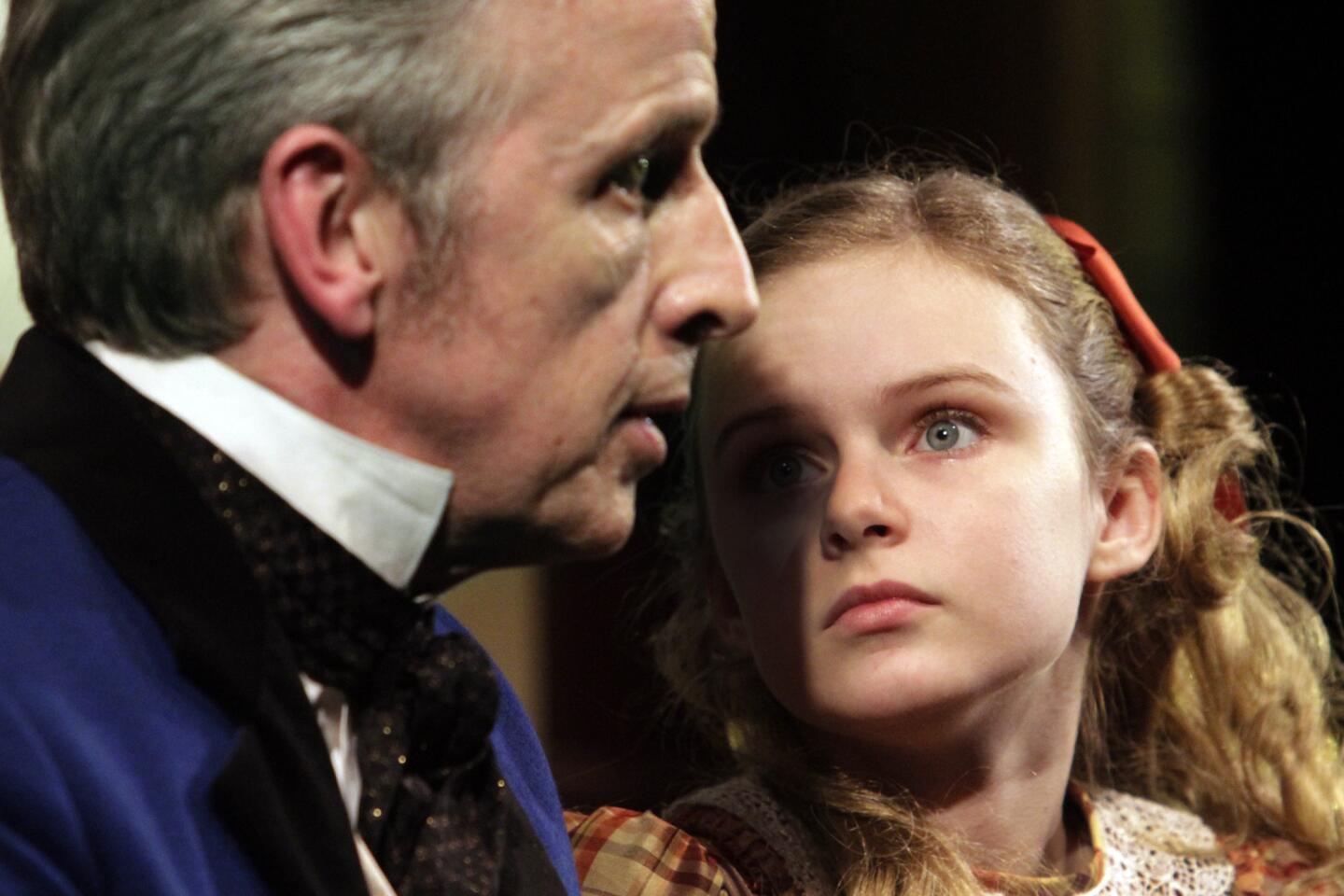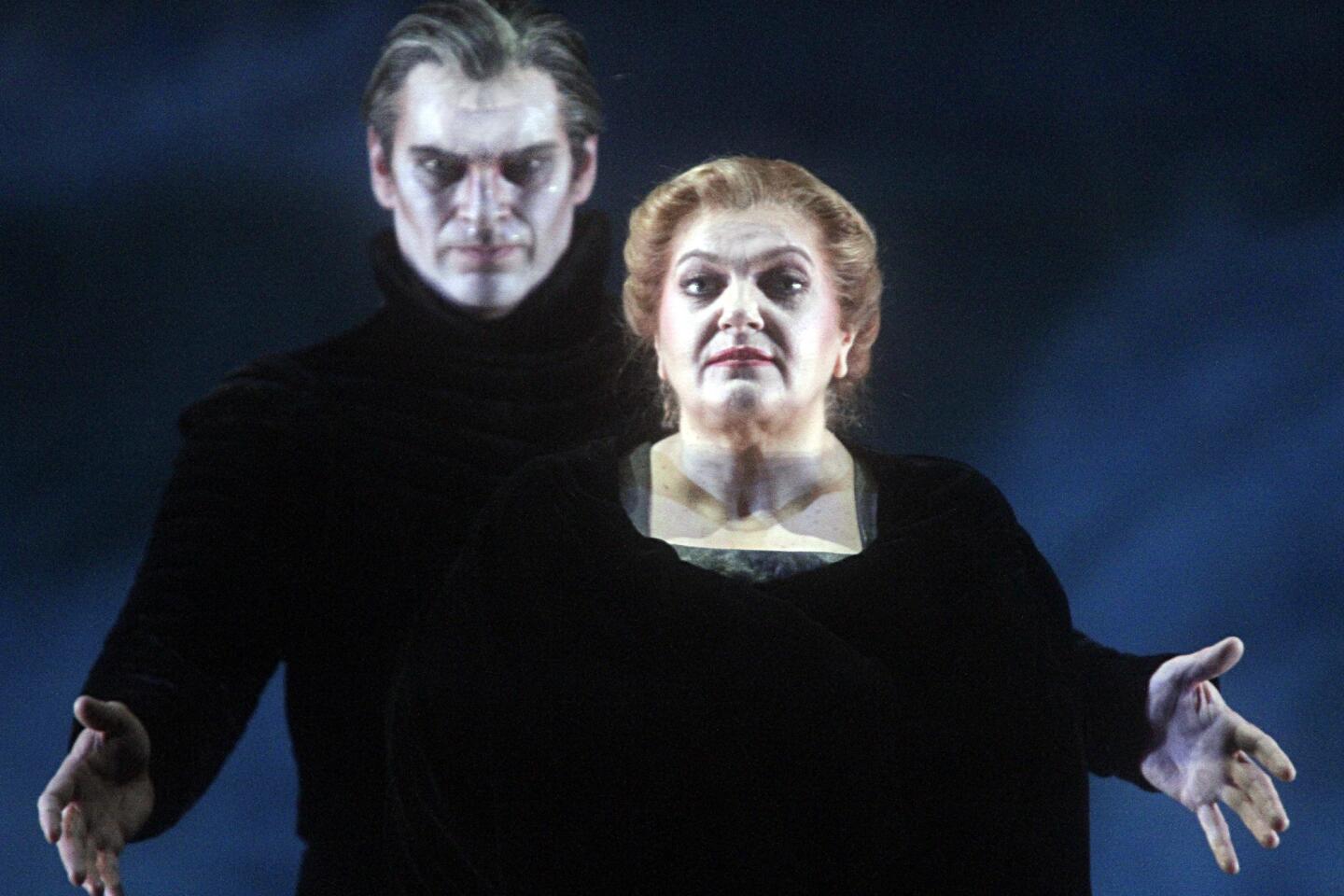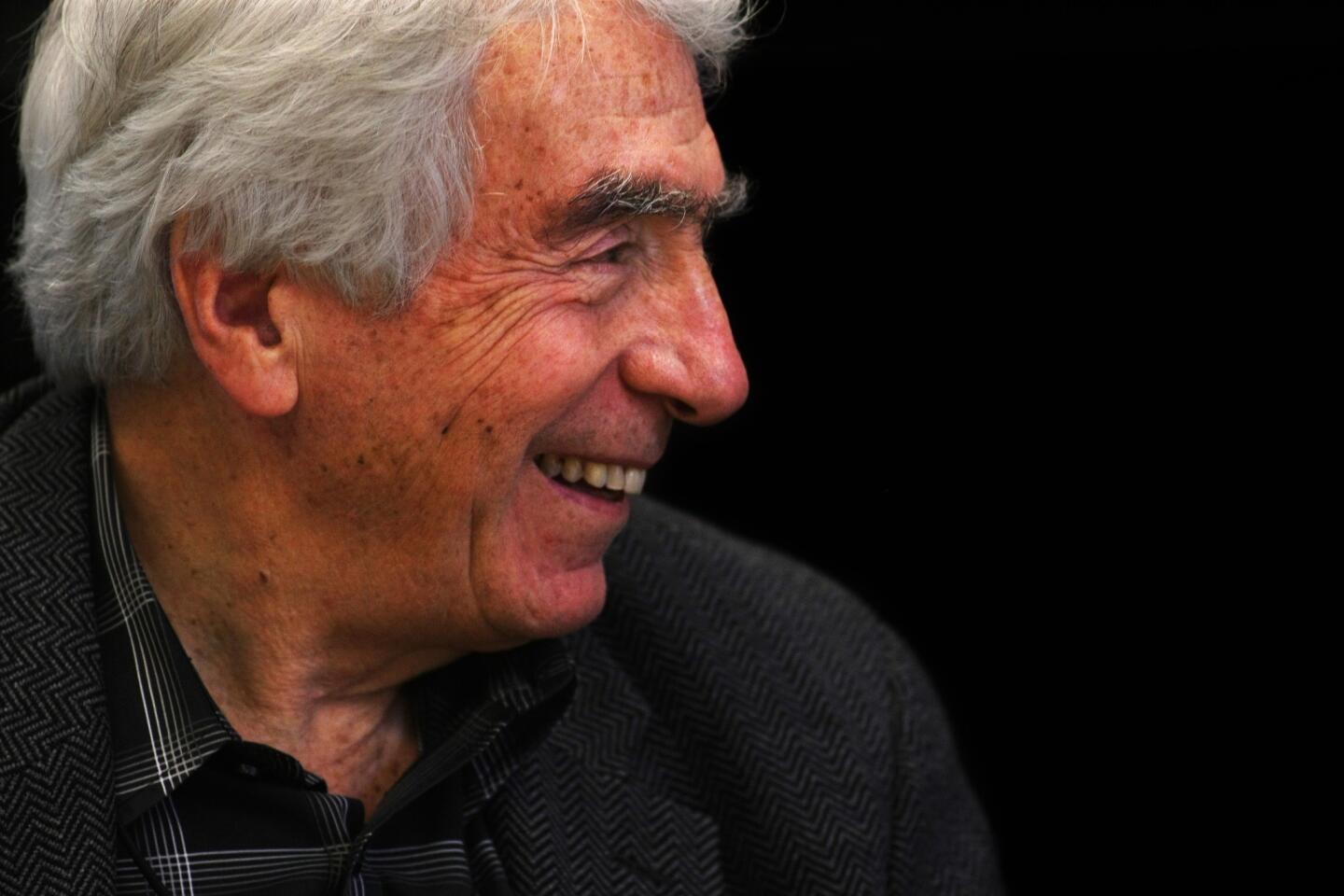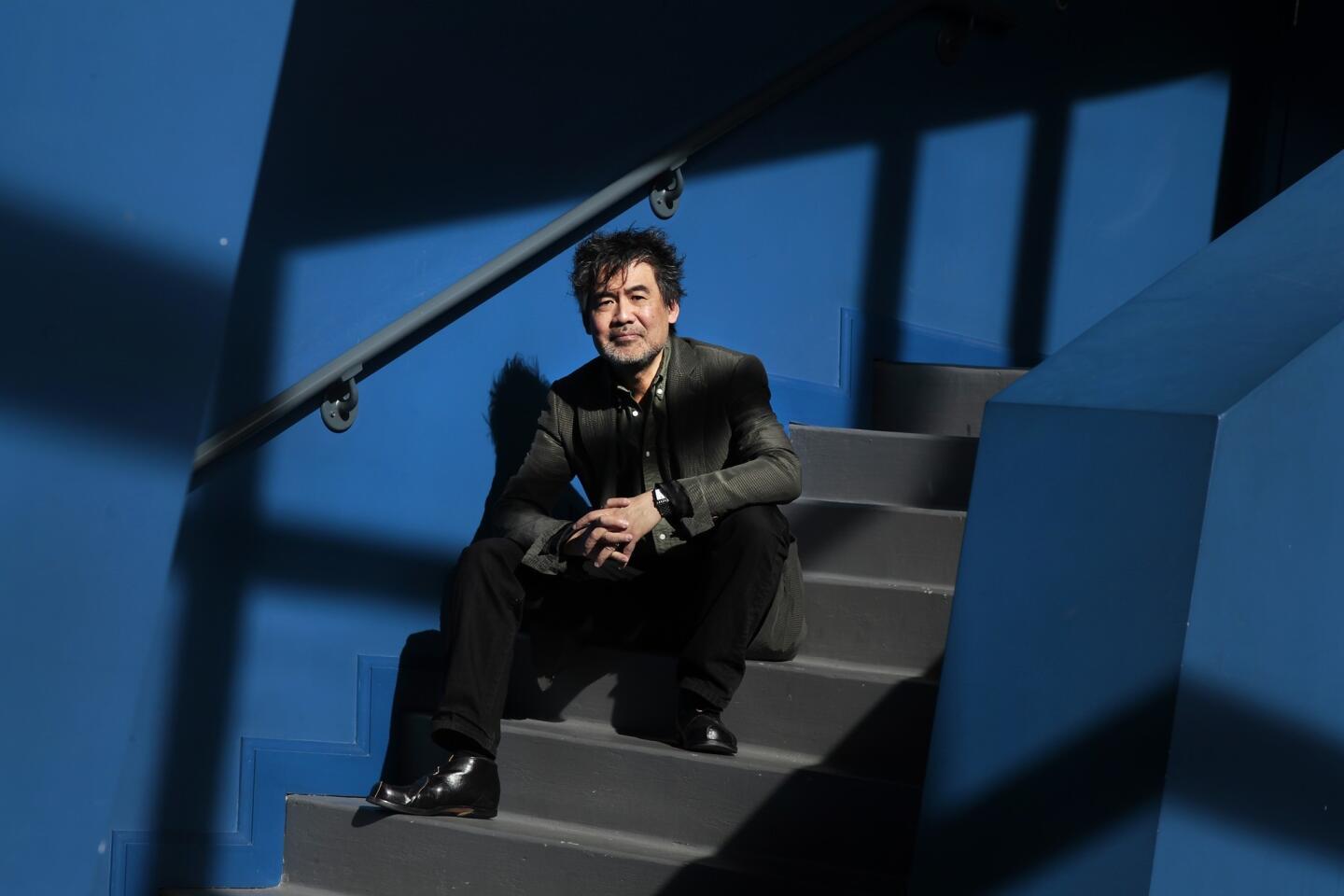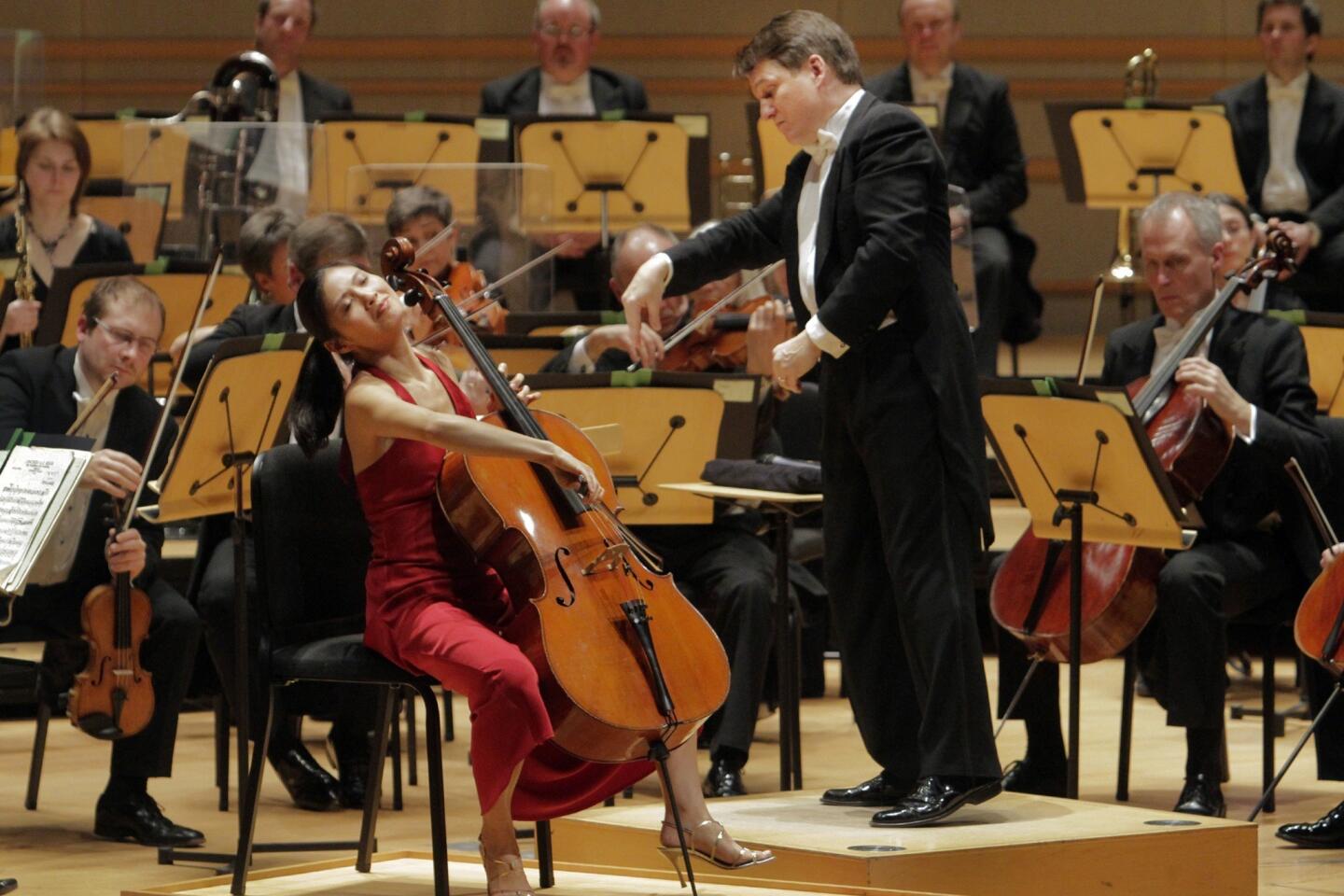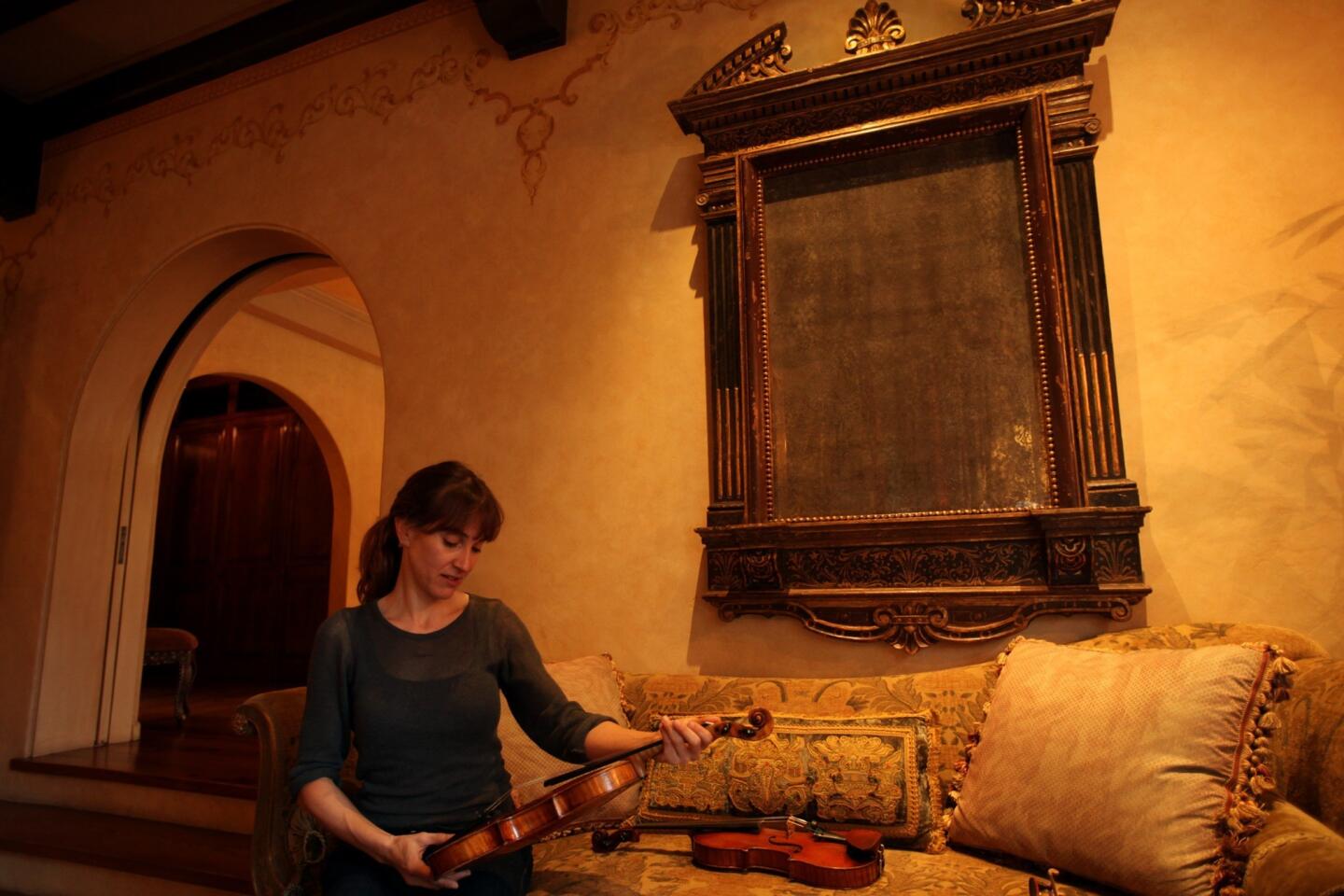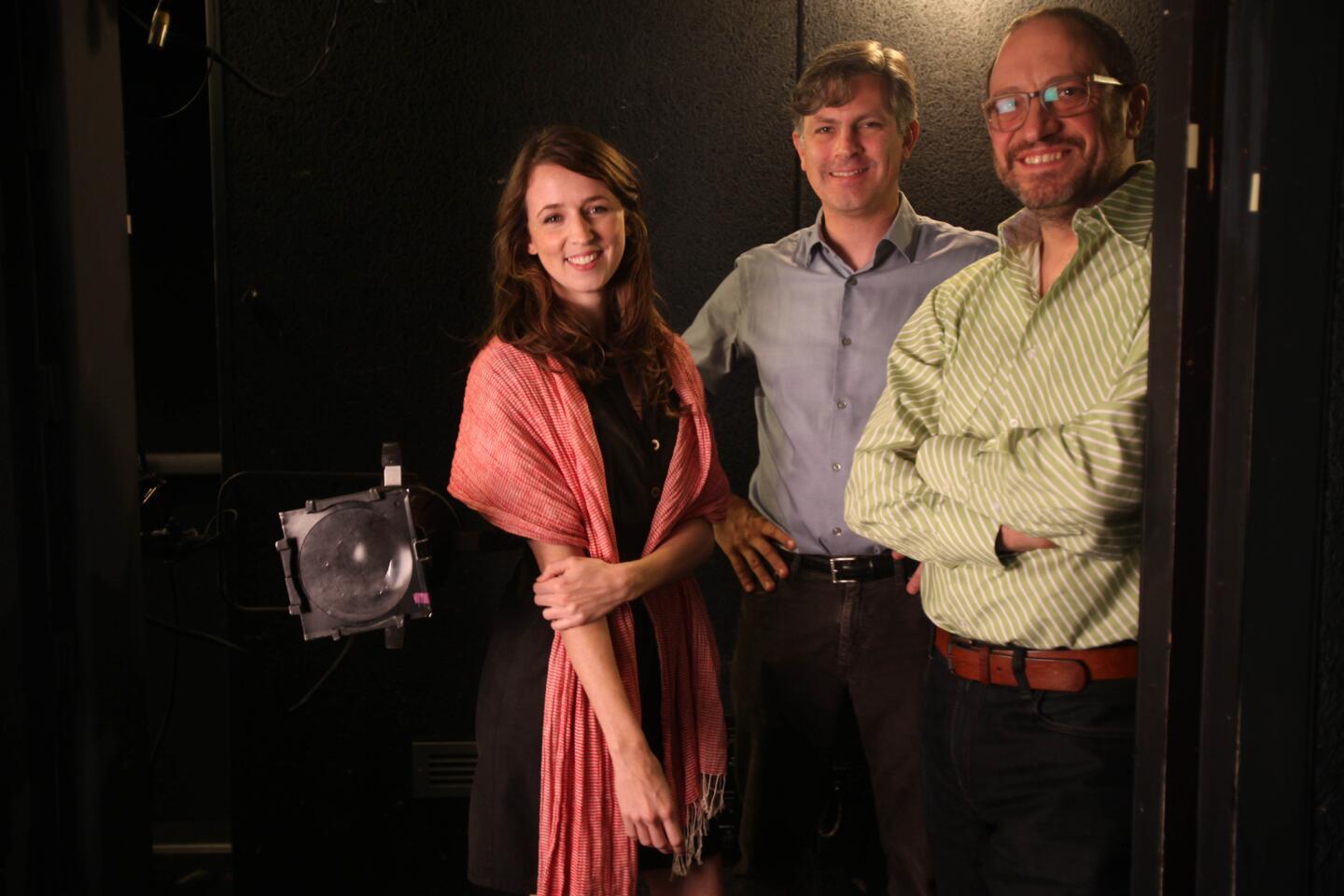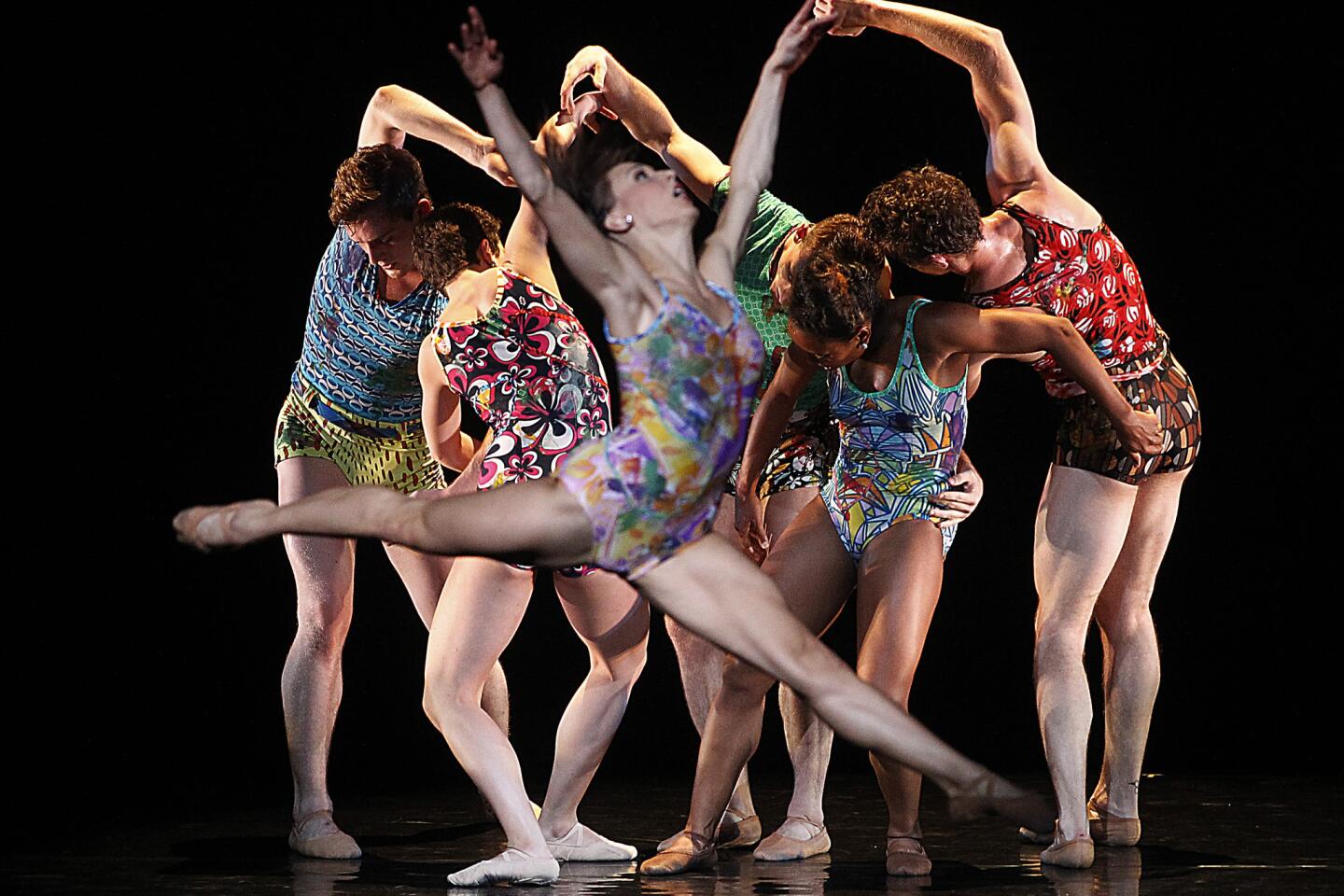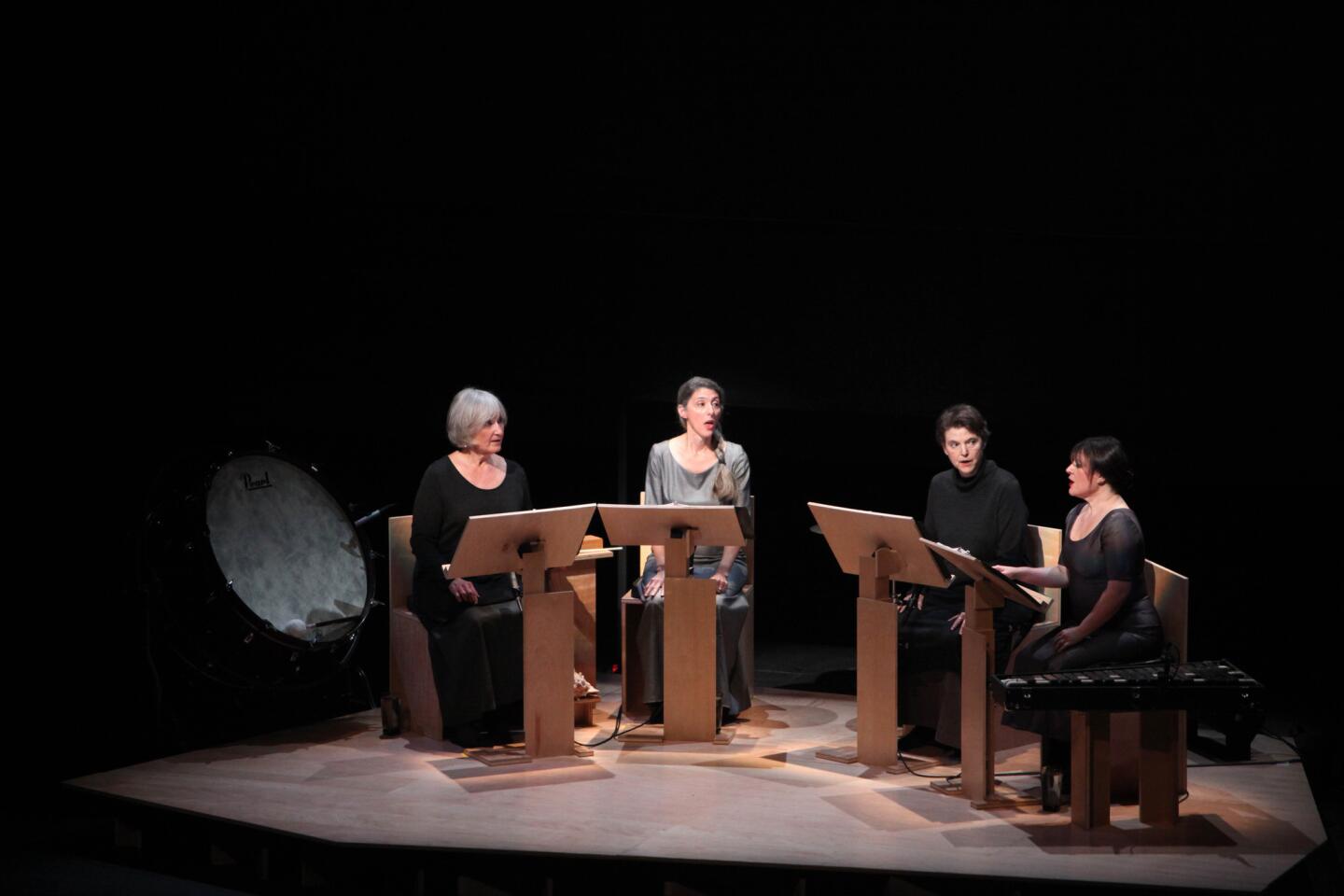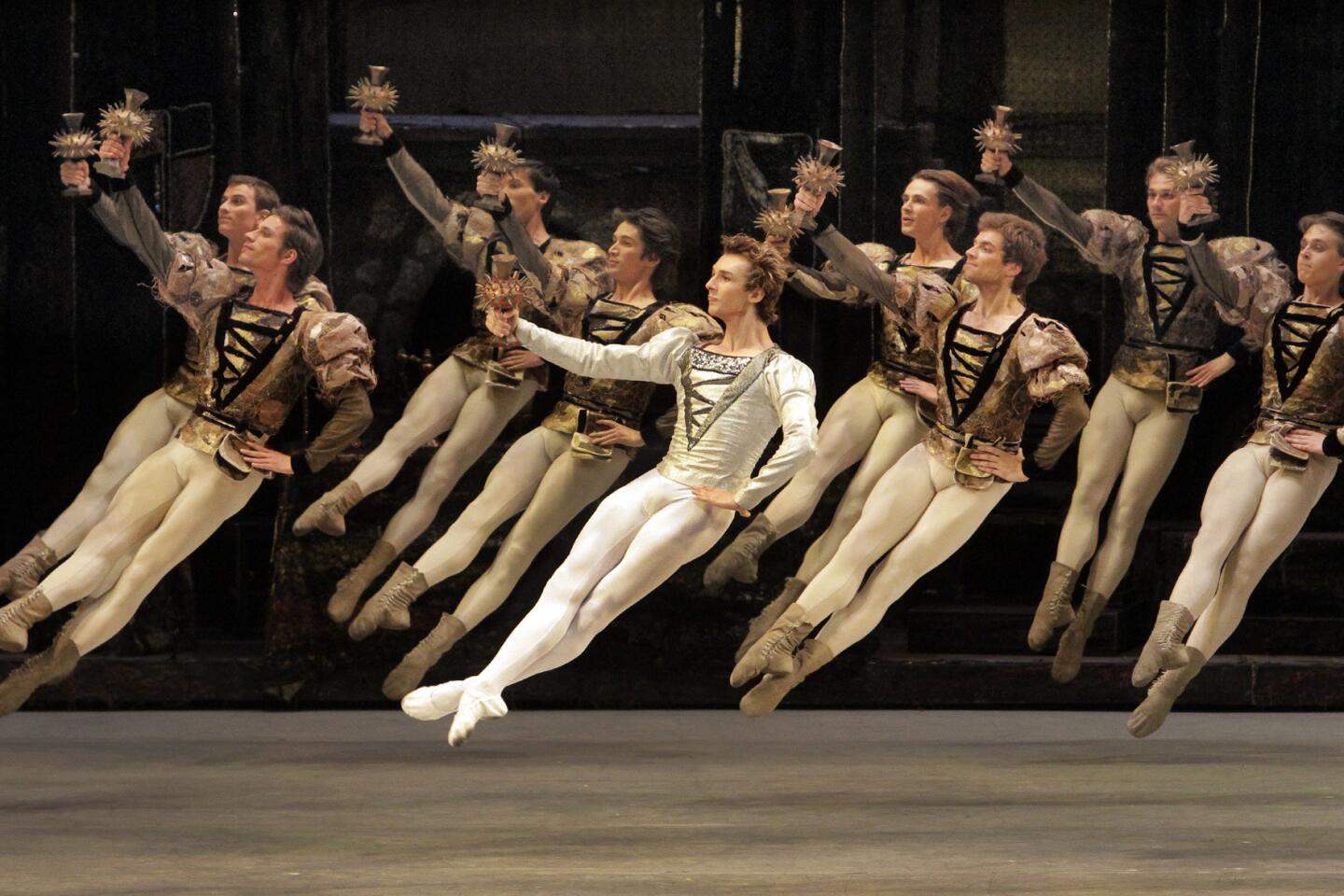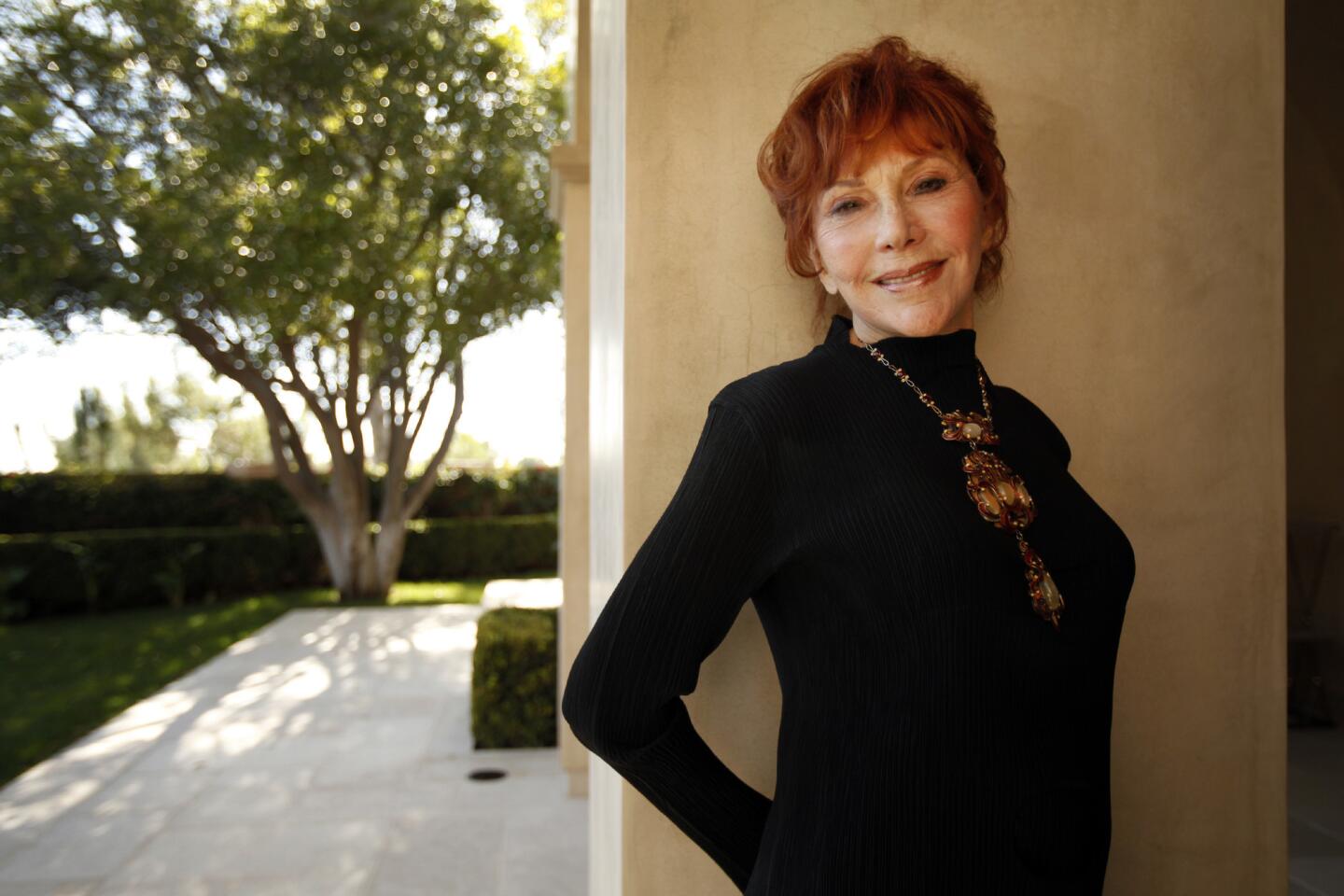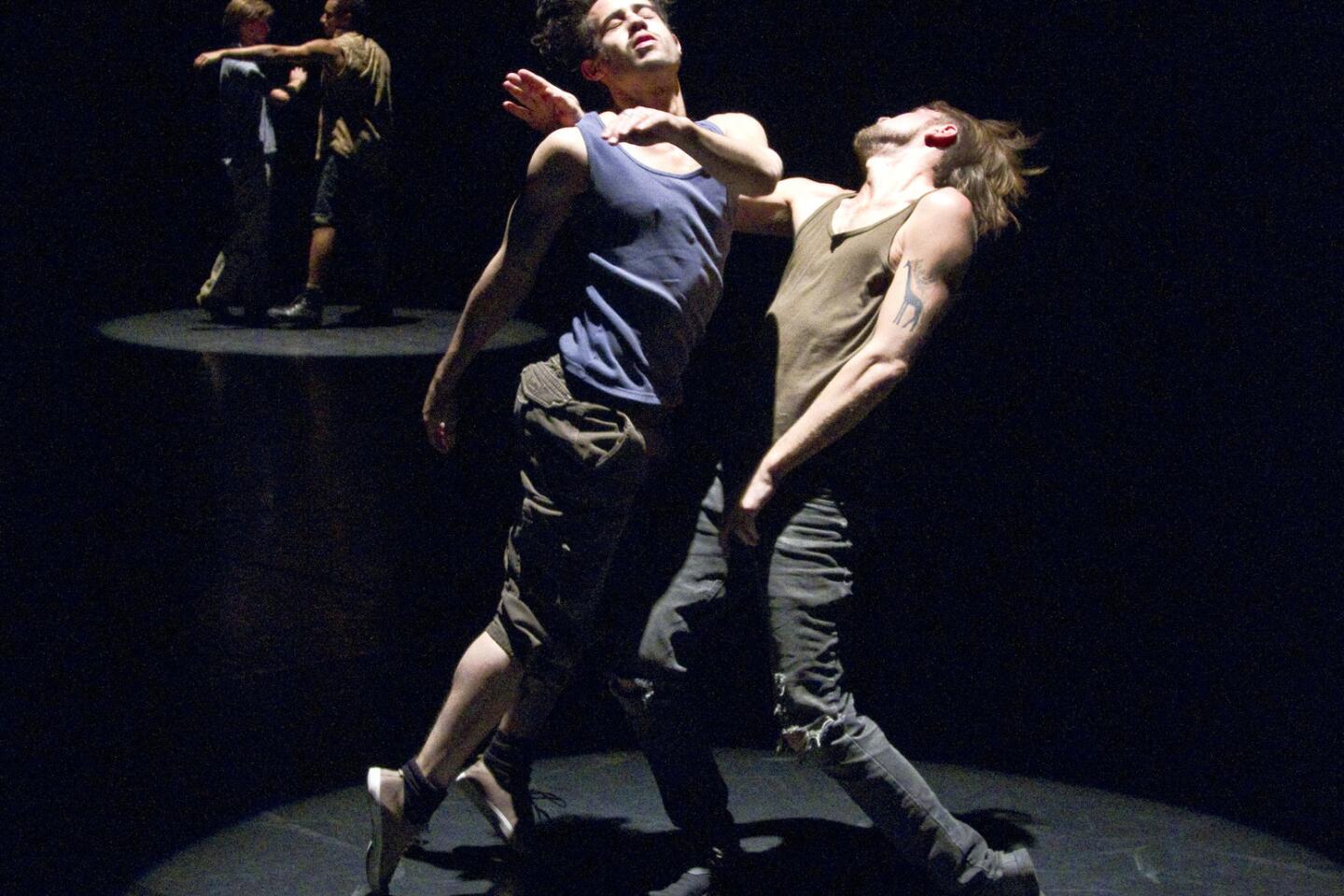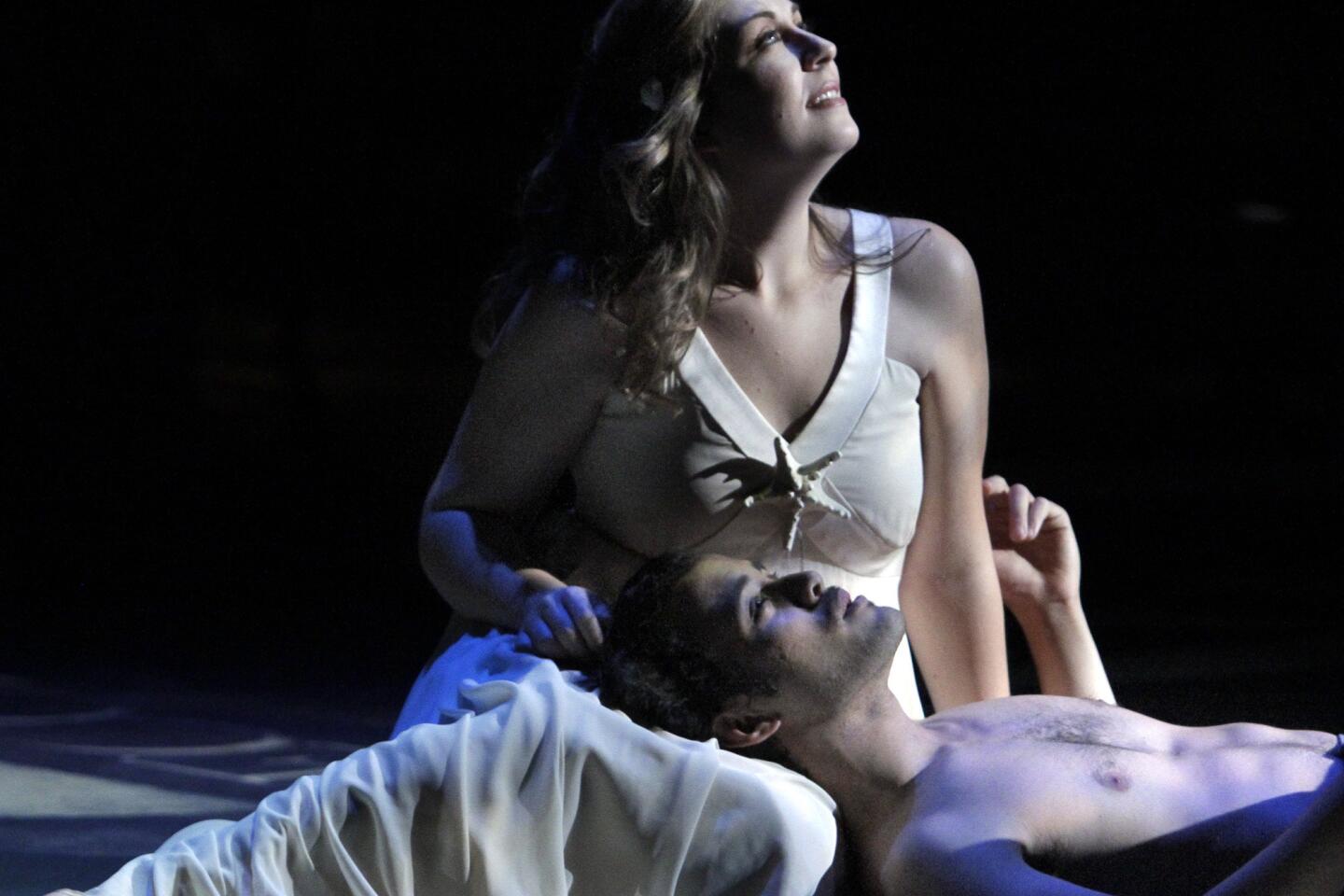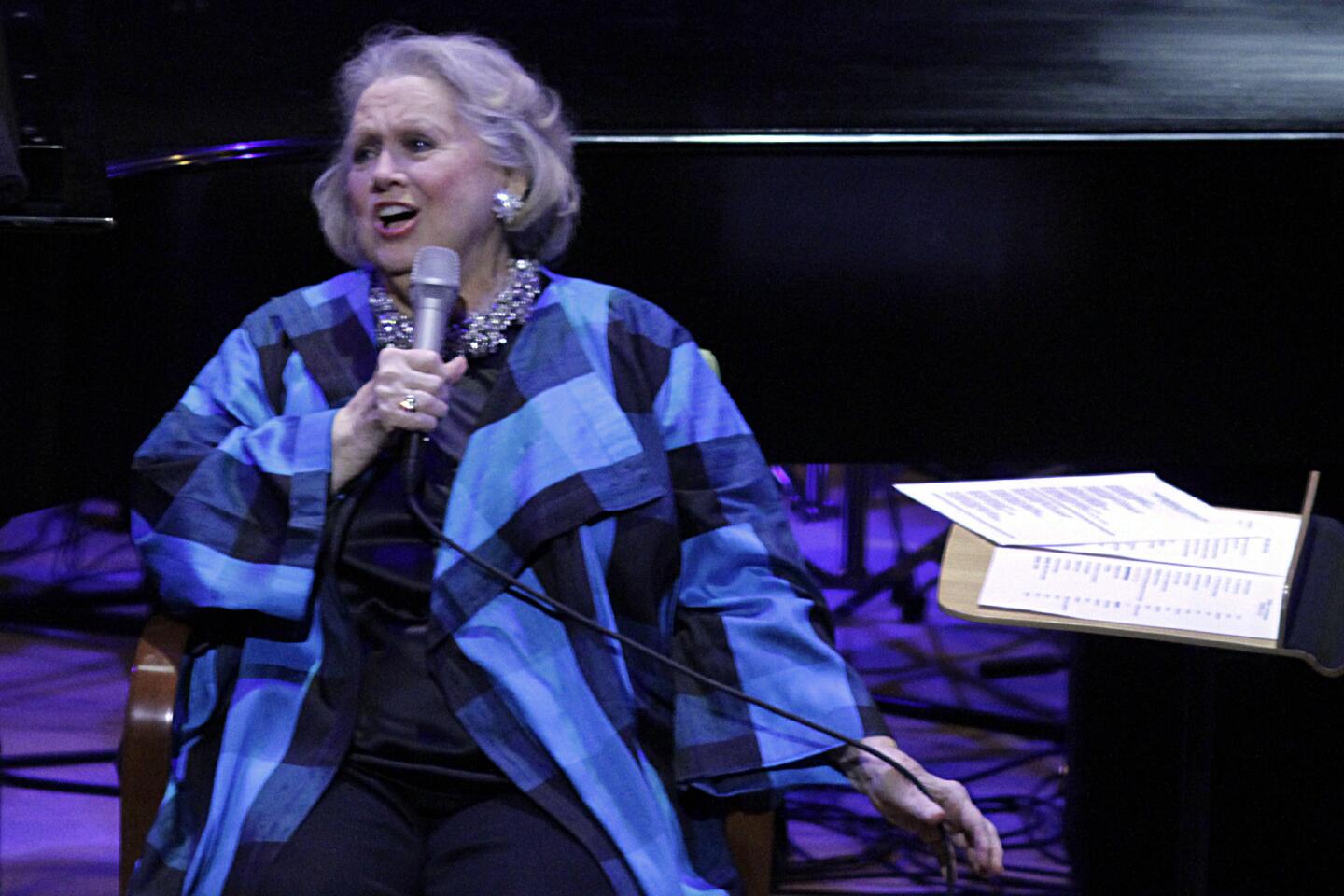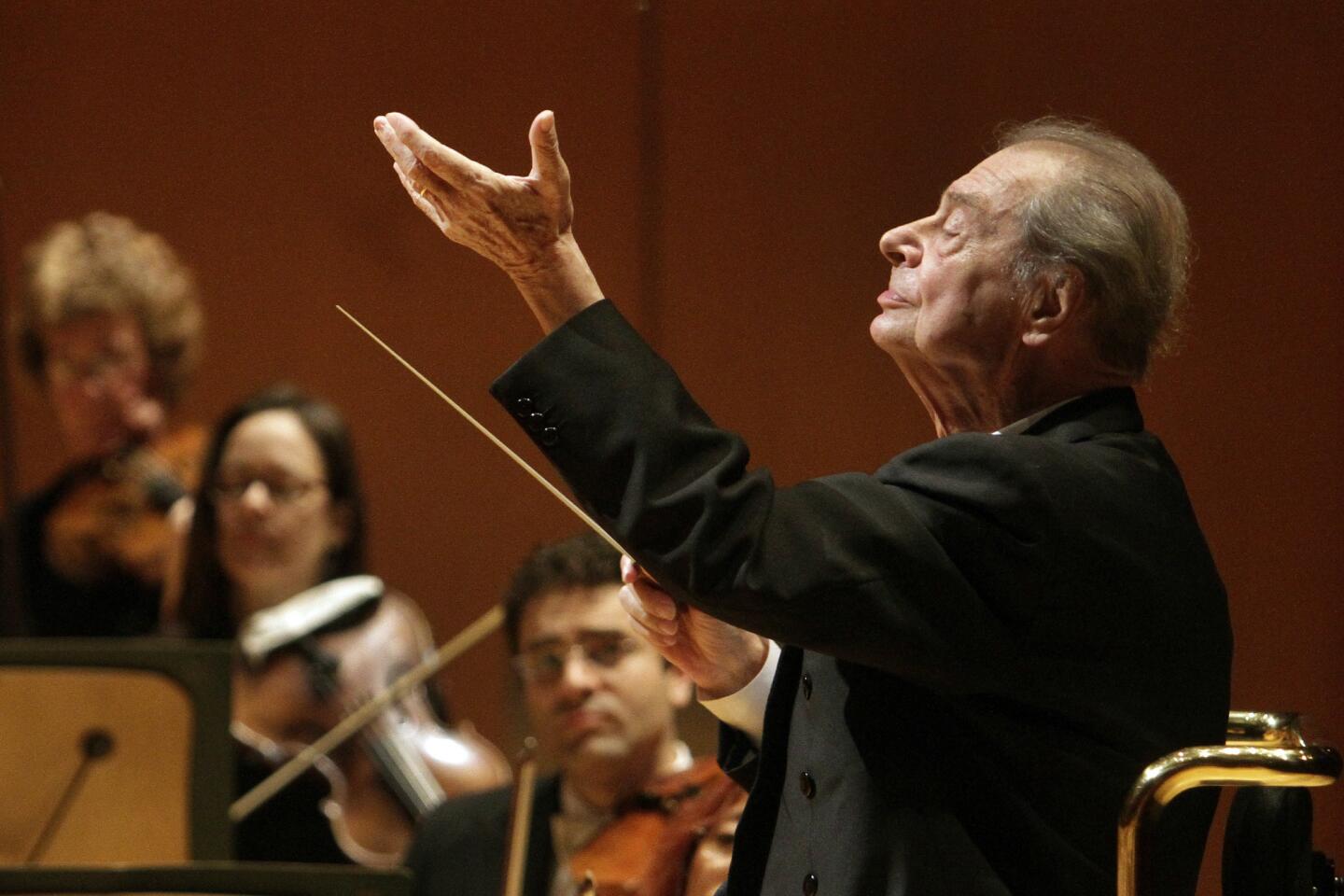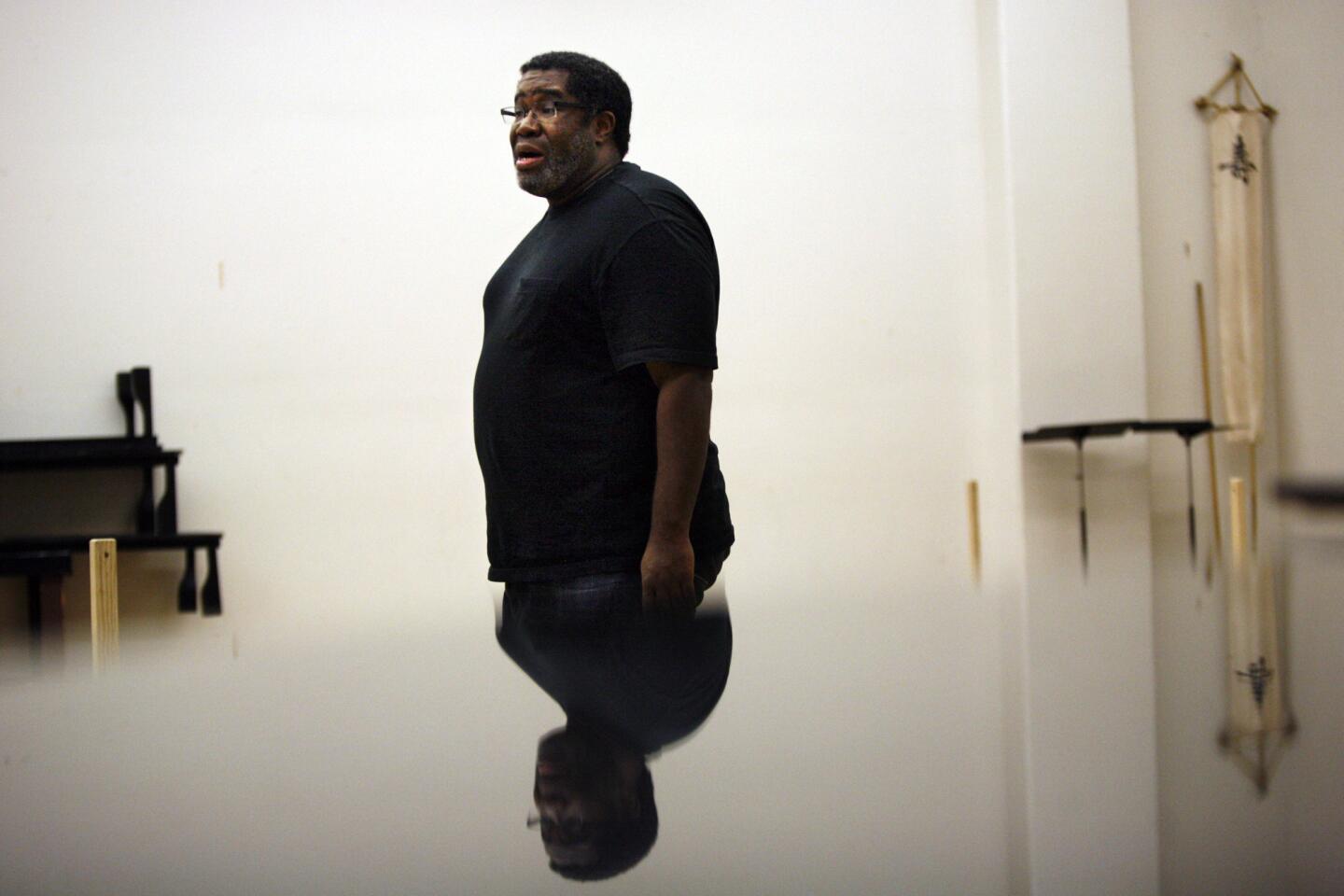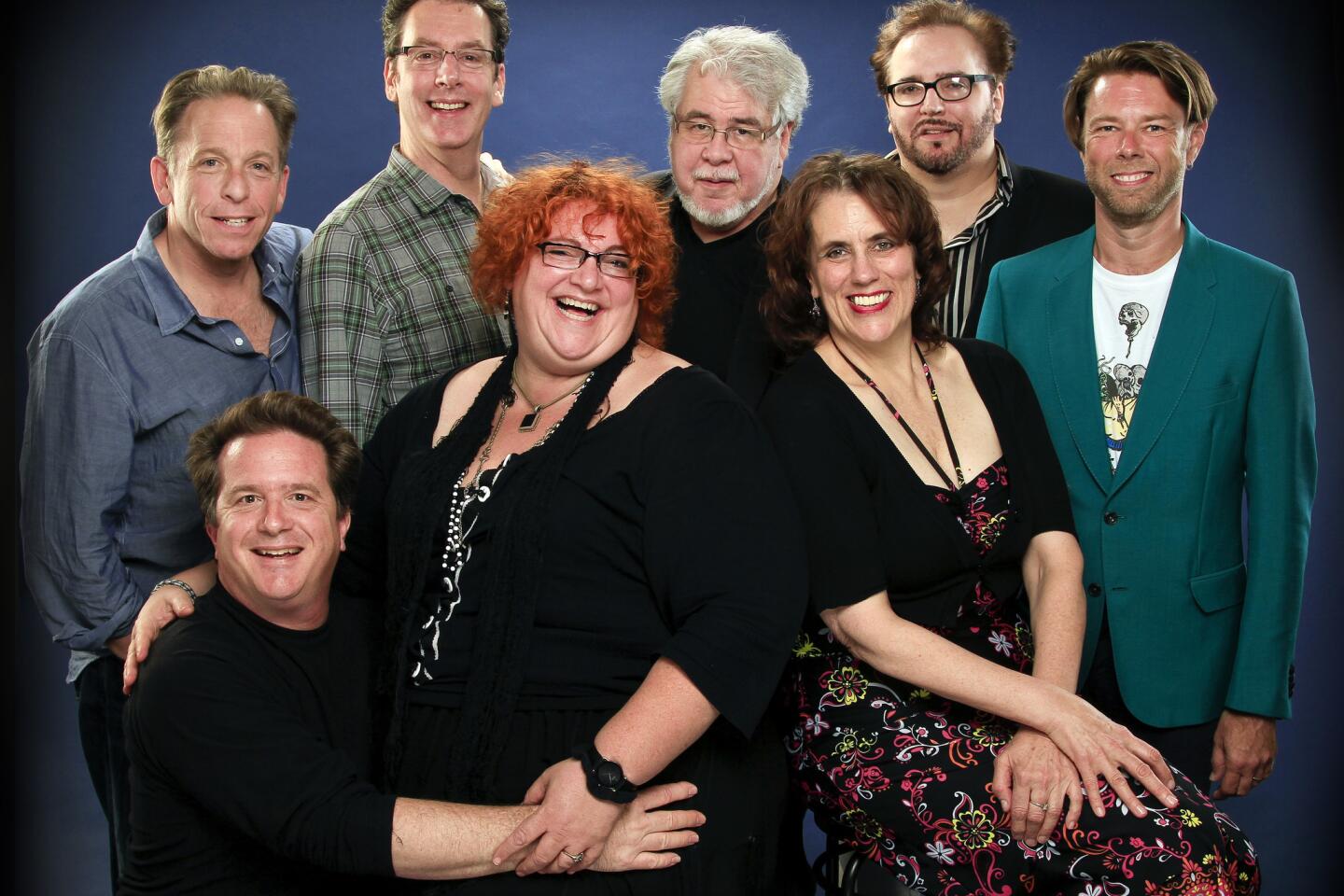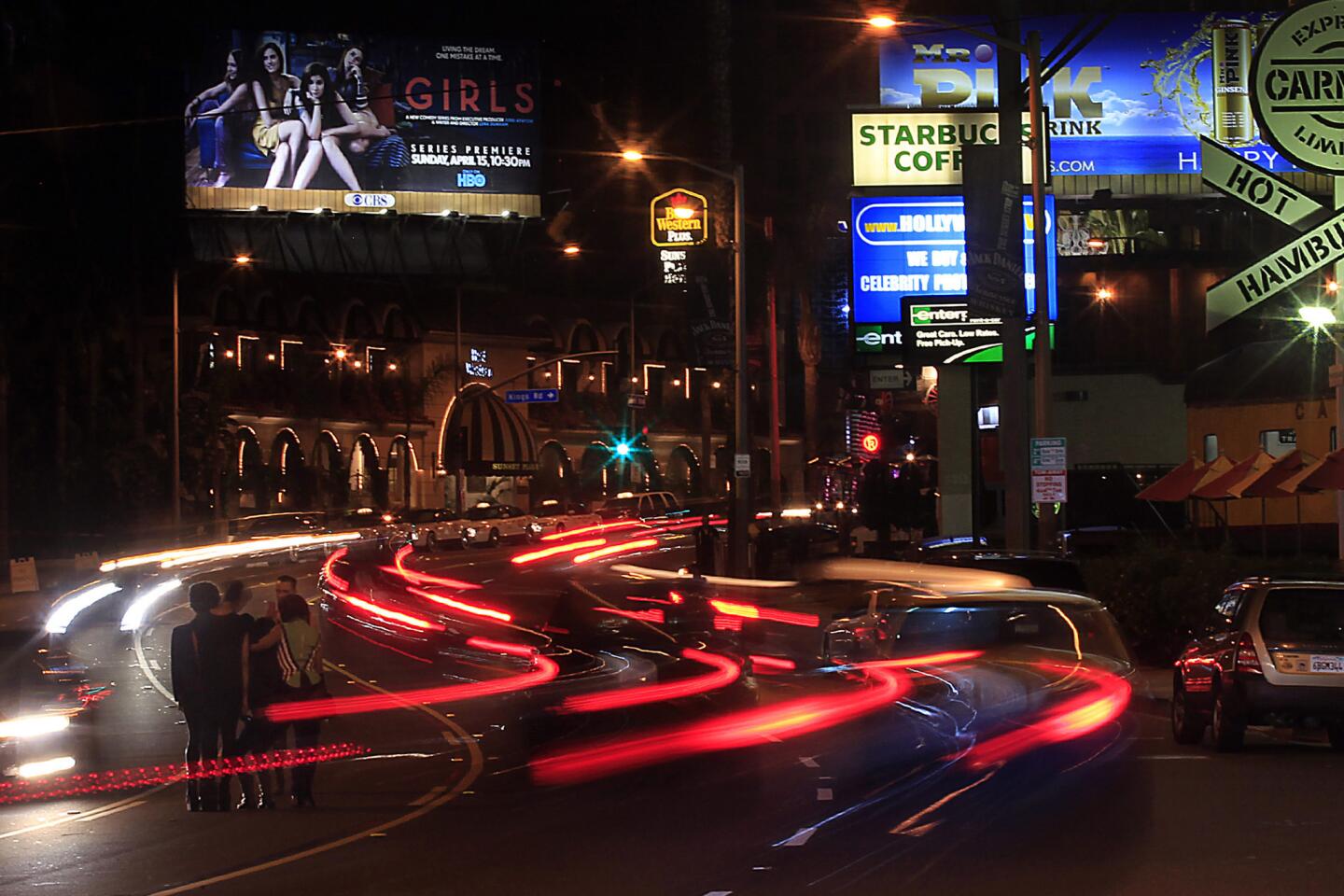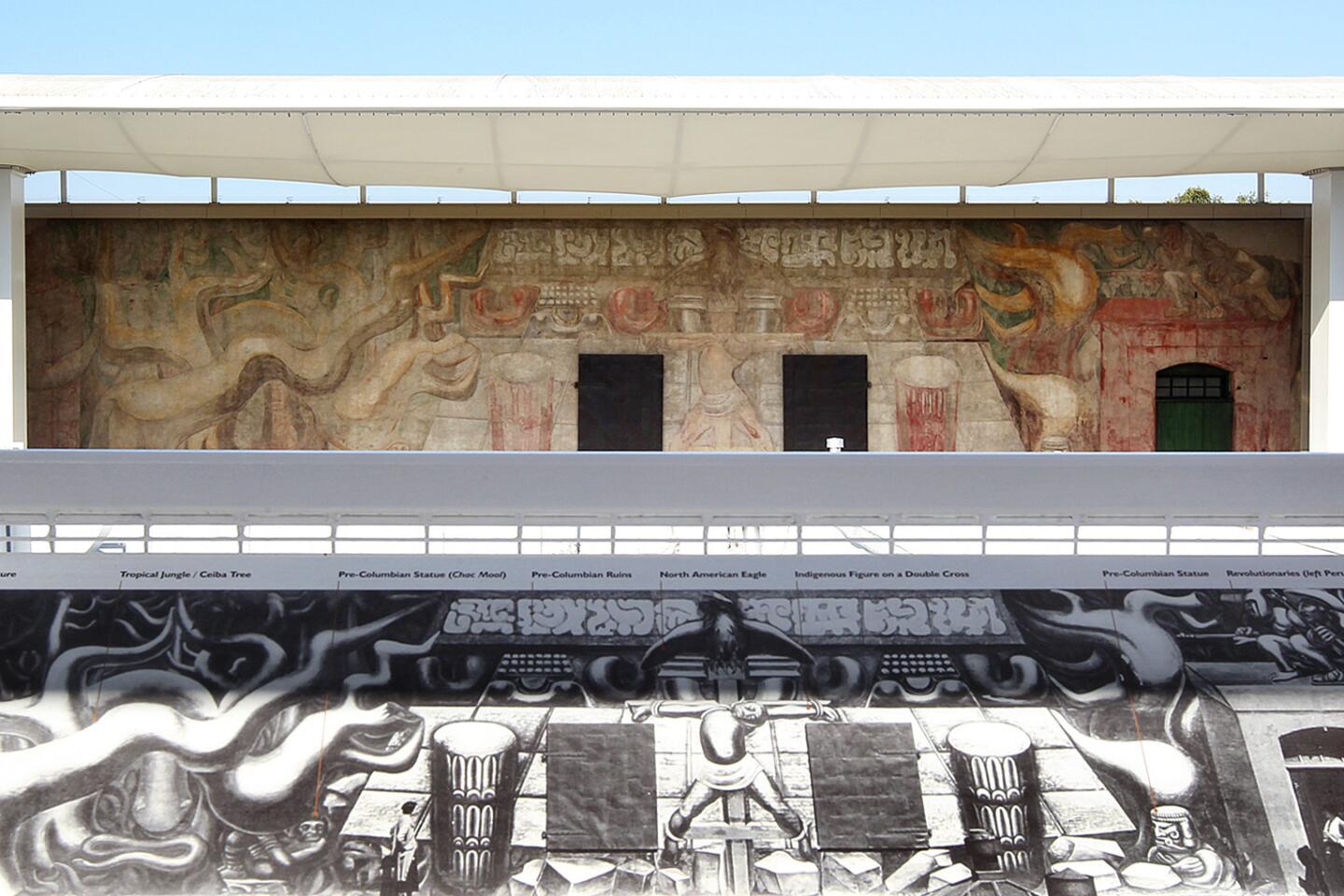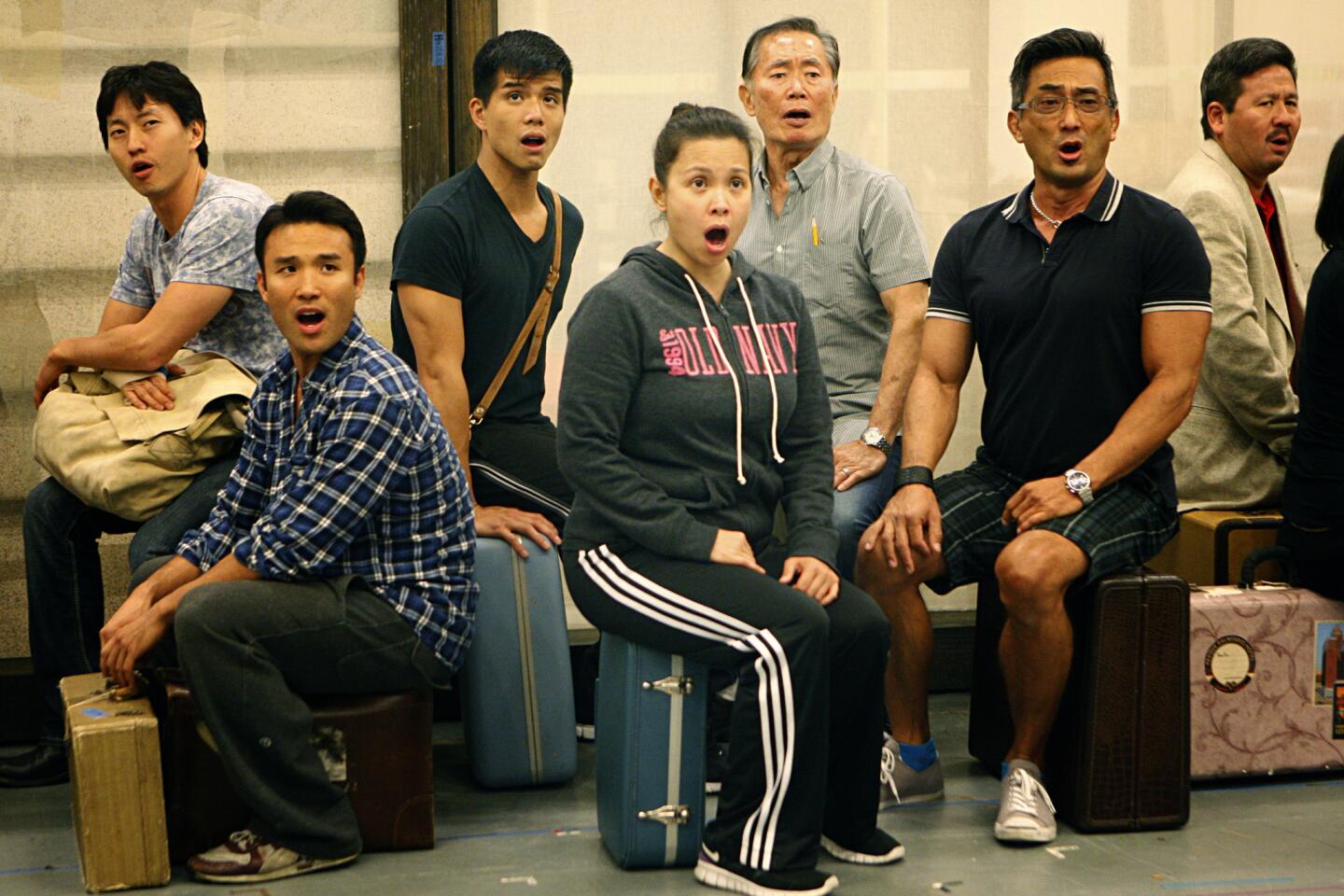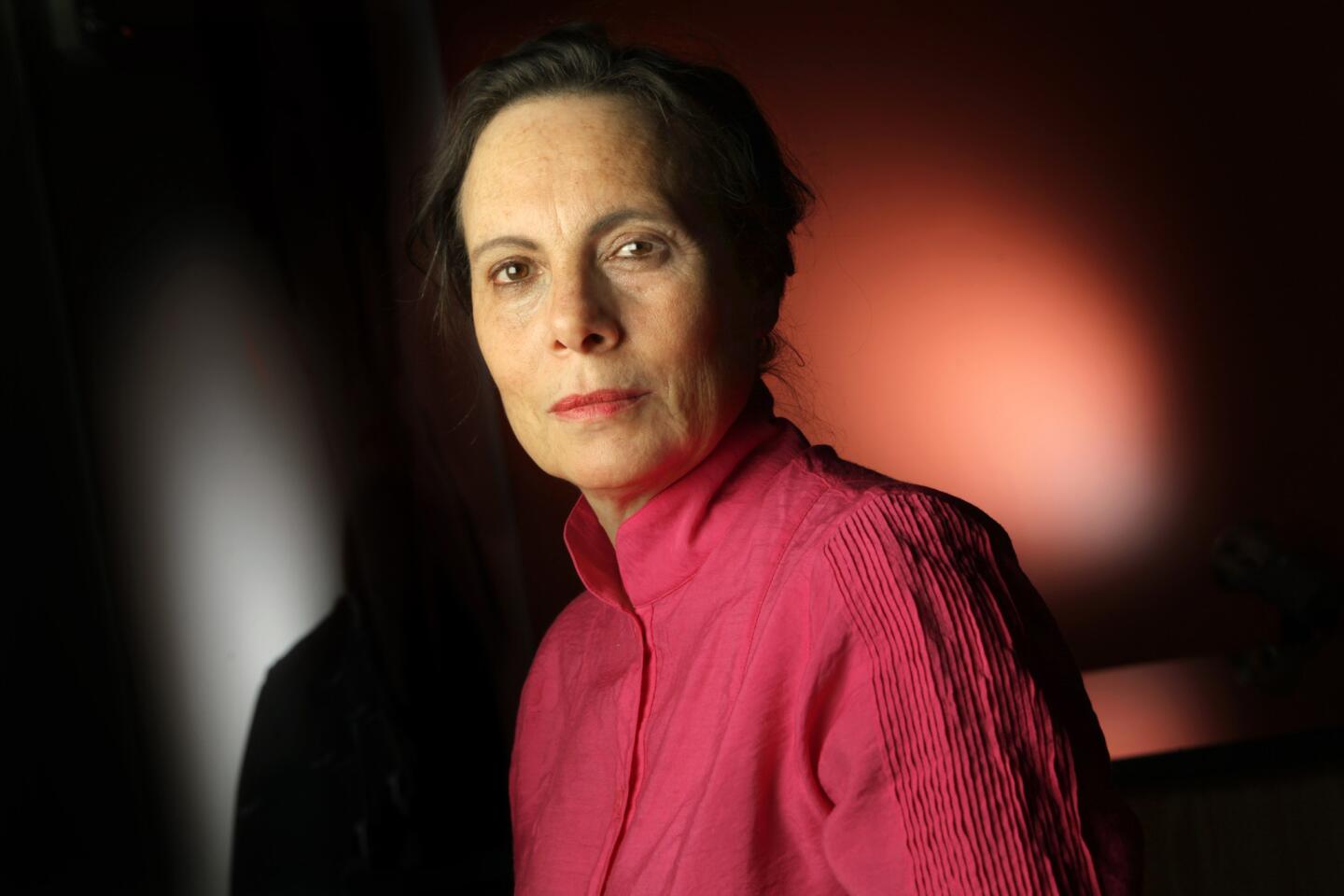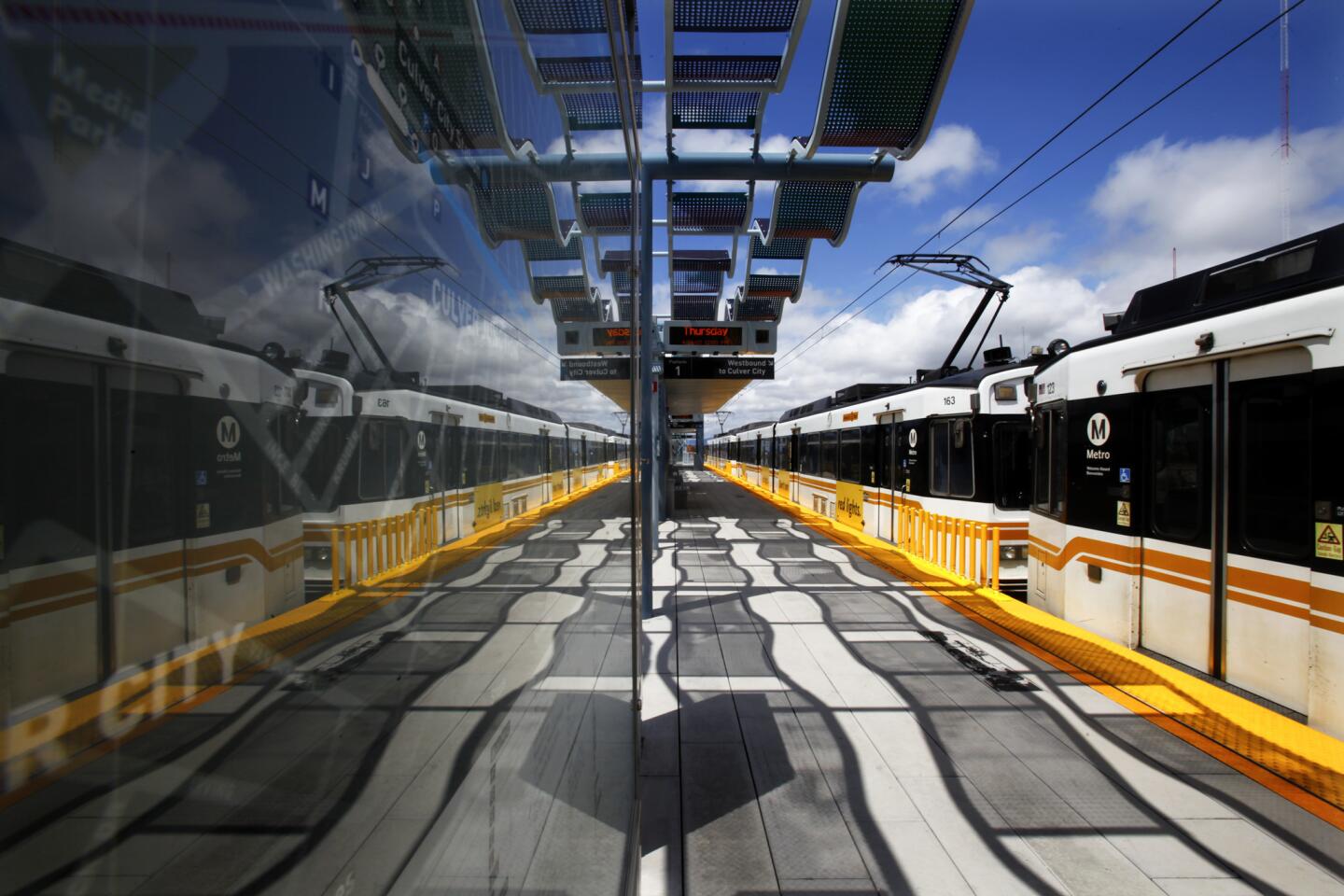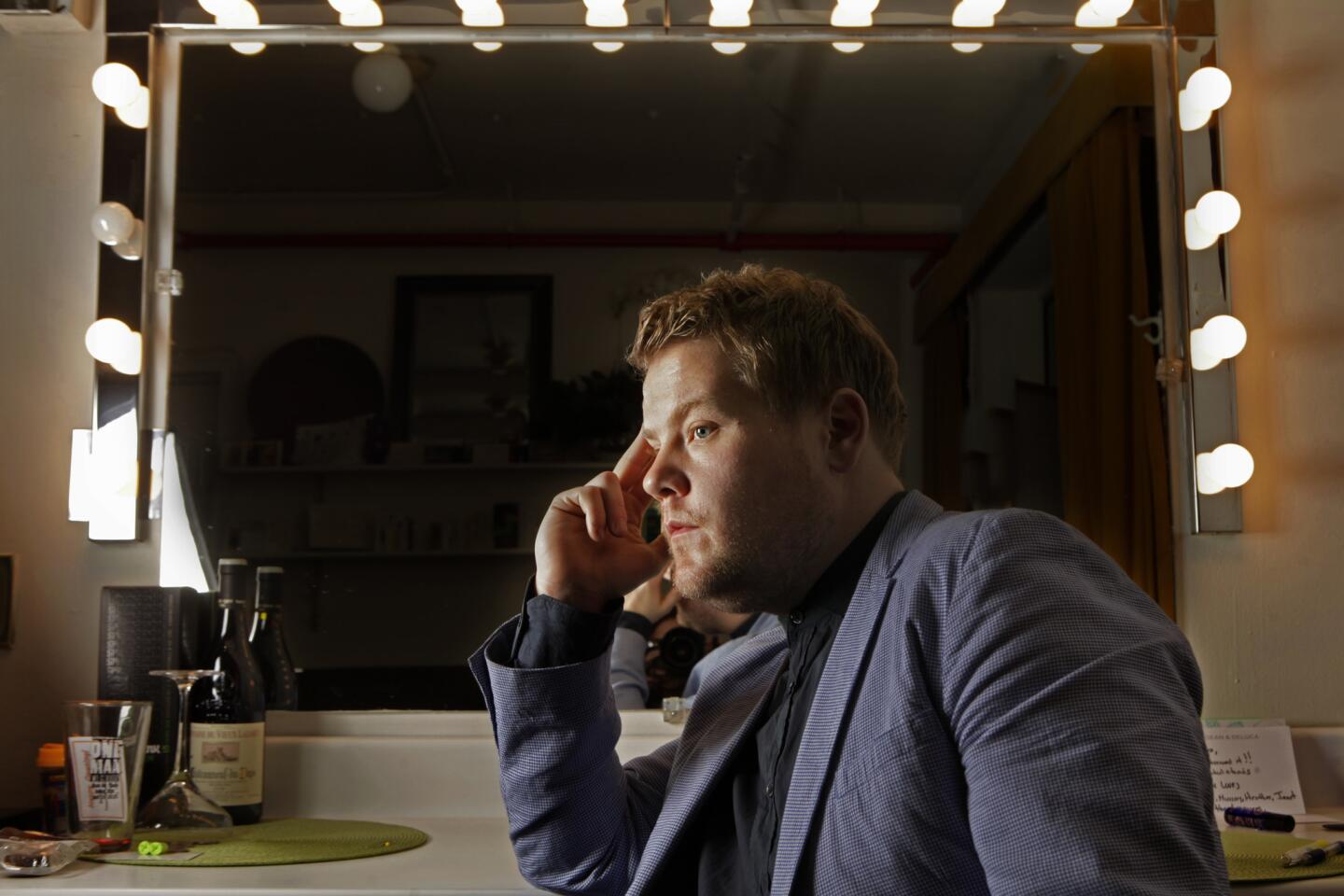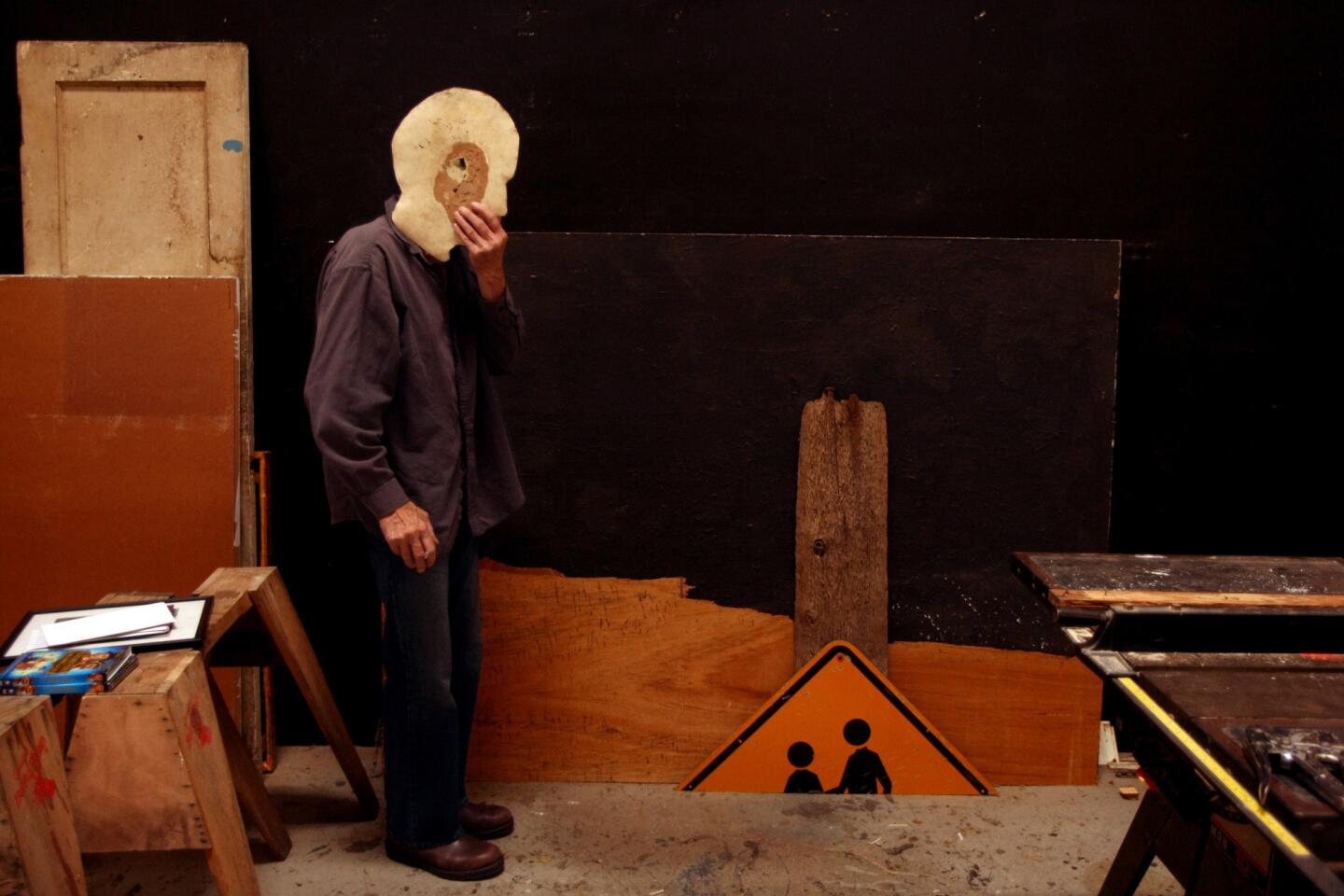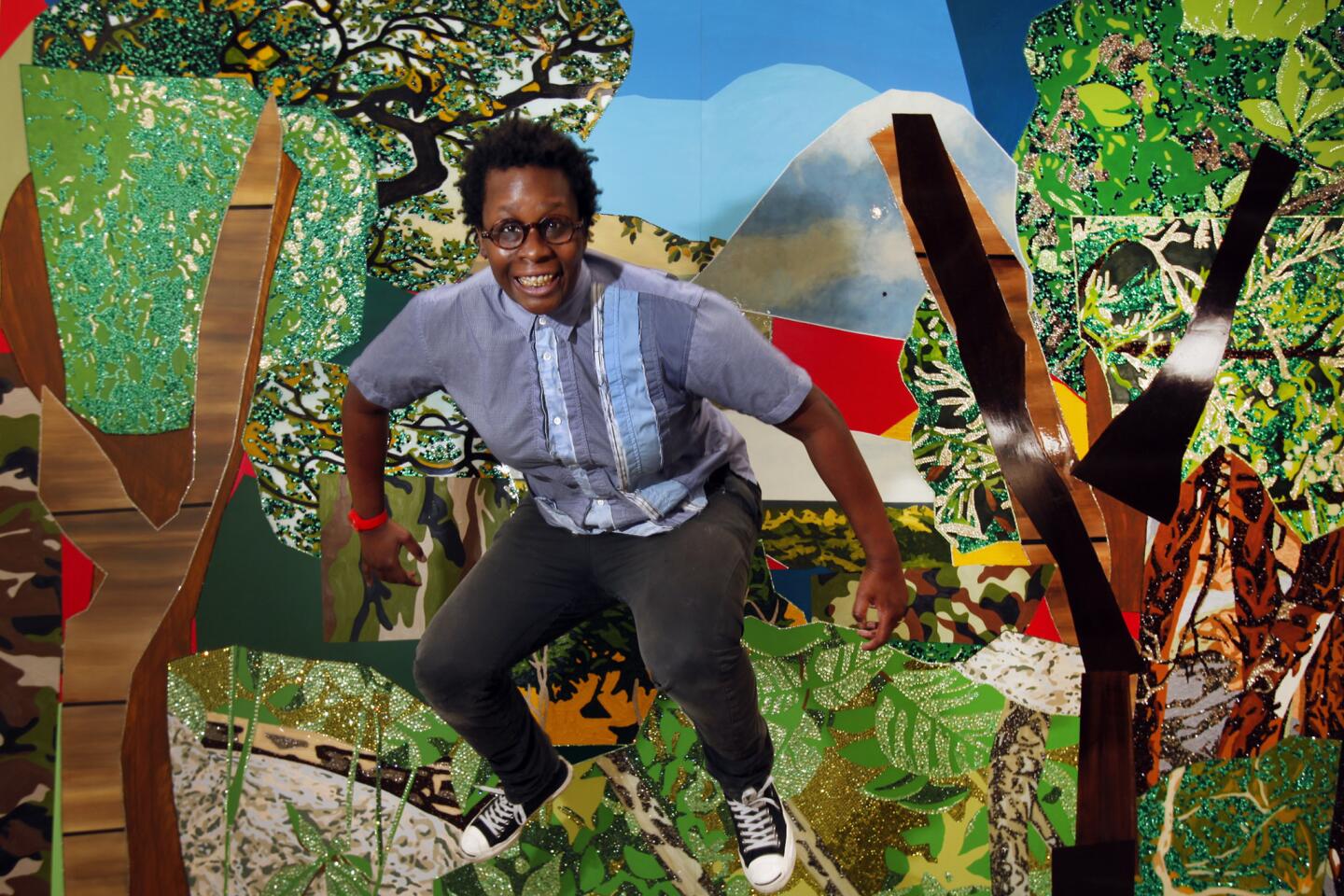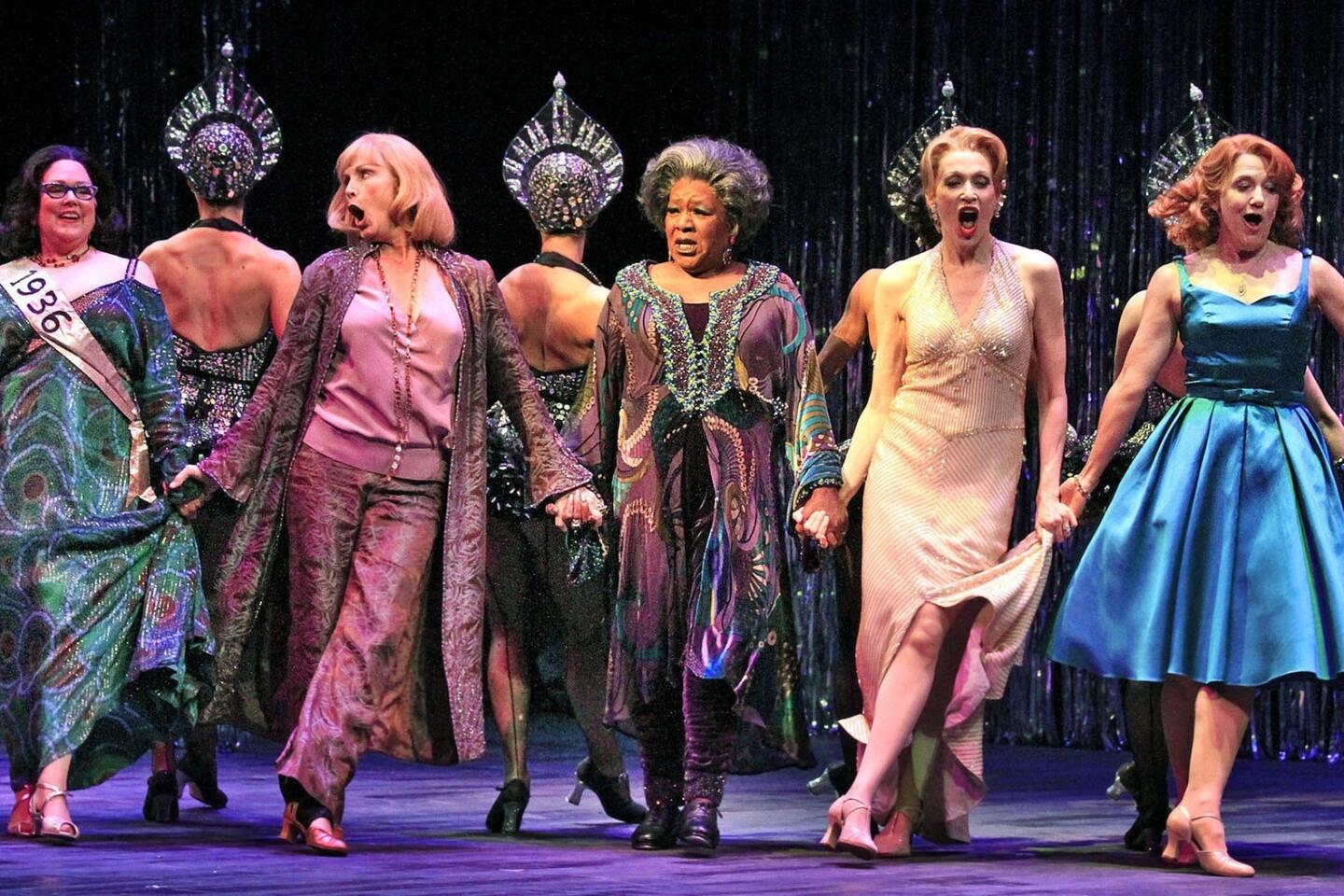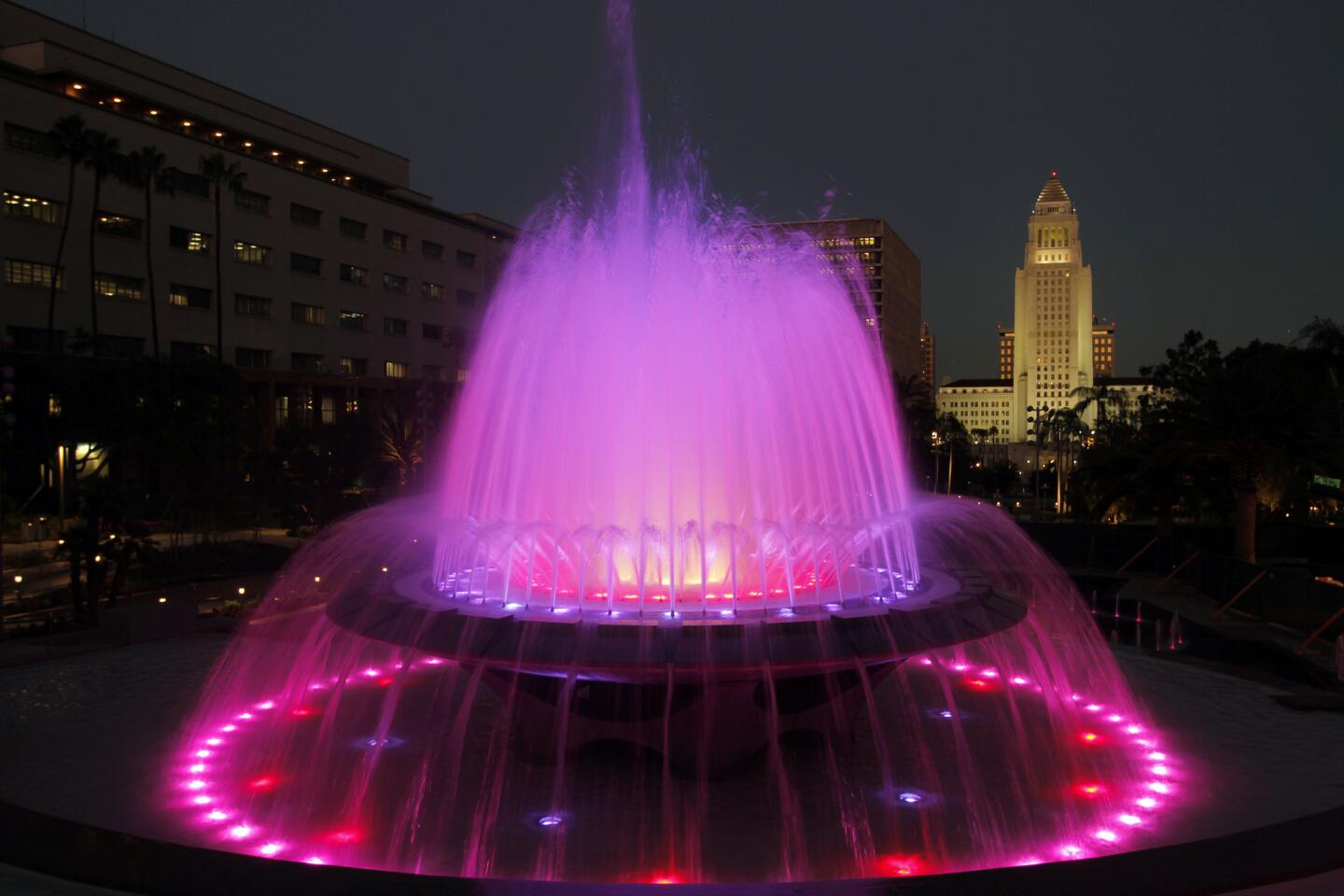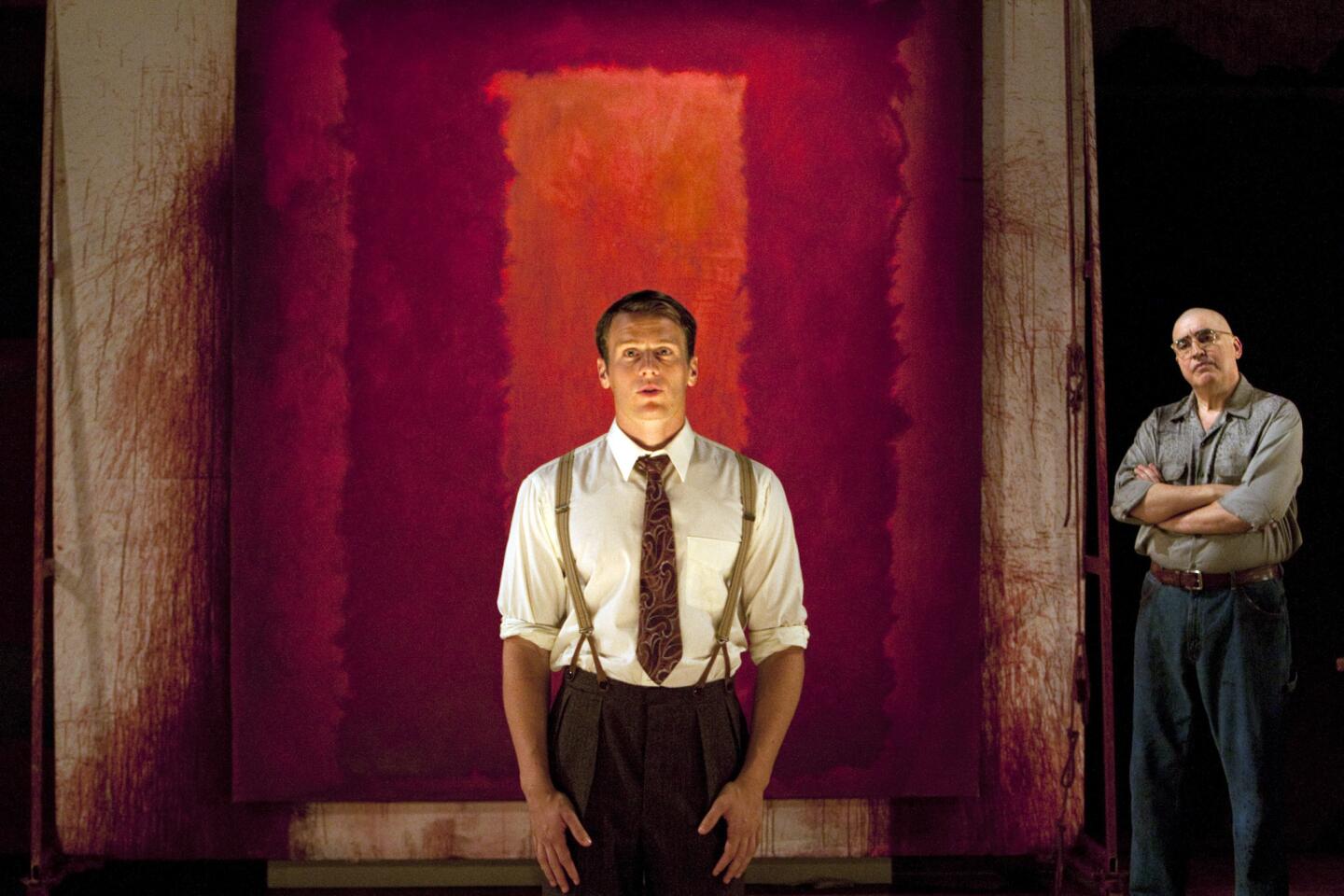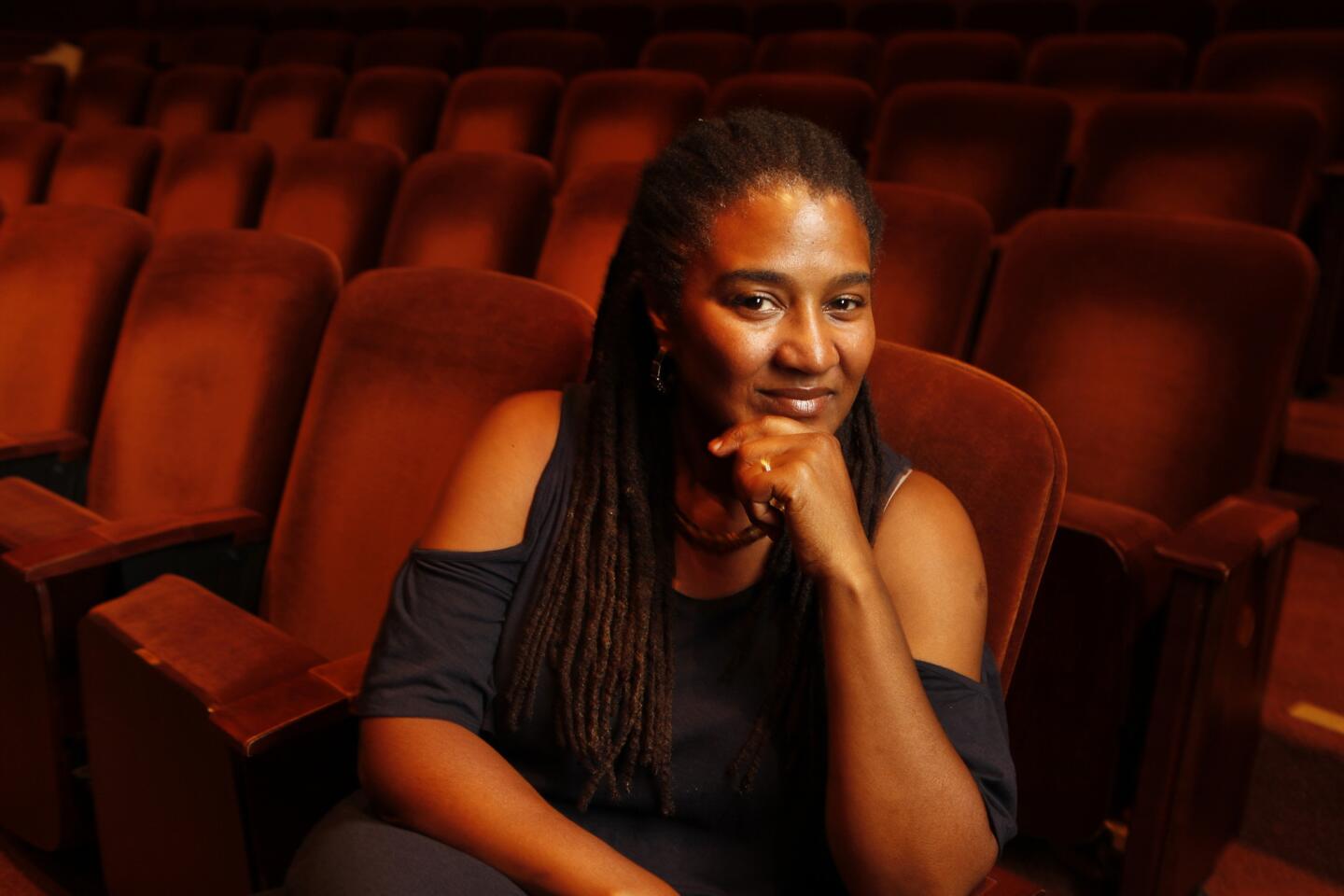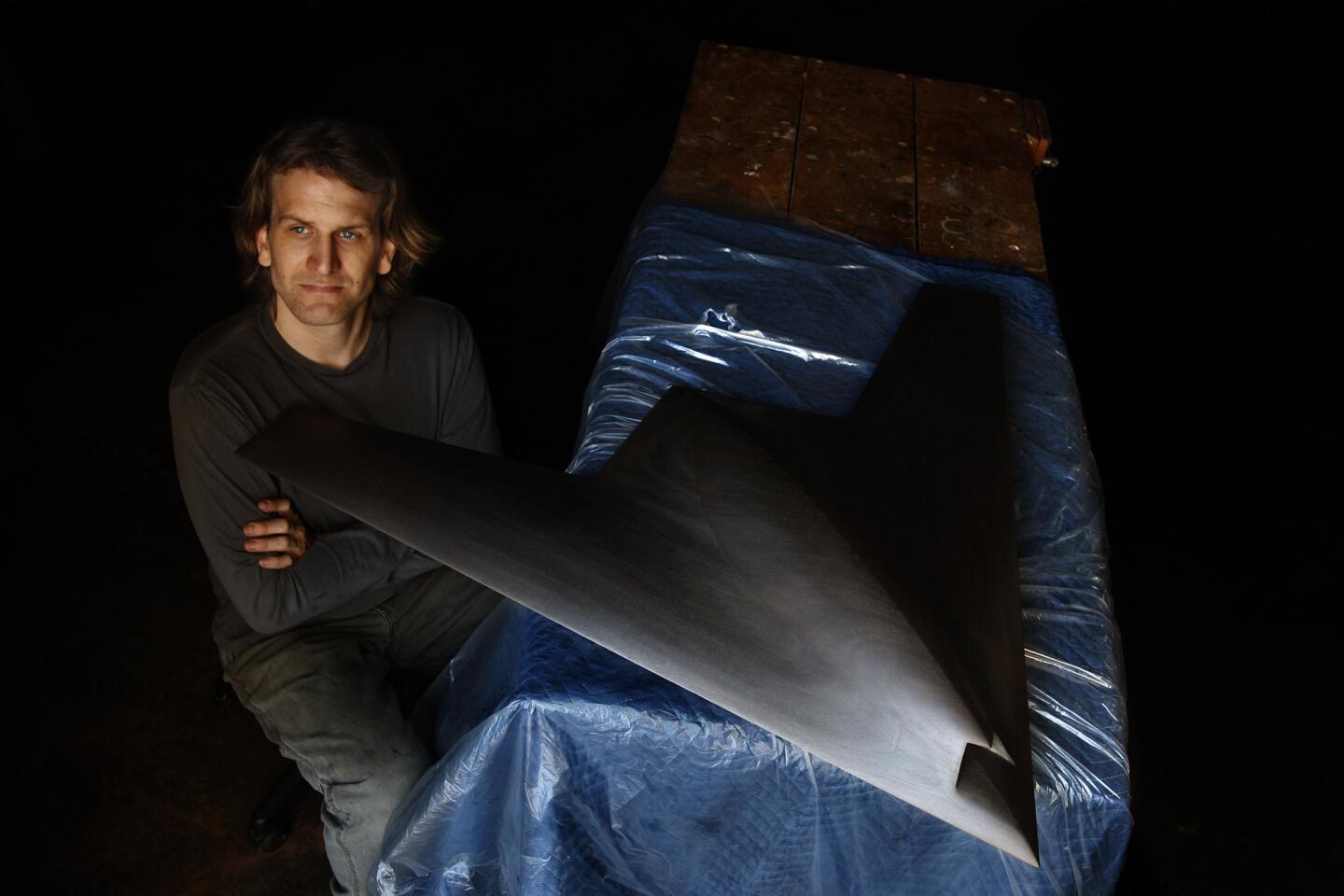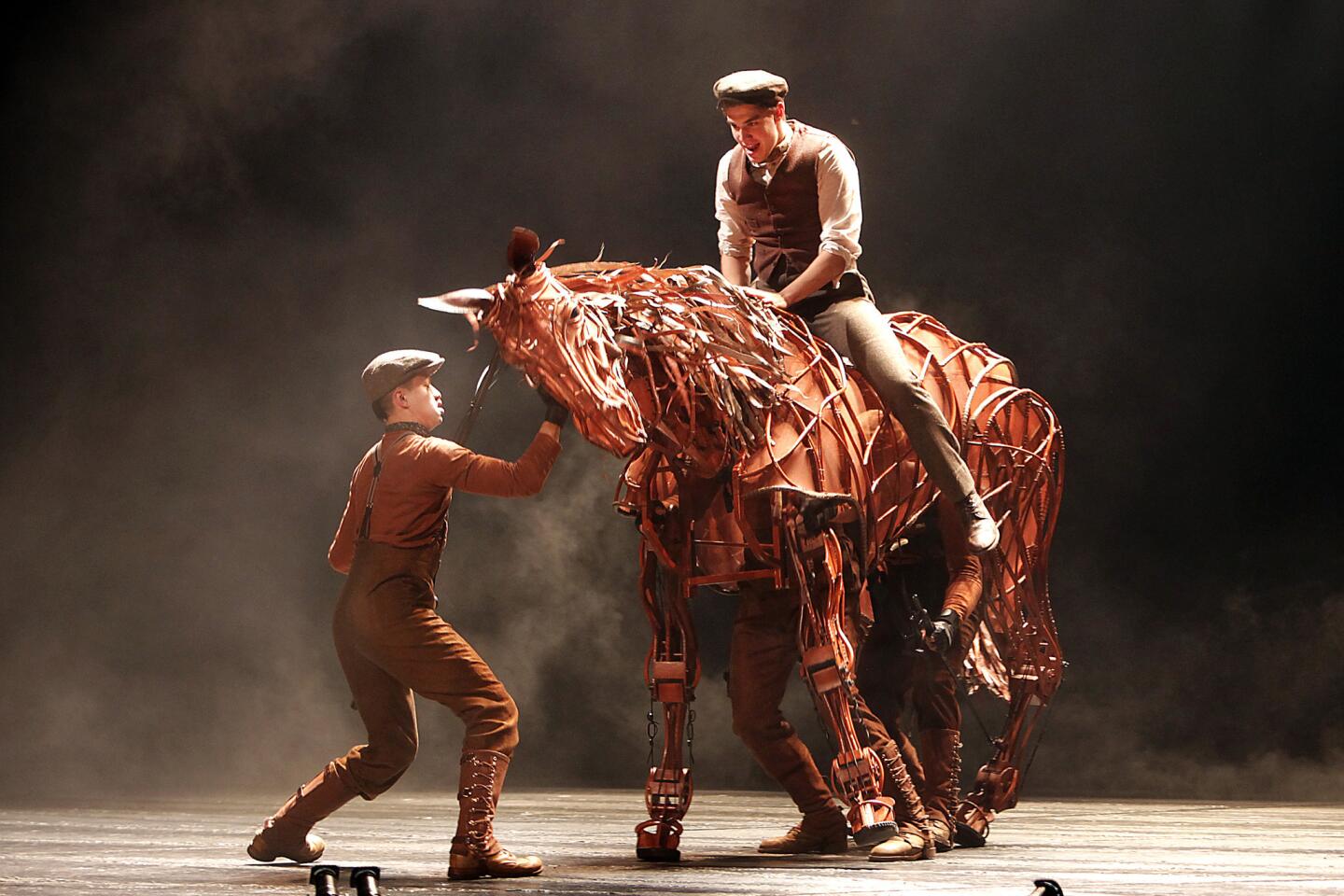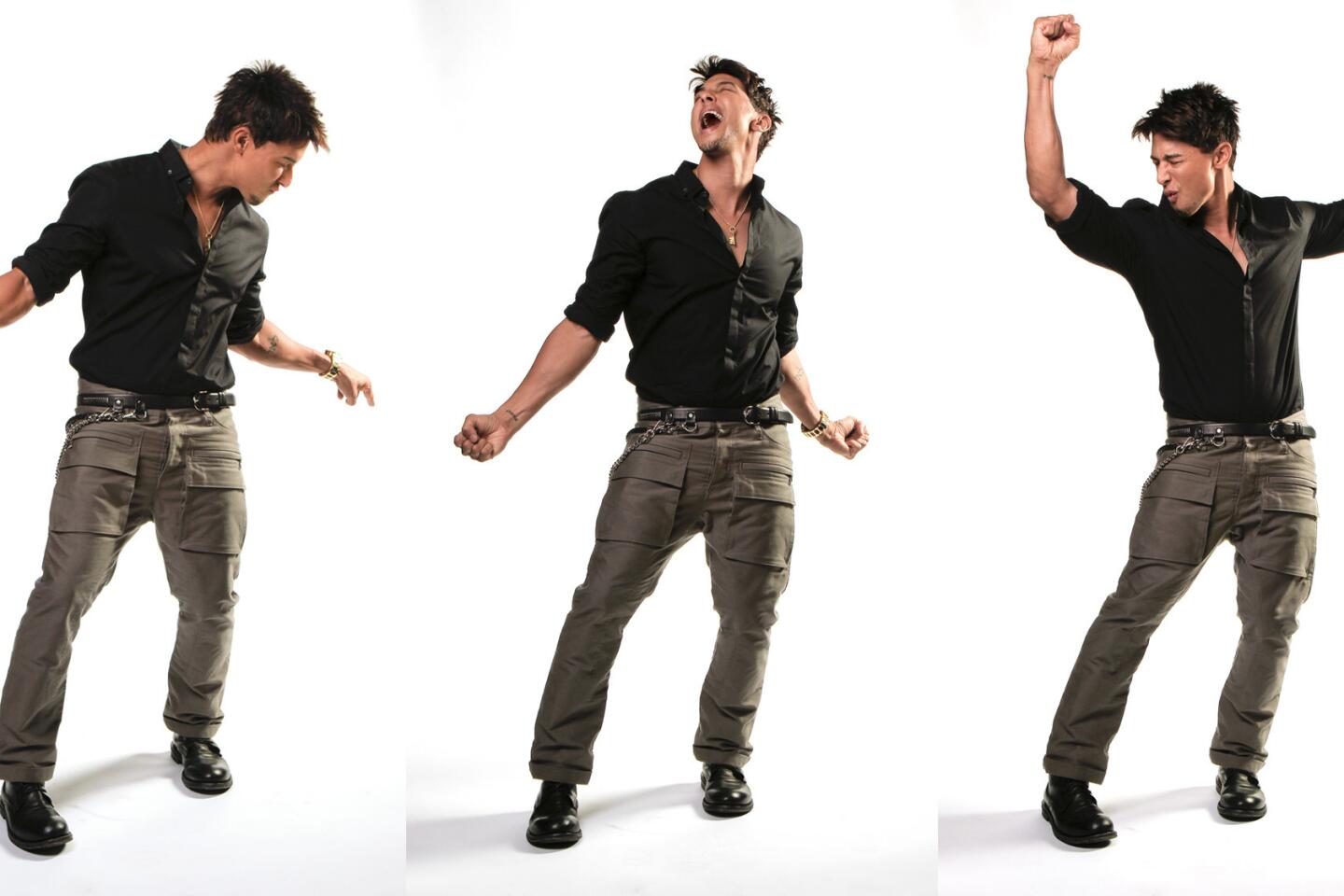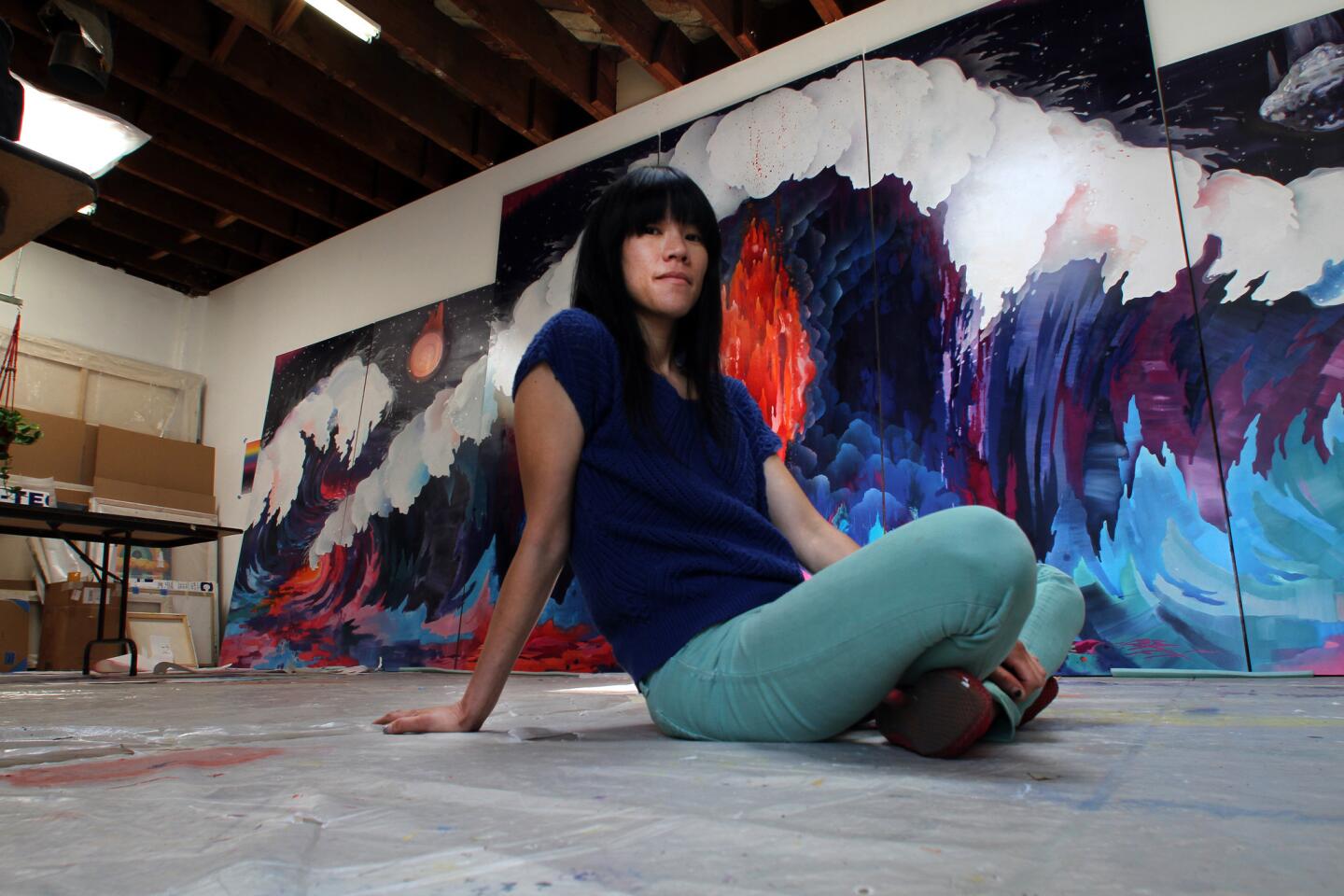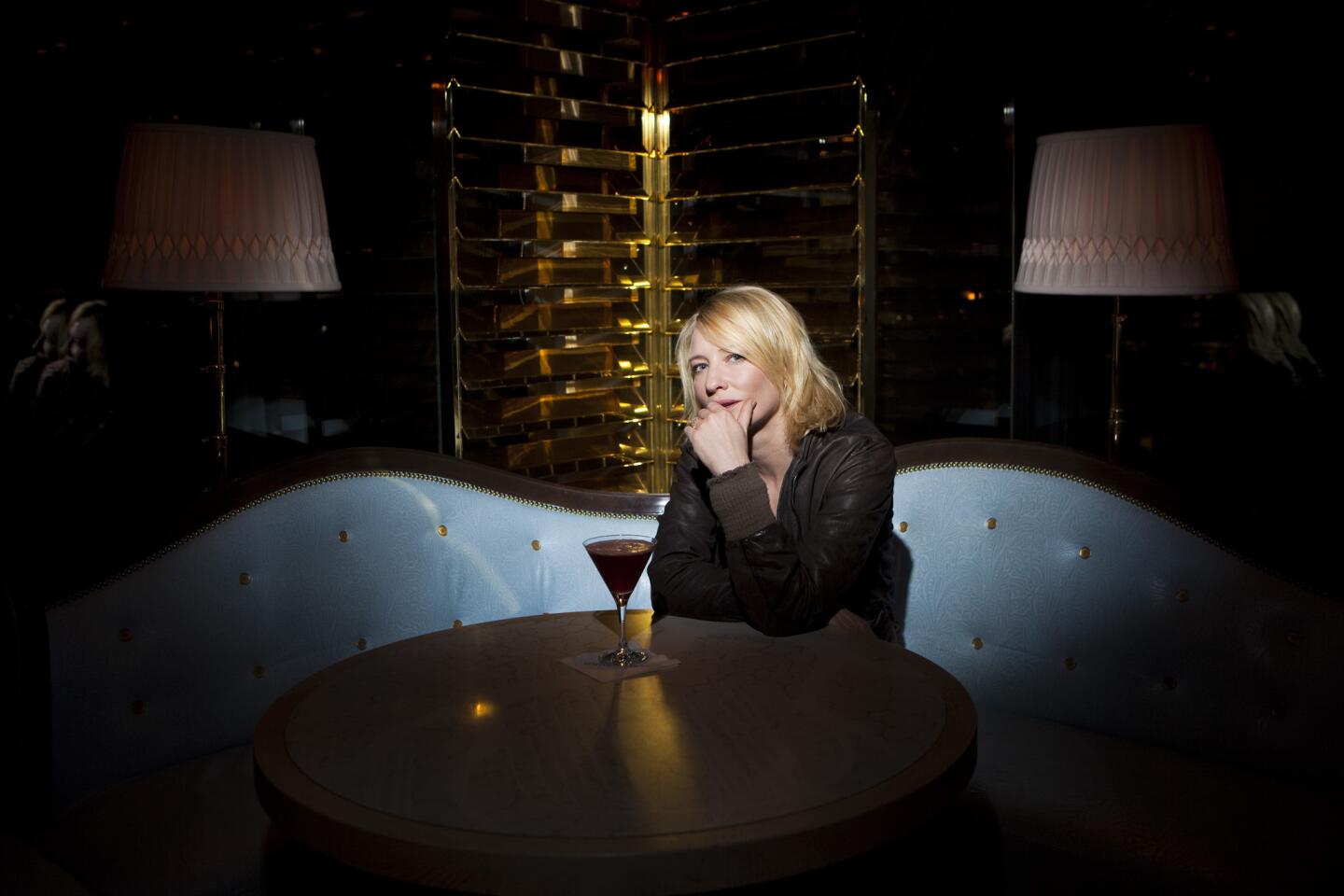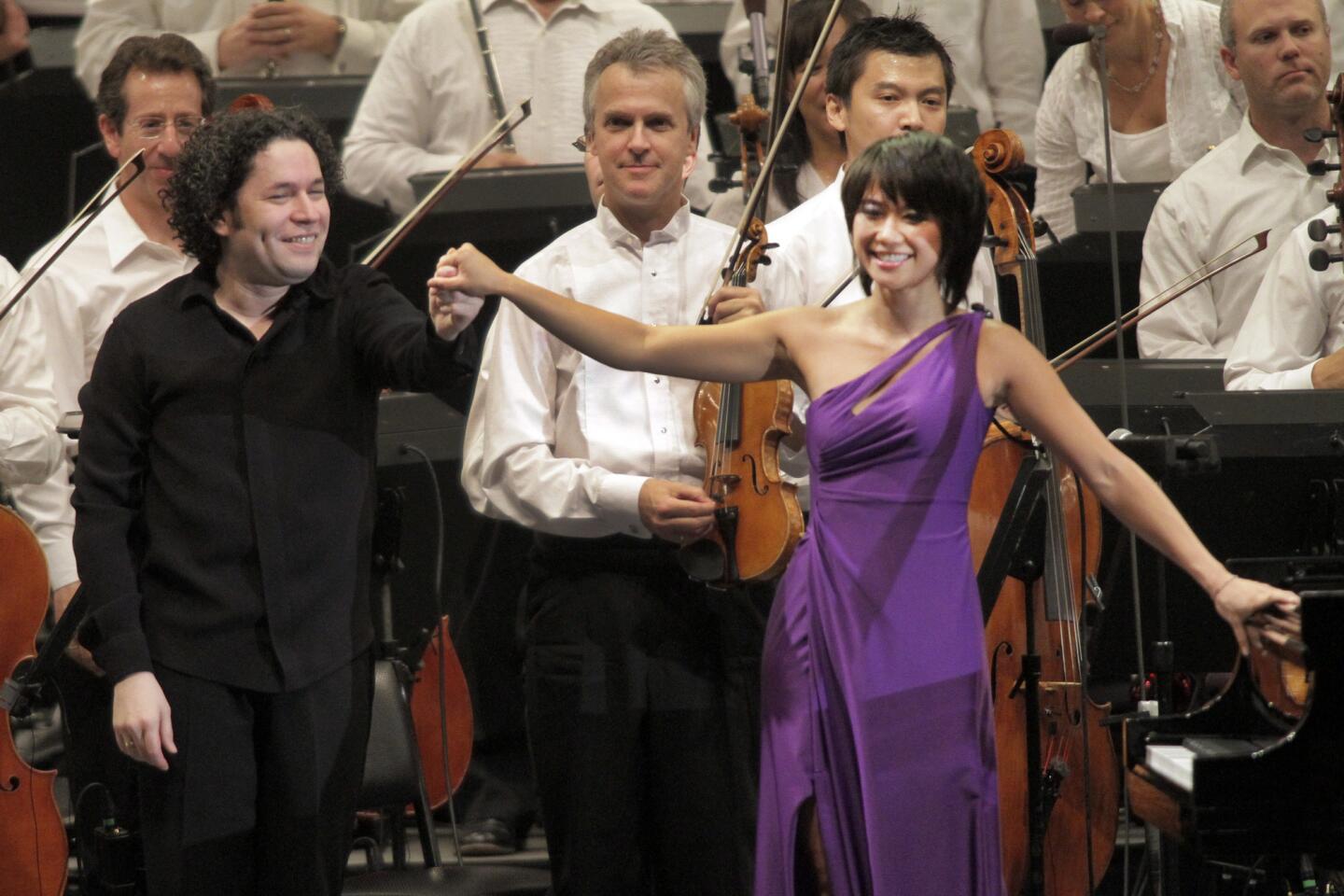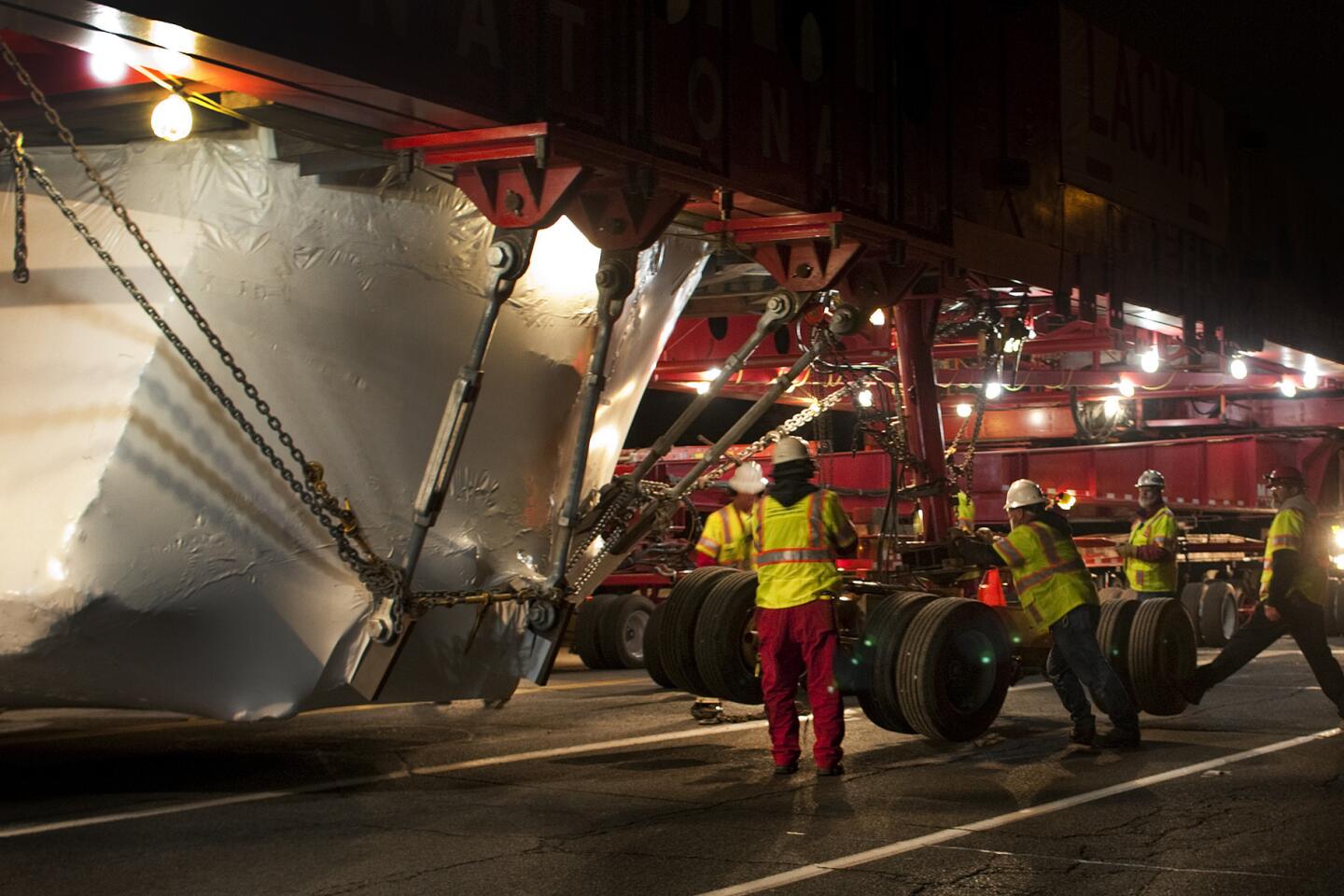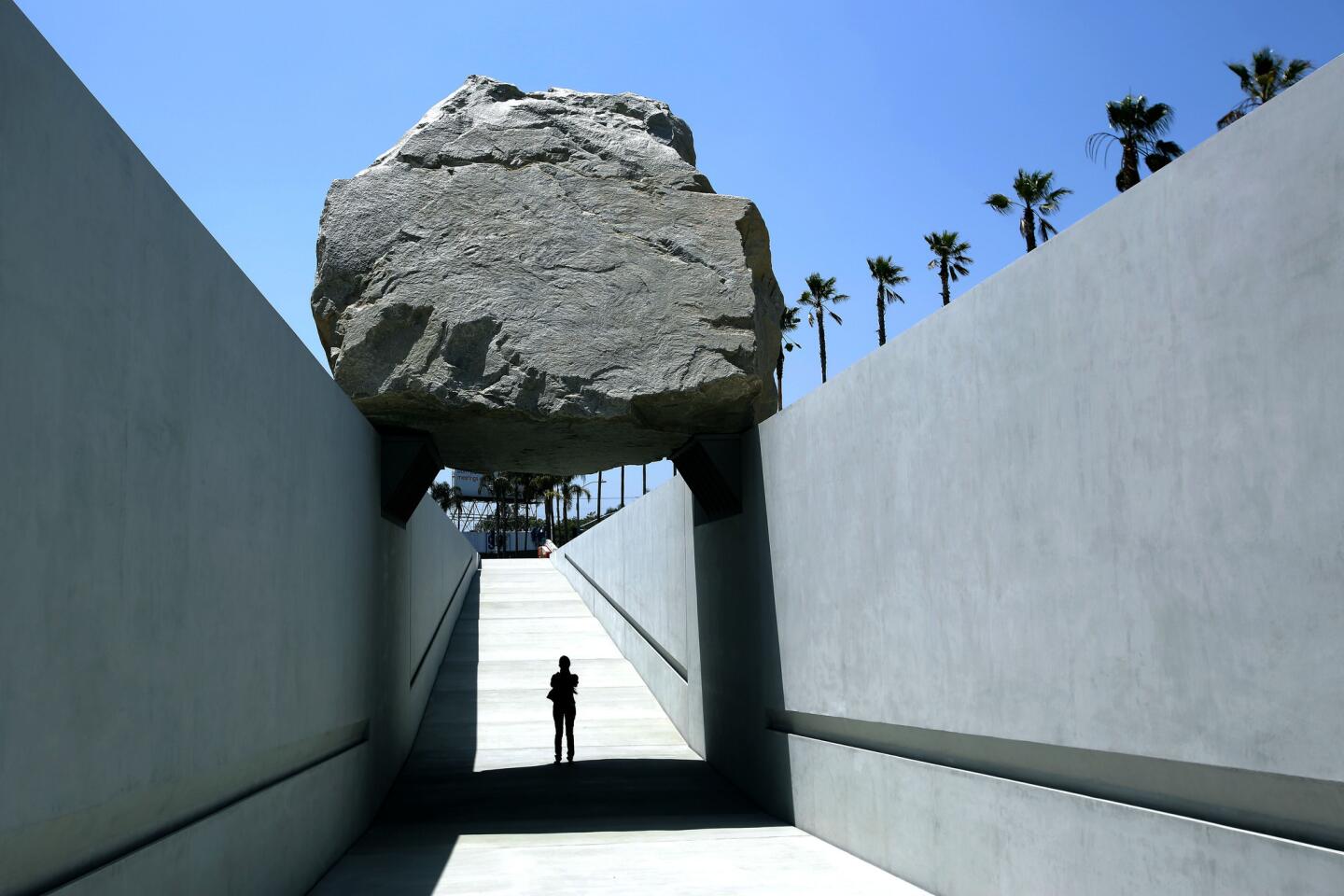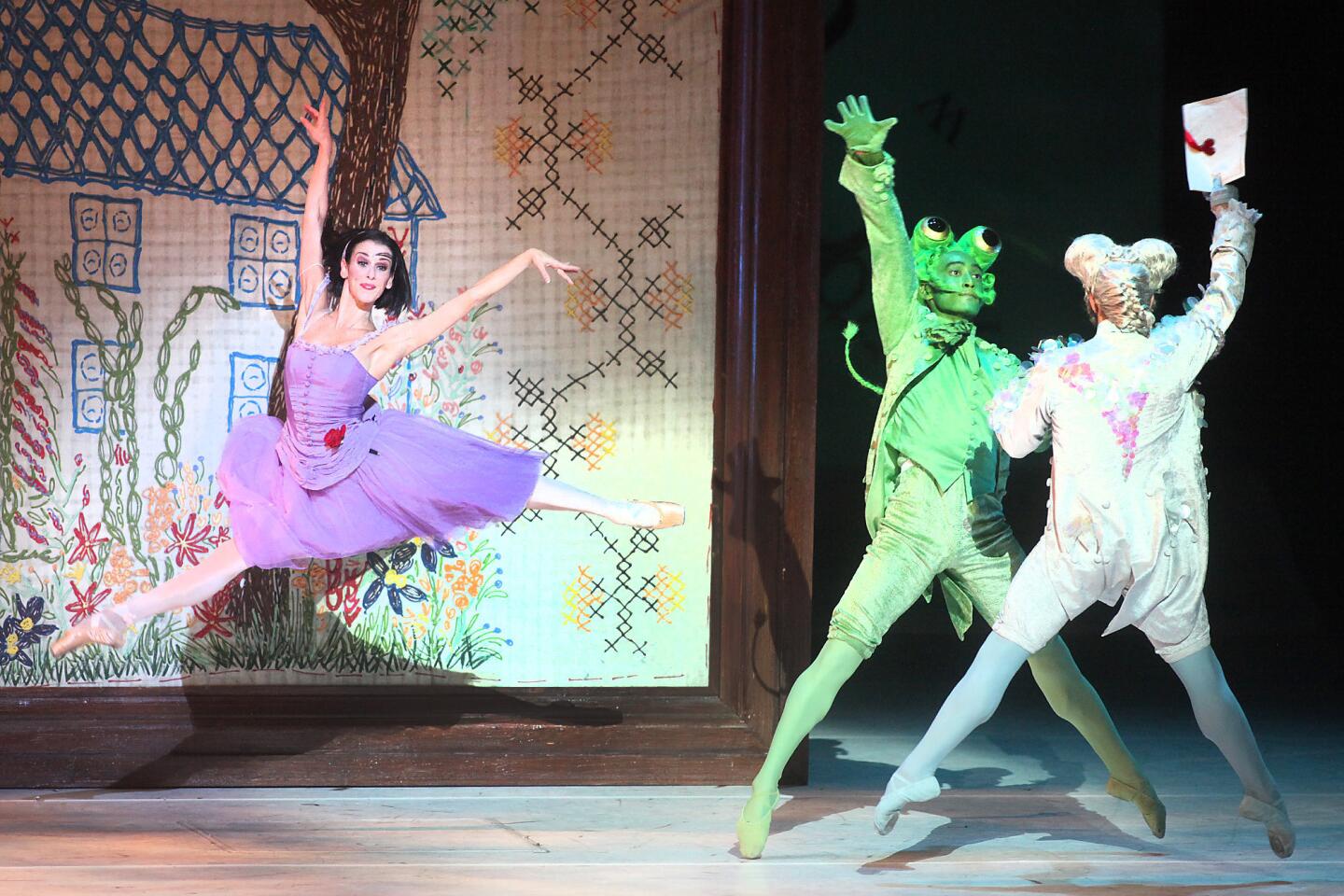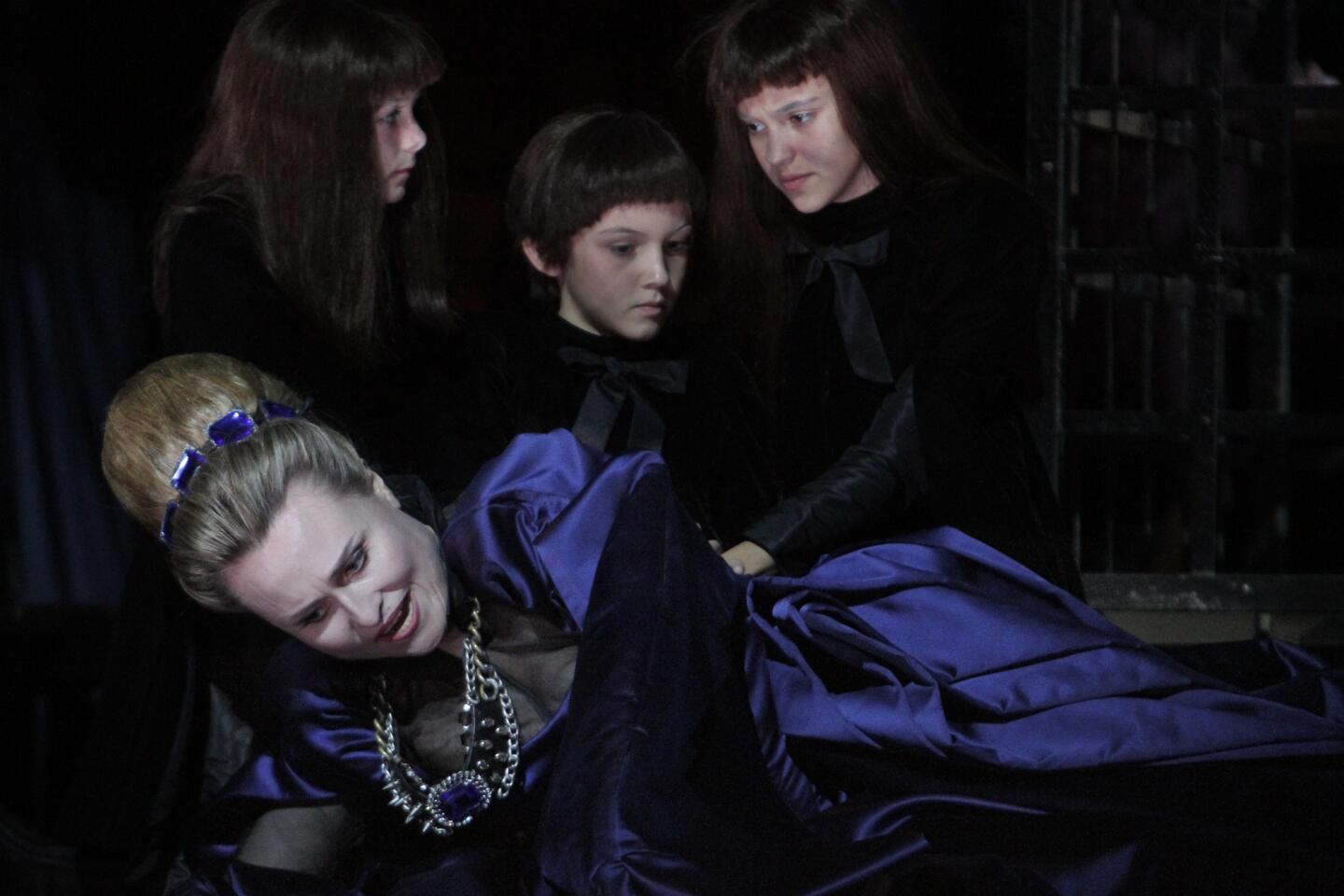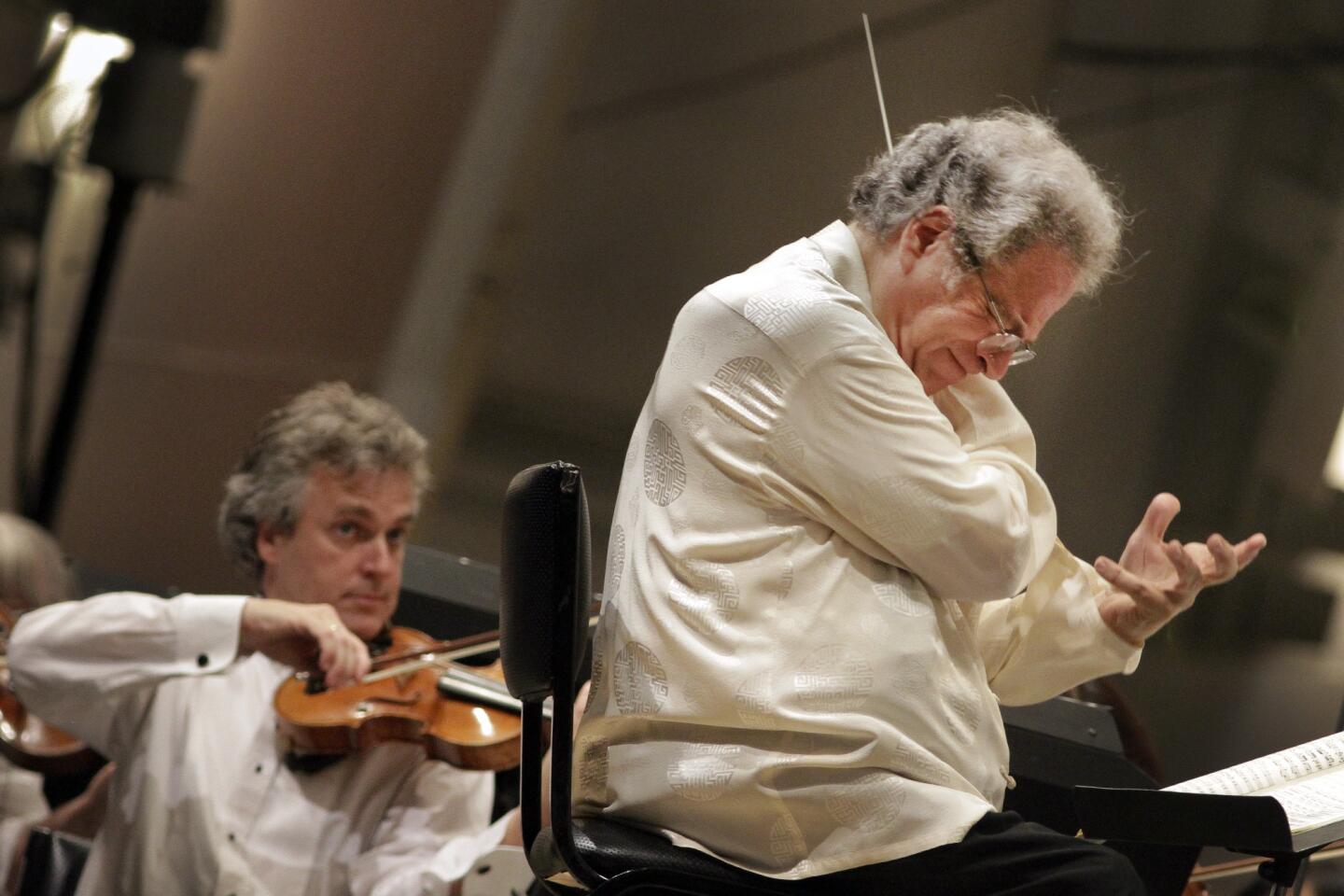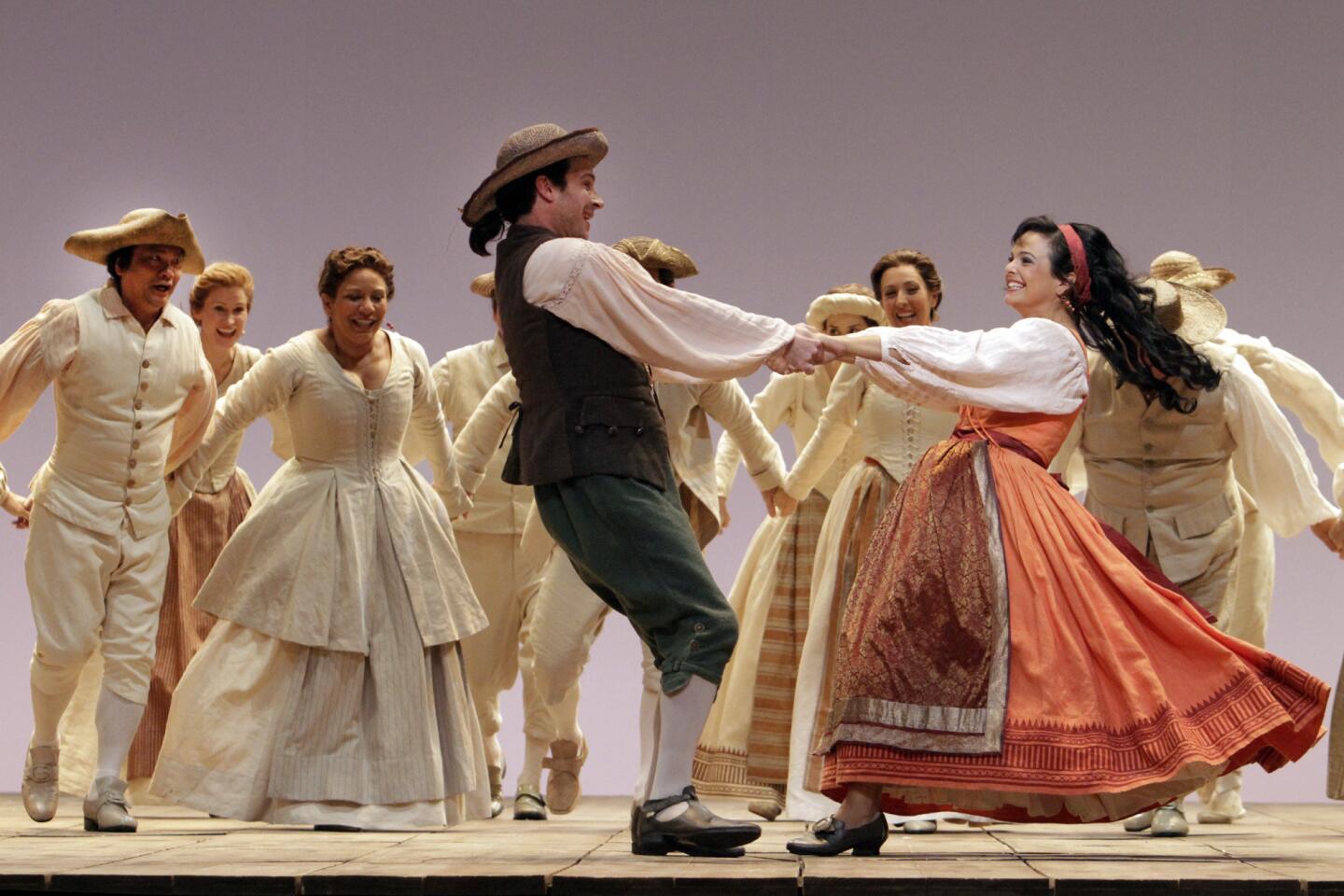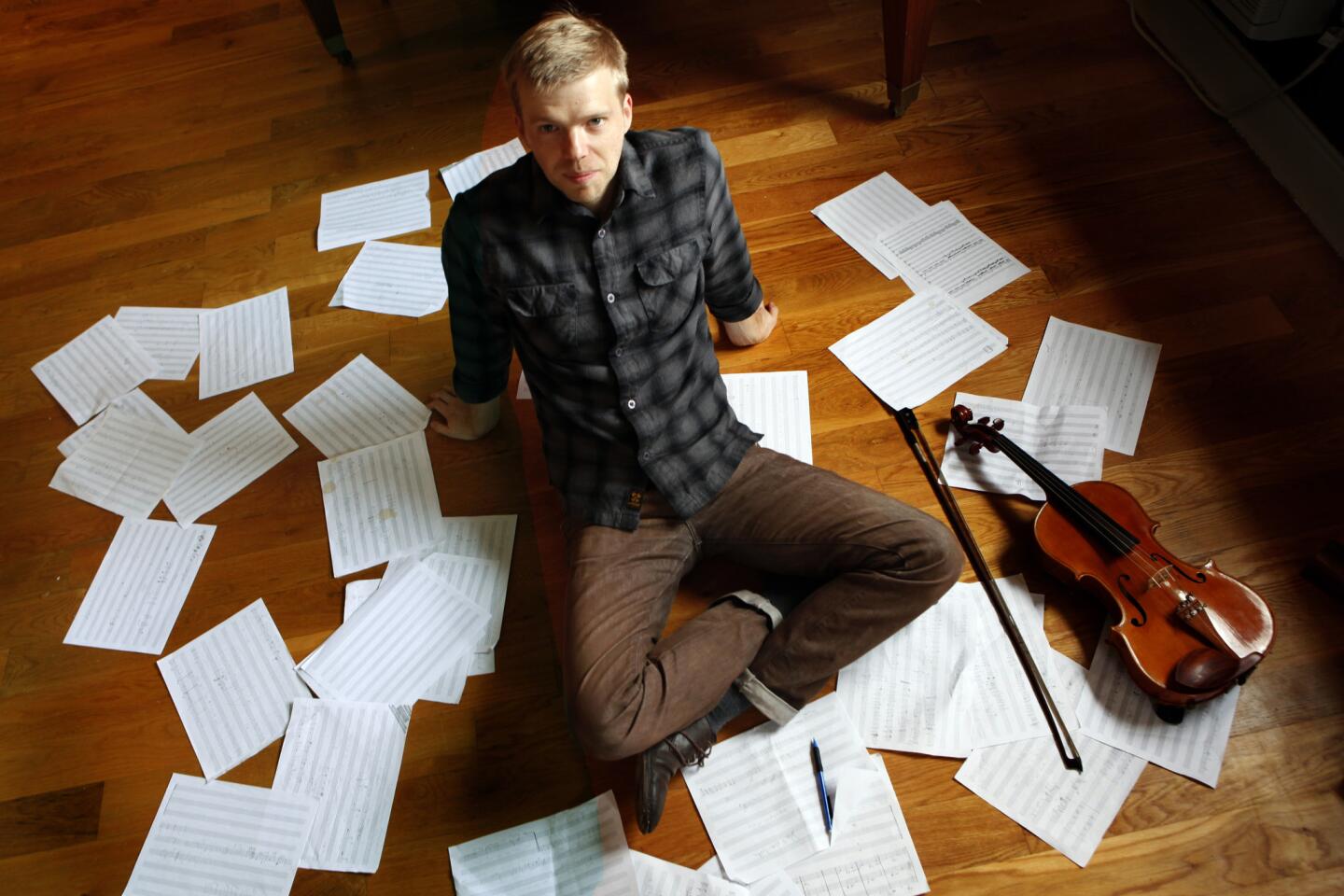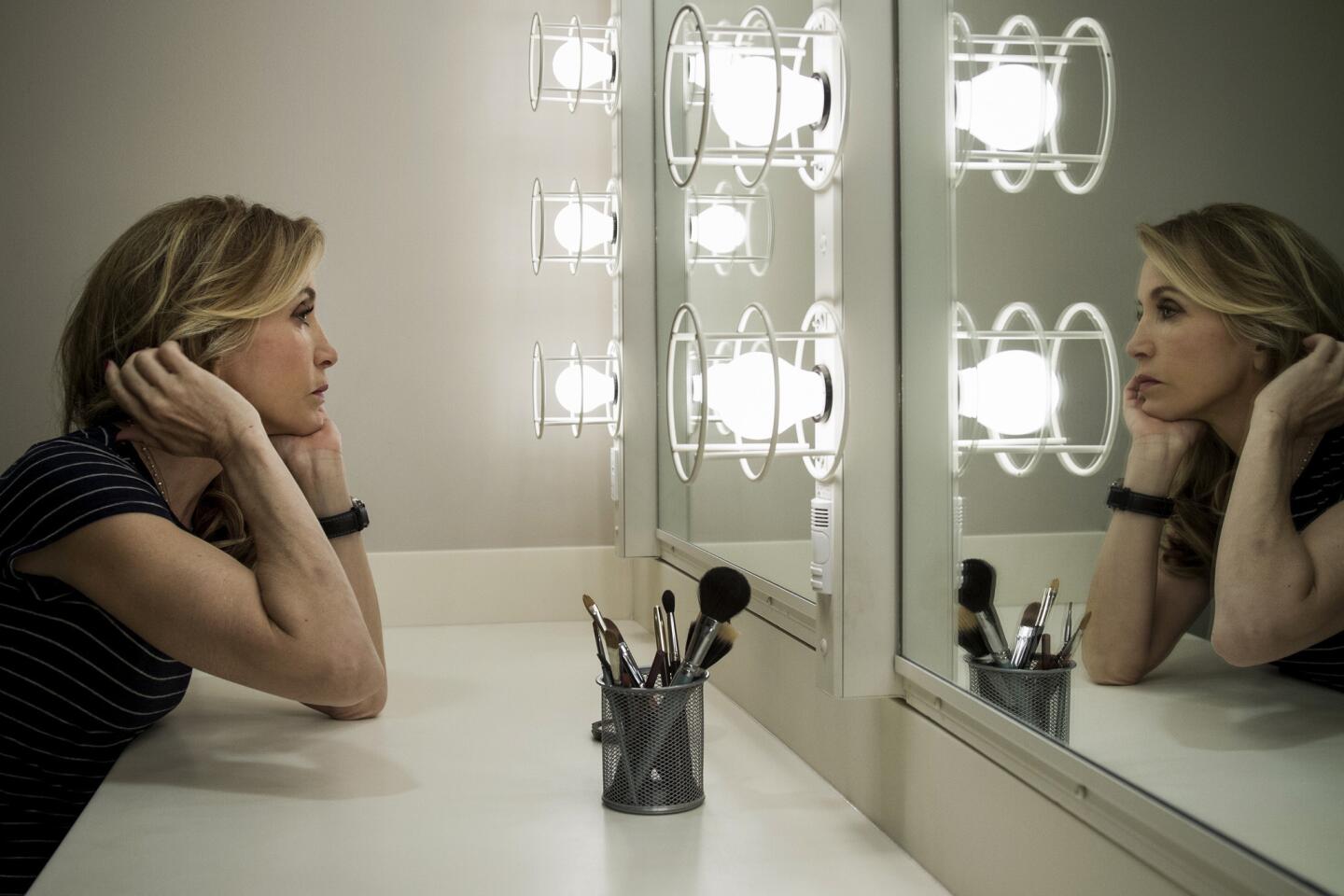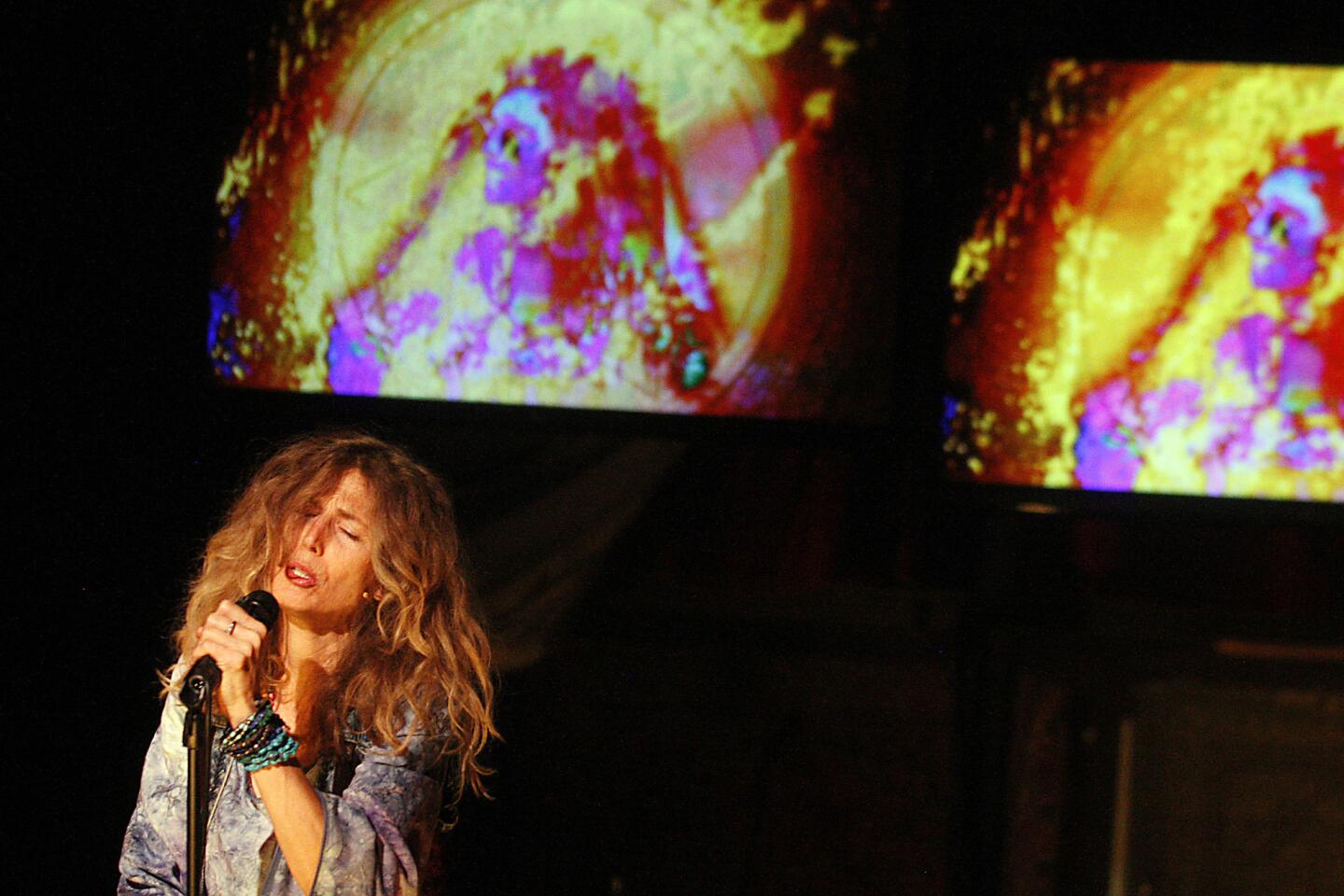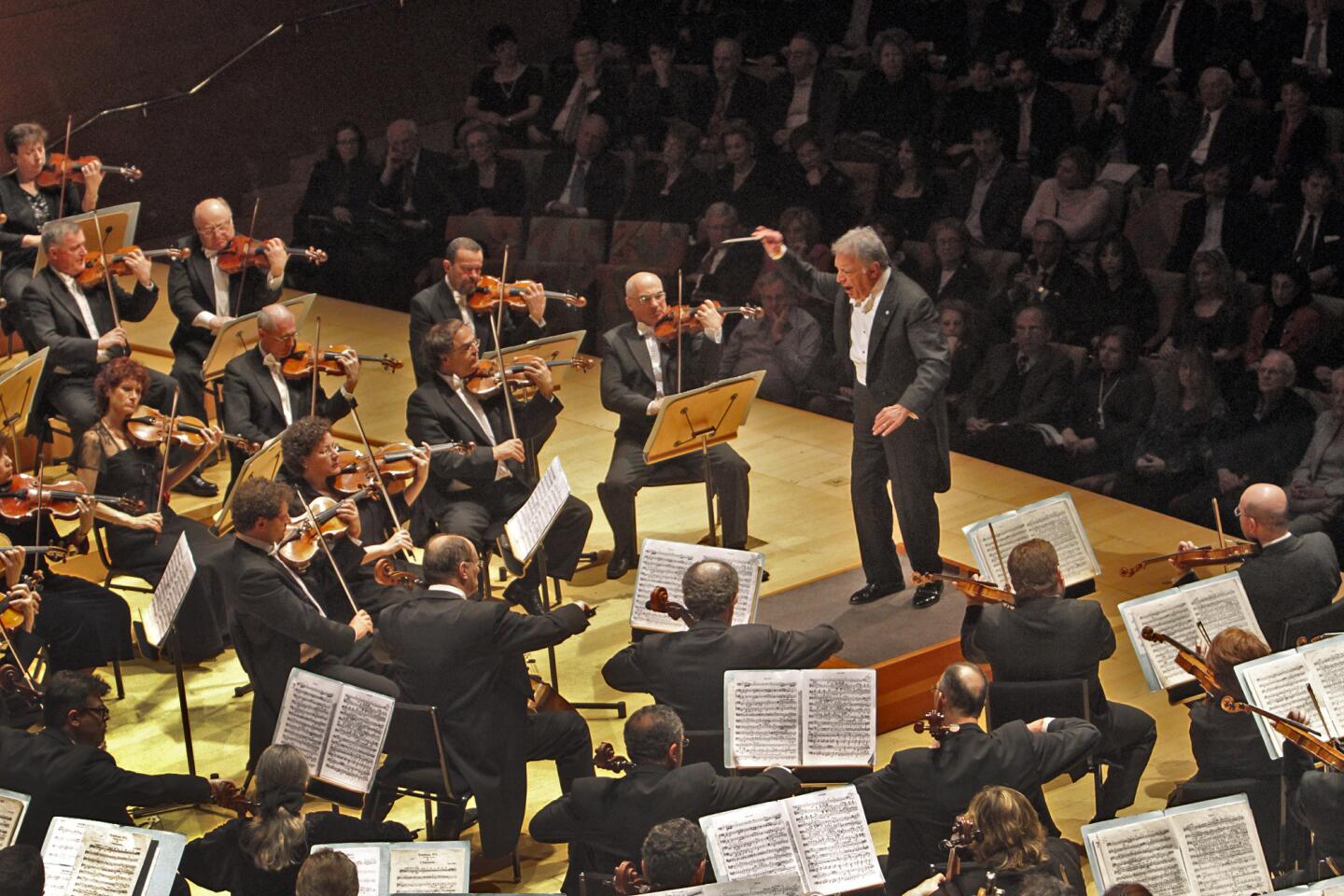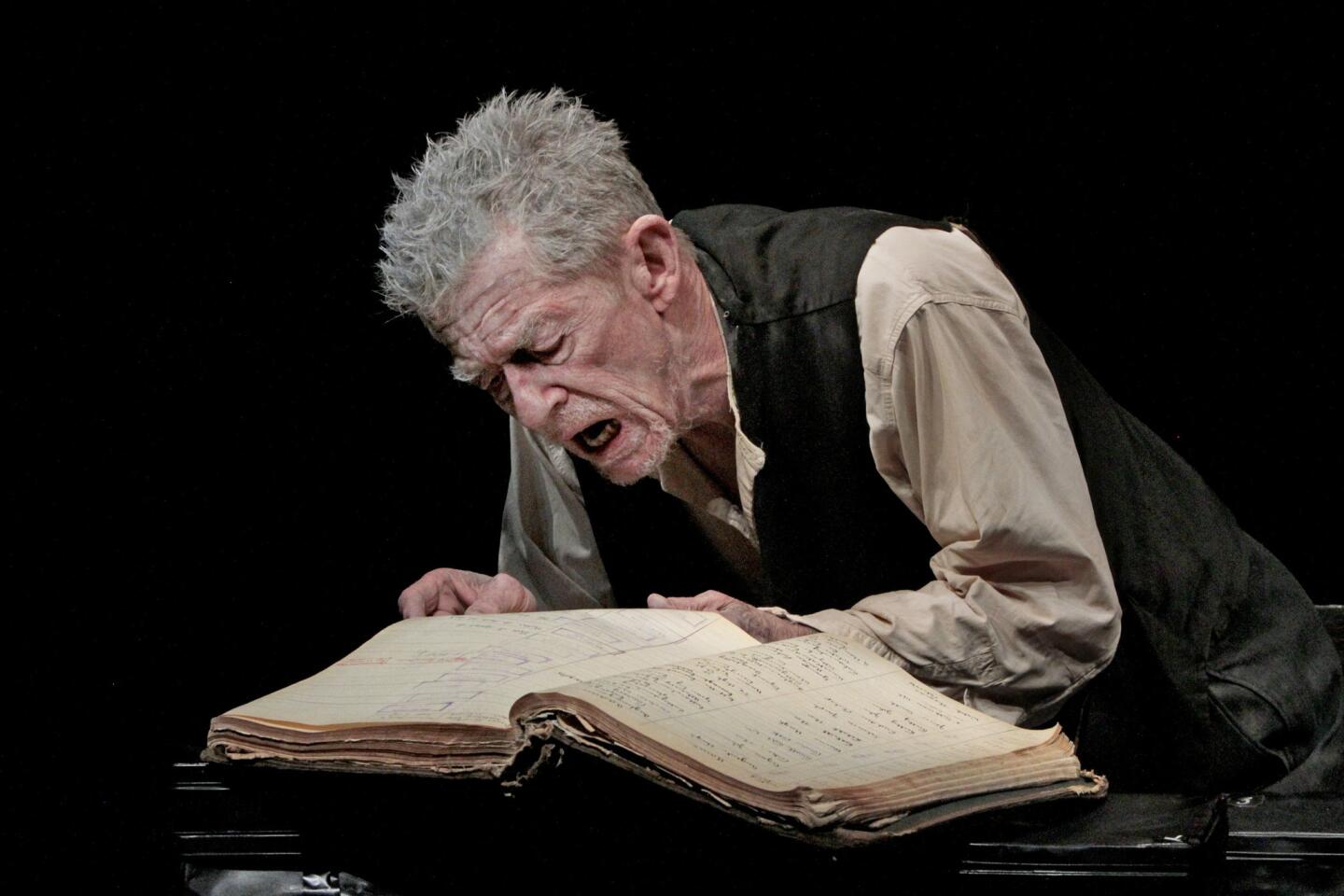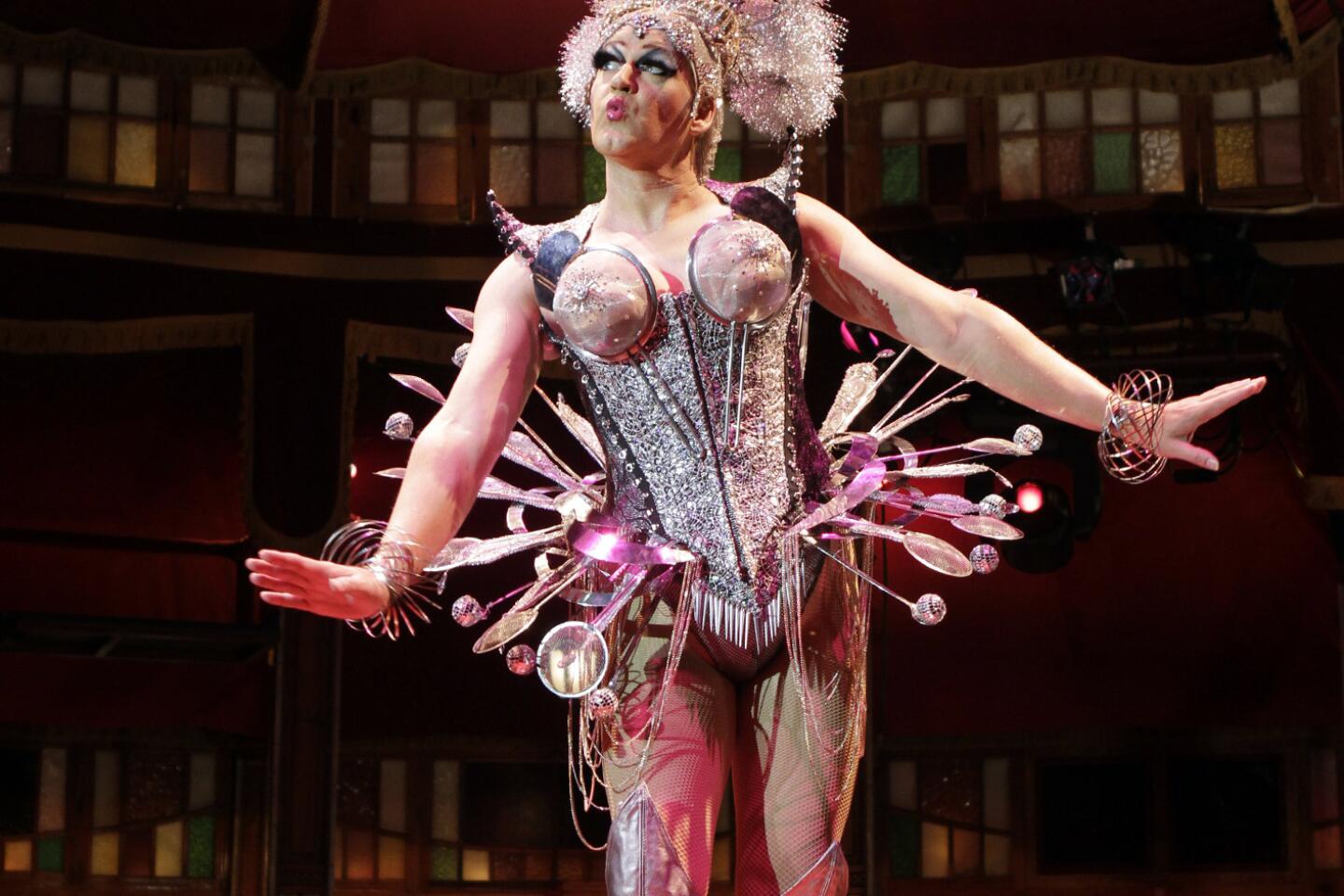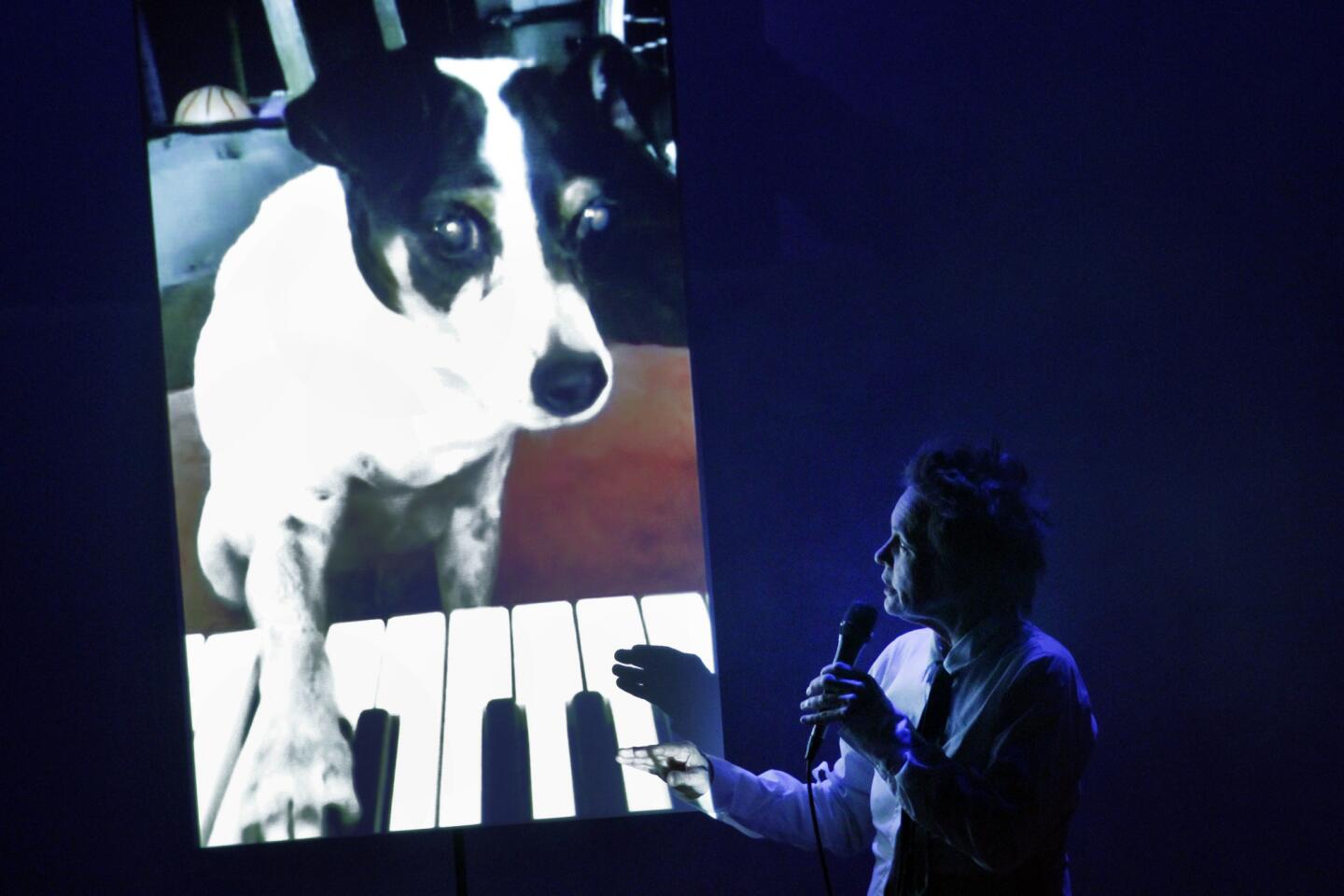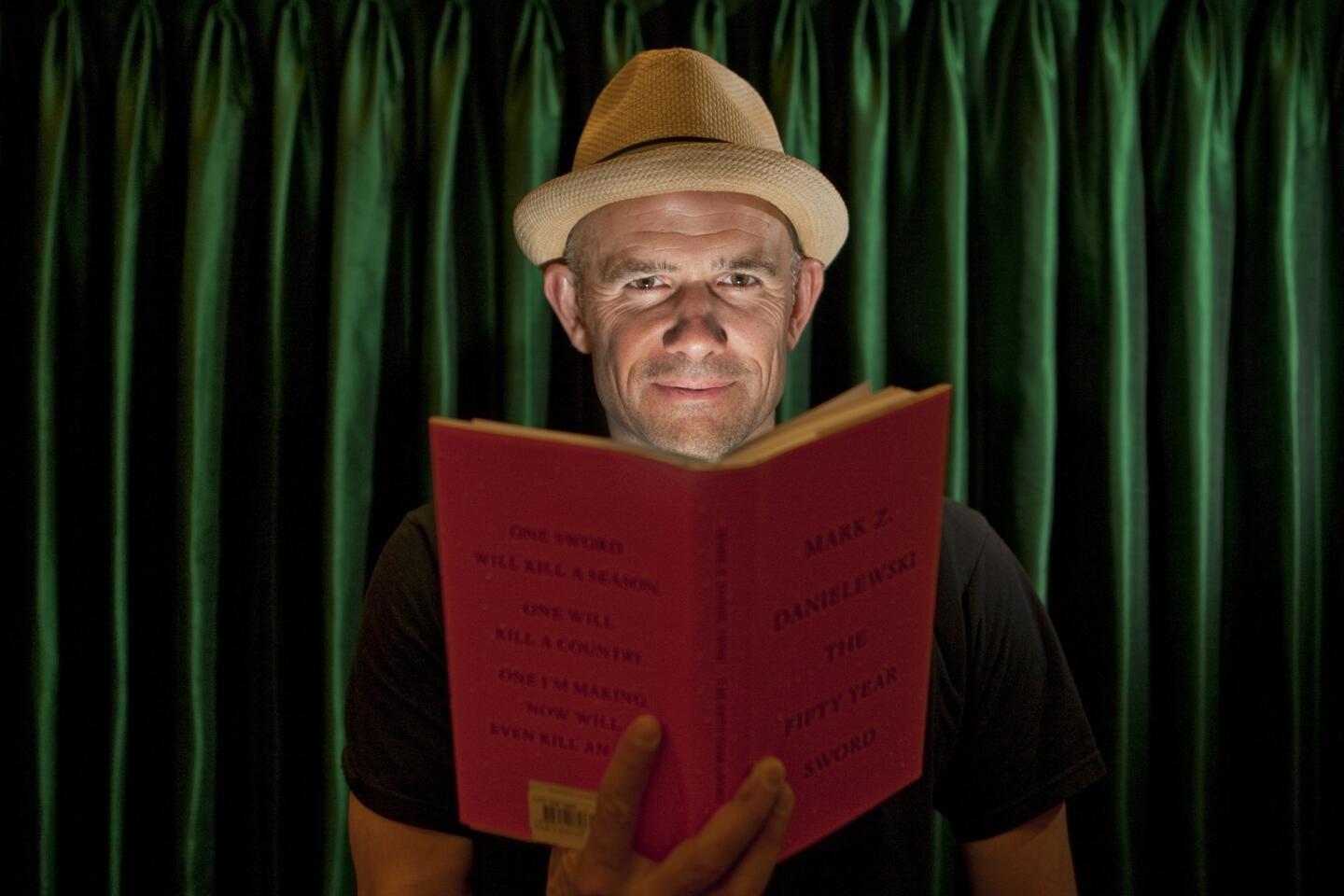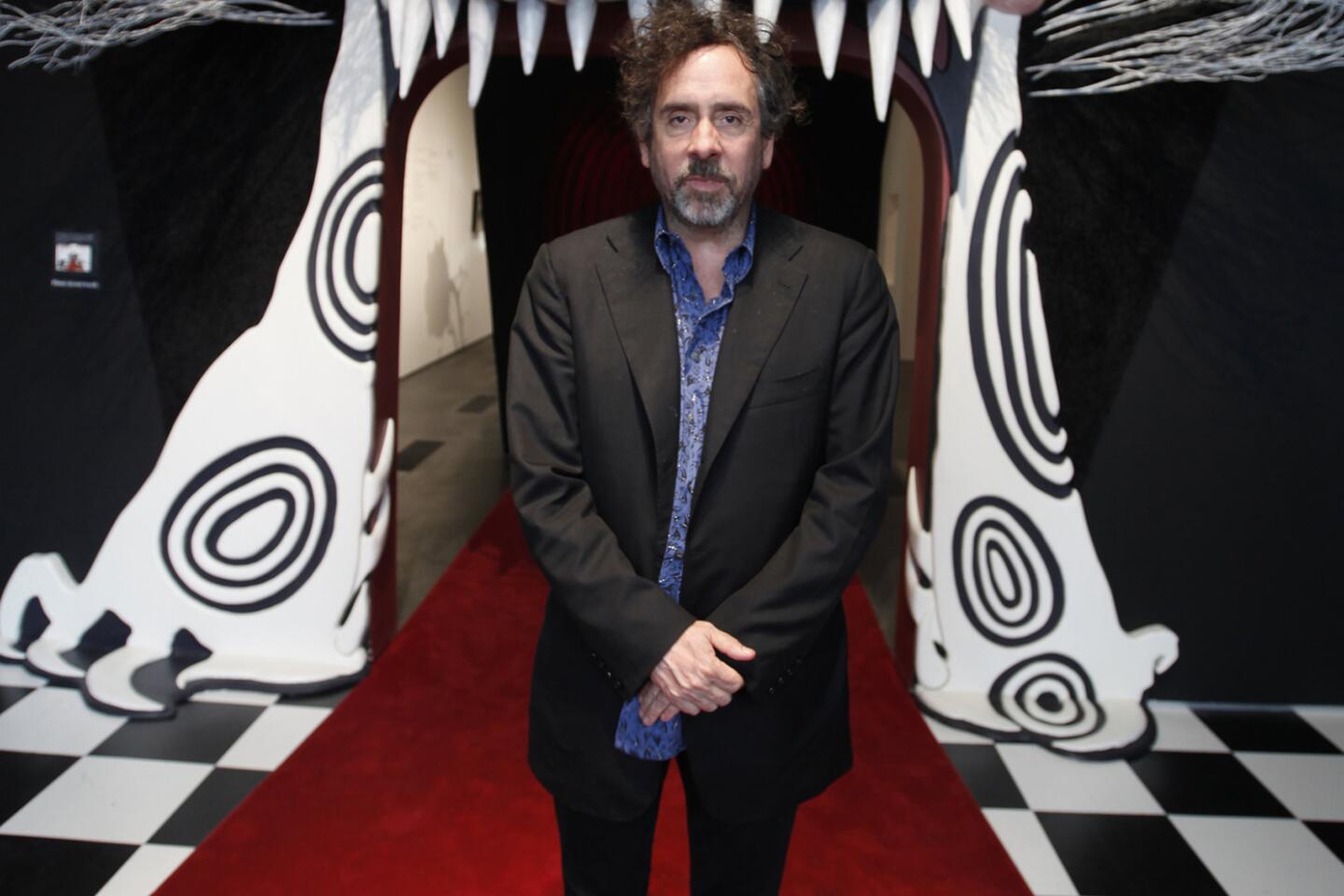‘Labour and Wait’ displays the melding of art and craft
SANTA BARBARA — Speaking recently to a sold-out crowd at the Santa Barbara Museum of Art, noted British ceramic artist Grayson Perry held forth as his alter ego, Claire, in a pageboy blond bob and a satiny yellow frock dotted with cheerful coffee mugs. Asked if he had faced difficulties being accepted by the art world, he deadpanned, “The art world had more problems with my working in ceramics than being a transvestite.”
Laughter erupted in the auditorium, acknowledging what many know: There’s plenty of snobbery against those who work with their hands in the fields traditionally known as “crafts.”
The discourse of art versus craft and how the worlds are melding underlies “Labour and Wait” (through Sept. 22), a whimsical exhibition at the museum to which Perry contributed three vases and a tapestry.
“In the last 10 years, I’ve noticed that a lot of craft has been popping up in contemporary art, using ceramics, weaving, woodcrafting and other things normally associated with craft,” said exhibition curator Julie Joyce, the museum’s head of contemporary art. “Also, the idea of the handcrafted has become very popular.”
PHOTOS: Arts and culture in pictures by The Times
Her show features self-consciously crafted work that crosses boundaries and addresses the place of the handmade in contemporary society. The 18 artists, some working in tandem, work in glass, ceramics, lace, quilting, sculpture and video. They include the well known, such as Andrea Bowers, Theaster Gates and Tim Hawkinson, to those less familiar, such as Tonico Lemos Auad, Wim Delvoye and Ricky Swallow — all based in the United States or Europe.
Historically, the show references the Arts and Crafts movements in Britain and the U.S., themselves a reaction to the perceived loss of individual creativity and autonomy resulting from the Industrial Revolution. An undercurrent here is the question: Do we live a similar era, when mass production, mass media and mass communications are eroding our sense of uniqueness and purpose?
The title of the show comes from a 19th century poem by Henry Wadsworth Longfellow, “Still achieving, still pursuing,/ Learn to labor and to wait.” (Joyce decided to spell “labour” the British way to give it a period spin.)
Perry is keenly aware of history in general and art history in particular, and he often references them in his work. “We’re in the business of visual culture,” he said in a subsequent interview. “So you’ve got to have a handle on it, all of it.”
He joked about going to museums and copying what he likes. Thus his vases take on shapes borrowed from Chinese and Islamic pottery, but then he covers them with modern, fractured narratives in a cartoonish style, sometimes about politics and sex.
CHEAT SHEET: Spring Arts Preview
“You Are Here,” made for an exhibition he curated at the British Museum in 2011, shows museum-goers arriving and saying in bubble-balloons, “There was such a buzz about it on Twitter” and “I had a free ticket.” Perry has won over the art world: In 2003, he won Britain’s coveted Turner Prize, the first ceramic artist to do so.
He is also creating large-scale tapestries, woven in Belgium from his designs. The show includes the 15-foot-wide “Map of Truths and Beliefs,” a riotous landscape of sacred mountains and other sites, featuring everything from Angkor Wat and Glastonbury to Las Vegas and Silicon Valley. Admittedly, one reason he’s turning to this medium is to create multiples to sell, whereas the vases are handmade and he can produce only up to two dozen a year.
Still, “I think when people see the work, they naturally know it’s taken a long time to make,” he said. “The object gives off that energy, and that’s an important thing.”
“Labour and Wait” offers other discoveries. Several artists work in wood, for example, but in unexpected ways.
“Stockpile” by Allison Smith is a towering assemblage of unfinished wooden furniture in an early American style. There are crates and barrels, desks and shelves, benches and stools purchased as ready-made objects or assembled from kits, plus pieces she has made. The work seems to wallow in craft at its most banal and mass produced, but Smith wants us to consider the purpose and origins of these objects, now sometimes made abroad.
“In my work, I’m interested in questioning the things we project onto the notion of craftsmanship — ideas of authenticity, cultural identity,” said Smith, chair of sculpture at California College of the Arts in the Bay Area. The piling up is meant to suggest someone stockpiling these types of objects “as if the idea of early American nationalism is in danger of extinction.”
On the other hand, Swallow shows off prodigious handcraft by replicating mundane objects in unfinished wood — “Sleeping Range” is a scale replica of a mummy-style sleeping bag and “Come Together” a bean-bag chair. The latter is also a memento mori, a reminder of mortality, with its wooden human skull tucked into the seat of the chair.
The Australian began working in wood when he moved to Los Angeles in 2002, and these two pieces were shaped with chisels and handsaws. “For the most part I purposely avoided power saws because I felt they were a shortcut,” he said, “and they didn’t assist in understanding what I was doing, in understanding the form.”
Nearly every visitor to the exhibition pauses in awe before these sculptures. Swallow admitted that he strives to make beautiful work. “If the detail or the physicality draws you in,” he said, “you spend a longer time with the piece. For me, the best quality of a work of art is that it can hold you captive for a while.”
More to Read
The biggest entertainment stories
Get our big stories about Hollywood, film, television, music, arts, culture and more right in your inbox as soon as they publish.
You may occasionally receive promotional content from the Los Angeles Times.
